- International edition
- Australia edition
- Europe edition


‘A Yellowstone for Europe’: Romania’s ambition for a vast new wilderness reserve
A project to create Europe’s largest forested national park aims to protect 200,000 hectares of wilderness as well as boost ecotourism in support of local communities
U p on the hill we spy them: dark, imposing forms moving through the dense forest. It’s a group of bison wandering wild in Romania’s Făgăraș mountains. I stand silently with my guide Răzvan Dumitrache as the animals graze.
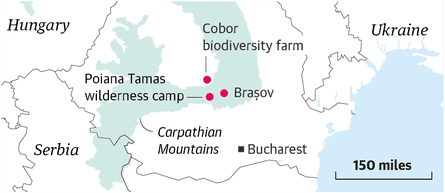
This area of Transylvania, at the southern edge of the Carpathian mountains, is among the wildest places in Europe. Brown bears, wolves and lynx roam the forested hillsides – and bison were recently reintroduced after a 200-year absence as part of the work of Foundation Conservation Carpathia . FCC’s ambitions are not small: it aims to create the continent’s largest forested national park. A 200,000- hectare (500,000-acre) wilderness reserve. A Yellowstone for Europe.
“The idea is for a park that will not only protect forests and wildlife, but also support local communities with ecotourism and nature-positive businesses,” says Răzvan.
Romania has more than 6m hectares of forest, of which a significant portion is still “virgin”, unfragmented areas with no human settlement, home to some of the few remaining sectors of old-growth forest in Europe. But illegal logging has cleared vast swathes of forest, and the destruction continues.
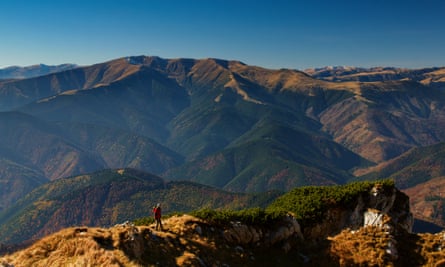
Since its inception in 2009, FCC’s biologist founders, Christoph and Barbara Promberger, and a team of philanthropists and conservationists, have been fundraising to purchase tracts of forests to stop logging – as well as buying areas to reforest. It’s a conservation model inspired by the Tompkins project in South America – with the goal being a vast park that’s “large enough to support significant numbers of large carnivores and to allow evolutionary processes to happen”.
So far, 26,900 hectares of forest and grassland have been bought and protected and more than 4m saplings planted. FCC rangers patrol 75,000 hectares, and this has led to a halt in logging in neighbouring forests too. In another innovative move, an FCC association has bought the hunting rights to an additional 78,000 hectares, to protect wildlife from trophy hunters.
Involving local communities, providing jobs and slowly bringing more visitors to the area is part of the plan. I’m here to sample the ecotourism offering, hiking to hides and campsites and watching wildlife. Before we walk to Poiana Tamas wilderness camp we stop at one of nine tree nurseries, where a mixture of native species are tended until they can be planted out. We visit the education centre too, where children learn about the importance of the landscape and how they can become involved in its protection.

The hike is steep in parts as our path zigzags through forests. We see a viper, and pass some fresh (and huge) bear prints: gouge marks on a tree and overturned stones reveal its hunt for food. Knowing we could encounter wild animals around any corner is thrilling. The landscape seems to pulsate with energy. I’m torn between desperately hoping to see a bear close up and praying we won’t.
After a couple of hours we arrive at the campsite – the forest opens on to a meadow bursting with wildflowers. A restored mountain hut with 360-degree views is surrounded by tipi-style tents (with proper beds). The setting sun turns the limestone of the Piatra Craiului mountains a glowing pink.
The next day a combination of hiking and off-road driving takes us to Bunea hide at 1,200 metres. The wooden shelter overlooks a lake (arriving by electric boat is another option) and is surprisingly comfortable, with bunks, a double bedroom, a kitchen and even a proper shower. Huge, soundproofed windows make the most of the views.
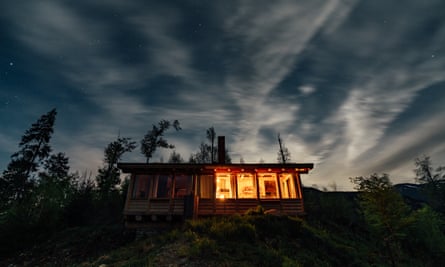
As night falls, I spy something moving into the clearing. A skittish young female brown bear stops to sniff the air, rolls in the grass and rubs against a tree. It’s mesmerising. We eat dinner of polenta and wild mushrooms staring out into the dark as if glued to a movie screen. A full moon illuminates the scene, and it’s not long before a large male wanders into view and snuffles around just metres away. From the guestbook it seems this is not unusual: excited scribbles tell of countless sightings of bear, wild boar and red deer. So I’m not surprised when I wake at dawn to see another female bear, pawing the ground in a search for grubs.
We wait until she’s been gone a while, then pick our way quietly through the forest, crossing a section of beautiful old beech, signs of recent animal movement evident all around. On a hillside across the river I spy a huge bare patch of land. It was illegally felled by a politician, Răzvan tells me, but FCC has now bought the land and replanting is under way.
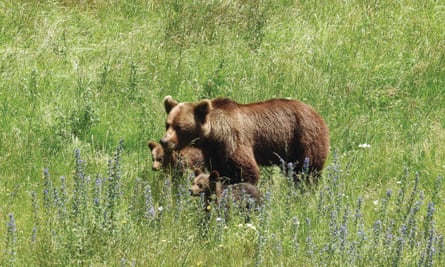
Today’s hike takes us up higher to another hide, Comisu, at 1,600 metres, with breathtaking views over the mountains. We leave our gear and climb higher still to the ridge of the Făgăraș mountains, the highest range in the southern Carpathians, before rain drives us back down. Drying out by the wood burner we watch as the night sky closes in, clear and star-filled, and an owl flies past, glowing like an angel in the moonlight.
Besides the hides, FCC’s tourism offering includes 500-hectare Cobor Biodiversity Farm, deep in the countryside in Ticușu Vechi, an hour and a half from Brașov. It’s a place frozen in time: horses and carts roll by and women work with scythes in the fields. The restored farmhouses sleep up to 23, and visitors can tour the farm where Hungarian grey cattle and a horse livery are part of a regenerative farming project. Carpathian shepherd dogs are bred here too, and given to local farmers and shepherds for protection against bears and wolves – the 10 pups on site are beyond cute. Village numbers at Cobor have dwindled to about 200, Răzvan tells me, but ecotourism jobs may entice more to stay.
My next stop is Nucșoara village, on the edge of the mountains close to Moldoveanu, the country’s highest peak. It’s home to an extraordinary ancient beech forest. The last partisan anti-communist communities hid here, the local history teacher Constantin Berevoianu says as we wander. Inspired by the local mayor, FCC has recently launched an “adopt a beech tree” campaign – funders can choose to have their stories told via the website and QR codes on the trees, and the money raised goes to protect the trees, improve infrastructure and attract more visitors.

Engaging communities and showing that protecting nature can provide alternative revenue streams is crucial to the success of a new national park. Besides providing employment in roles from rangers to tree planters, FCC has created a “food hub” for small-scale local producers to sell their wares. Guests enjoy delicious cheeses, zacusca (an aubergine and pepper spread), jams and honey during their stay.
Regular events are also held to explain the work being done. Cobor Farm hosted its first festival this summer and my trip coincides with Făgăraș Fest , a free event now in its fourth year, held this time in Porumbacu de Sus, Sibiu. The mountain setting is spectacular and there are workshops, local food and great live music.
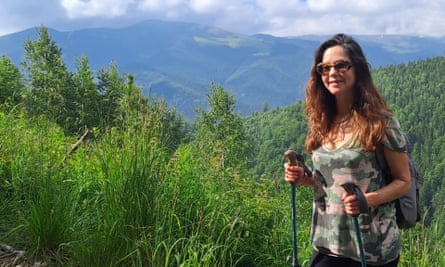
Tonight one of the stars is 80-year-old Silvia Dan from Nucșoara, who is singing as part of a show called Interbeing , created by the Brighton-based artist Nico de Transilvania . It’s an interesting blend of electronic music, traditional song and recordings of the sounds of nature. The resounding themes are of our interconnectedness with nature, the wisdom of the elders, and the importance of preserving these landscapes and traditions for future generations.
It’s a heartfelt message that resonates with FCC’s grand vision. A new park of this size may take decades to realise – but seeing the incredible beauty of what we risk losing and the passionate work being done to save it is quite something to behold.
The trip was provided by Foundation Conservation Carpathia . Accommodation at Cobor Farm starts at €46 pp (activities extra). Prices for the hides at Comisu start at €173 pp (first night, €115 additional nights) , including guided hike, breakfast and dinner. Poiana Tamas wilderness camp is currently only available to groups. Three-day Complete Wildlife Experience packages cost from €345 pp. For more information visit Travel Carpathia This article was amended on 24 October 2023. The area FCC would like to see protected as a national park is 200,000 hectares, not 100,000 as previously stated.
- Romania holidays
- Wildlife holidays
- Walking holidays
- Green travel
- Europe holidays
Most viewed
- Share full article

The World Through a Lens
The Making of a ‘European Yellowstone’
A major conservation effort is underway in Romania. The goal is a new national park that will rival its American counterparts.
The Southern Carpathian Mountains, also known as the Transylvanian Alps, in south-central Romania. Credit...
Supported by
Photographs and Text by Nicholas J. R. White
- March 15, 2021
It was my first visit to Romania’s Southern Carpathian Mountains in 2018, and I was standing beside a derelict sheepfold high above the Dambovita Valley. To the east, the imposing limestone cliffs of Piatra Craiului, or Kings’ Rock, towered overhead. All around me was a panorama of deep valleys, soaring mountains and the ever-present forest.
Beneath a canopy of old-growth trees, an array of animals — wolves, European brown bears, boar, eagles, lynx — were thriving.
Here among the Fagaras Mountains, the highest reaches of the Southern Carpathians, and tucked away in an unlikely corner of the European Union, an immense conservation project was underway. The ultimate aim: the creation of a “European Yellowstone .”

Accompanying me on my first trip was Mihai Zotta, the technical director of Foundation Conservation Carpathia, or F.C.C. Founded in 2009, F.C.C. is working to protect a vast area of the Carpathian forests — by purchasing property, leasing hunting rights, rewilding the land and halting illegal logging.
Eventually the plan is to return their landholdings to the public in the form of a national park based around the Fagaras Mountains, which, sitting alongside the existing Piatra Craiului National Park , would create a chain of parks and a wide-reaching wildlife reserve.
Before my initial reporting trip, which was funded by The Royal Photographic Society and Photographic Angle Environmental Bursary, I hadn’t entertained the idea of visiting Romania. But as rewilding initiatives began to gain global momentum , Romania stood out to me as a remarkable example.
While many countries were working to replace what they had once lost, Romania, in many ways, was battling to preserve what it still had.
Romania is home to extensive swaths of old-growth and primeval forests, many of which sit in the Southern Carpathians. These areas are particularly biodiverse — and increasingly threatened .
Instead of simply photographing the landscape and wildlife, I began to embed myself with F.C.C. rangers as they conducted their daily operations: wildlife monitoring, the replanting of forests, patrolling to deter logging.
Since 2018, I’ve conducted around 10 trips to the region. I’ve spent days bundled up in the back of a ranger’s S.U.V., and clutching my large-format camera as we track wolf packs on snowmobiles.
Over time, I was able to establish a camaraderie with many of the rangers. Occasionally, on patrols with the wildlife monitoring teams, they would invite me to assist in their duties — including the collecting of fresh bear scat.
The chief wildlife ranger, Bogdan Sulica, once took me to the site of a bear attack on a small farm just outside the commune of Saticul de Sus. Despite my efforts to assist in ranger duties, he laughingly advised that I stand on a hill and stick to taking pictures.
After the fall of communism, the Romanian government began a restitution program for nationalized land, resulting in a new ownership structure for a significant portion of Romania’s forests. In the years that followed, logging companies bought many of the privately owned forests, leading to large-scale deforestation.
To further complicate matters, wildlife populations in the Fagaras Mountains have been subjected to severe levels of poaching and overhunting. To combat this, F.C.C. has founded its own hunting association and has purchased hunting rights for several large tracts, totaling around 160,000 acres. By purchasing the rights and foregoing hunting, they can effectively protect the animals within the tracts.
While there’s a broad consensus in Romania for preserving these areas, tensions have sometimes arisen among the surrounding communities. Some locals feel as though certain land was protected without their input, especially those with strong ties to hunting. Others have seen protected animals — bears, wolves, lynx — damage their property and prey on their livestock.
My documentation of F.C.C.’s work in Romania continues, having organized itself around the three primary facets of their initiative: wildlife monitoring, forest replanting and community outreach programs.
Creating a national park, I’ve learned, takes time. Progress is slow, and there will likely be many more unforeseen roadblocks standing between the foundation and the fully realized dream of a European Yellowstone. But, in time, through the combined efforts of F.C.C. and the people of Romania, a blueprint may emerge that others in the international community might follow.
Nicholas J. R. White is a photographer based in the U.K. and Romania. You can follow his work on Instagram and Twitter .
Follow New York Times Travel on Instagram , Twitter and Facebook . And sign up for our weekly Travel Dispatch newsletter to receive expert tips on traveling smarter and inspiration for your next vacation.
Advertisement
Ultimate Romania Travel
A Luxury Voyage Blog
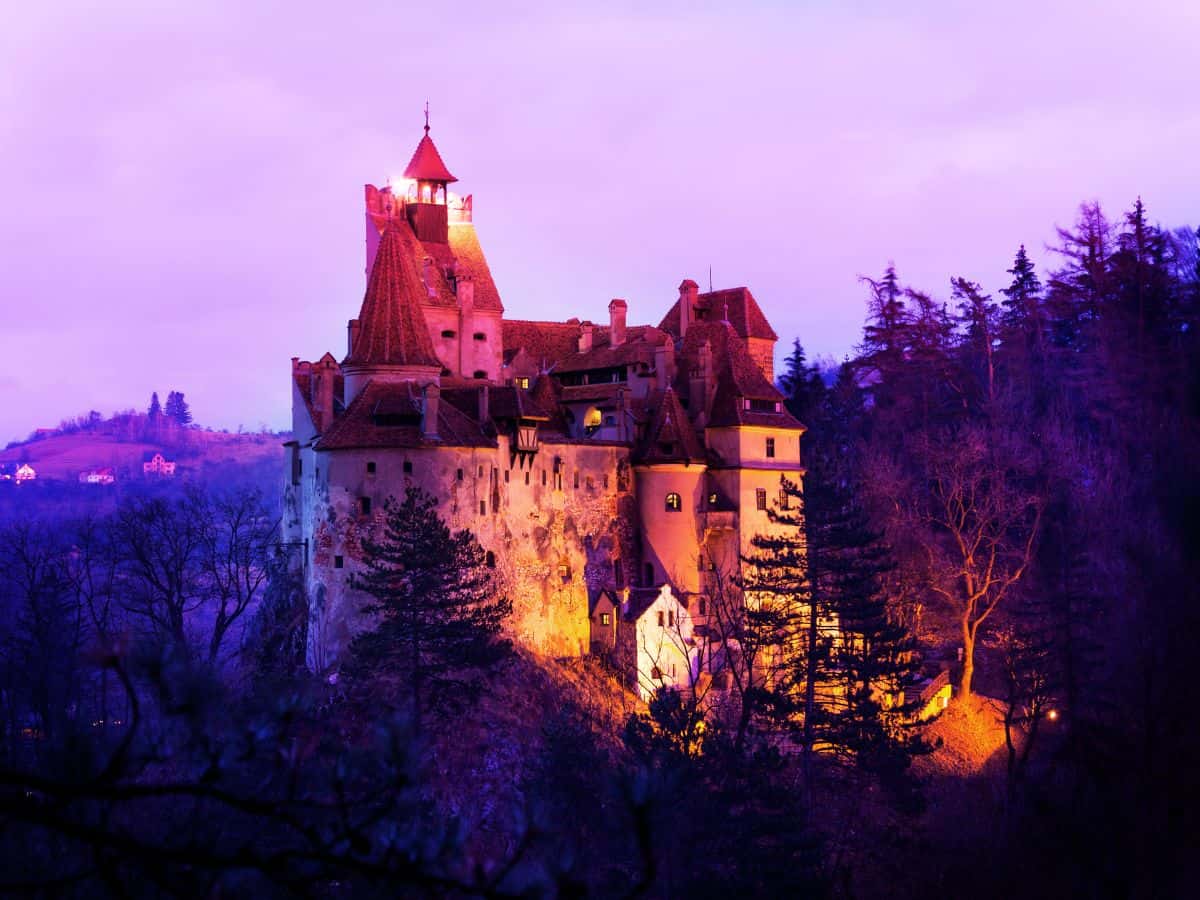
2024 Romania Travel Guide: Local Insights for First-Time Visitors!
Welcome to Romania, a land of rich history, stunning landscapes, and vibrant culture waiting to be explored! As a Romanian with a passion for sharing the hidden gems and insider tips of my homeland , I’m thrilled to help you create an unforgettable journey. Romania travel guide is crafted through the lens of a local and is your essential companion for the upcoming adventure.
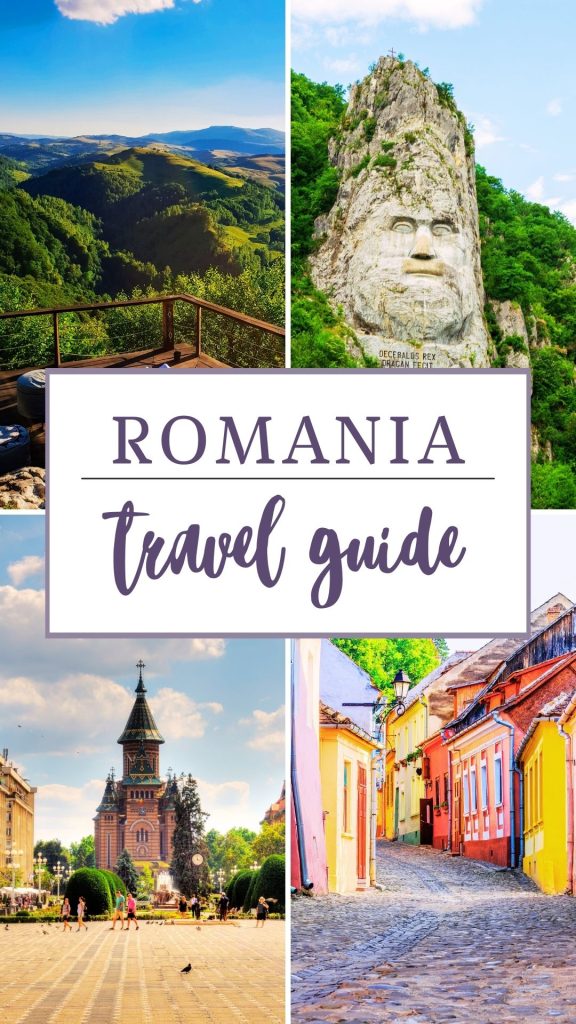
Get ready to embark on an adventure that goes beyond the ordinary, as we delve into the heart of Romania’s charm and uncover the secrets that will make your visit an authentic and enriching experience.
In this travel guide, I’ll take you beyond the typical tourist spots, offering you a firsthand perspective and revealing the lesser-known treasures that make Romania truly special.
Let’s explore Romania together, and discover the beauty that lies off the beaten path!
And you also can check: 19 Things You Must Consider Before Traveling to Romania!
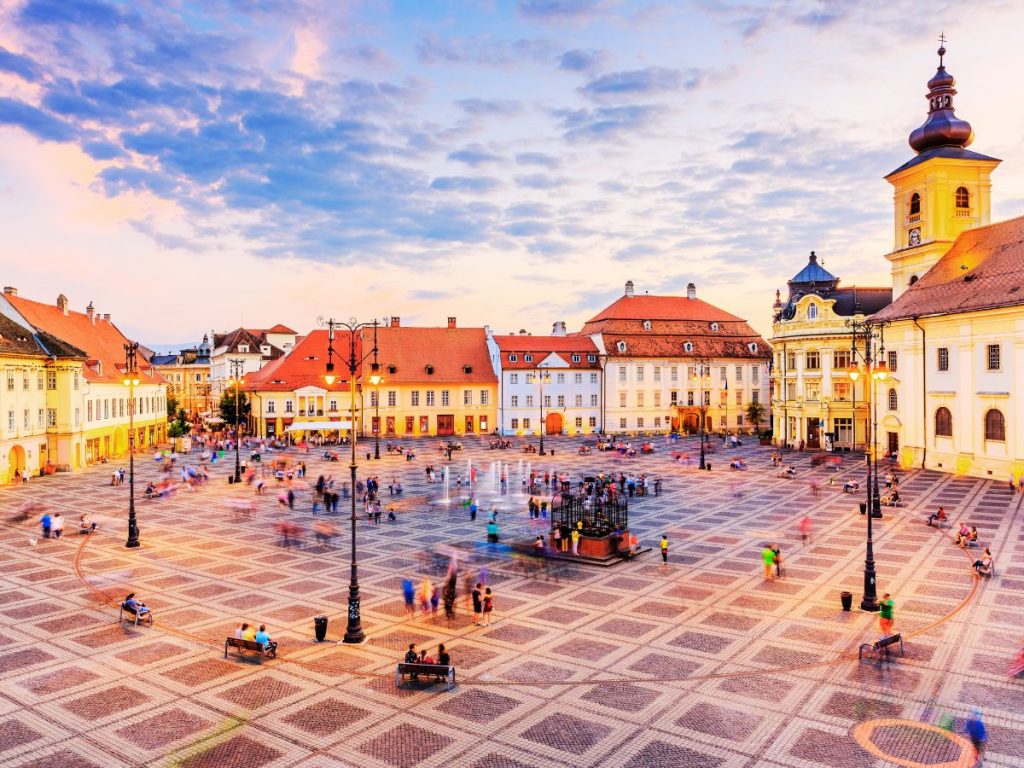
Know before you go to Romania
Language basics.
While in my country English is spoken in tourist areas, learning a few Romanian phrases will not only ease your travels but also endear you to the locals. We appreciate the effort, and it enhances your overall experience. The Romanian language, a Latin language like French, Italian, and Spanish, has its own unique charm. Greetings play a crucial role in Romanian culture, so mastering basic pleasantries like “Bună ziua” (Good day) and “Mulțumesc” (Thank you) can go a long way.
Cultural Etiquette
Cultural etiquette in Romania is deeply rooted in traditions and respect. When greeting someone, a firm handshake is customary, with direct eye contact and a sincere smile. It is polite to address people using their titles and last names, especially in formal settings. Punctuality is appreciated, so arriving on time for social events or meetings is considered courteous. During conversations, Romanians value open communication and appreciate a genuine interest in their culture and history. When entering someone’s home, it’s customary to bring a small gift, such as flowers or sweets, as a token of appreciation. Additionally, respecting personal space and using polite expressions contribute to positive interactions.
Entry Requirements
Ensure you have the necessary travel documents, including a valid passport. Check if a visa is required for your nationality and the duration of your stay.
Cultural and Historical Sites
Research and prioritize the cultural and historical sites you want to visit. Knowing the significance of these places enhances your appreciation of Romania’s rich heritage.
Respect for Nature
If you plan on exploring Romania’s natural beauty, be sure to adhere to eco-friendly practices. Respect nature reserves and follow responsible tourism guidelines.
Natural Hazards
Depending on the region and season, be aware of potential natural hazards such as bears in certain areas or weather-related issues. Stay informed about safety guidelines.
⚕️Getting Travel Insurance Must Be Your Top Priority! Check out the greatest rates offered by Safety Wing !
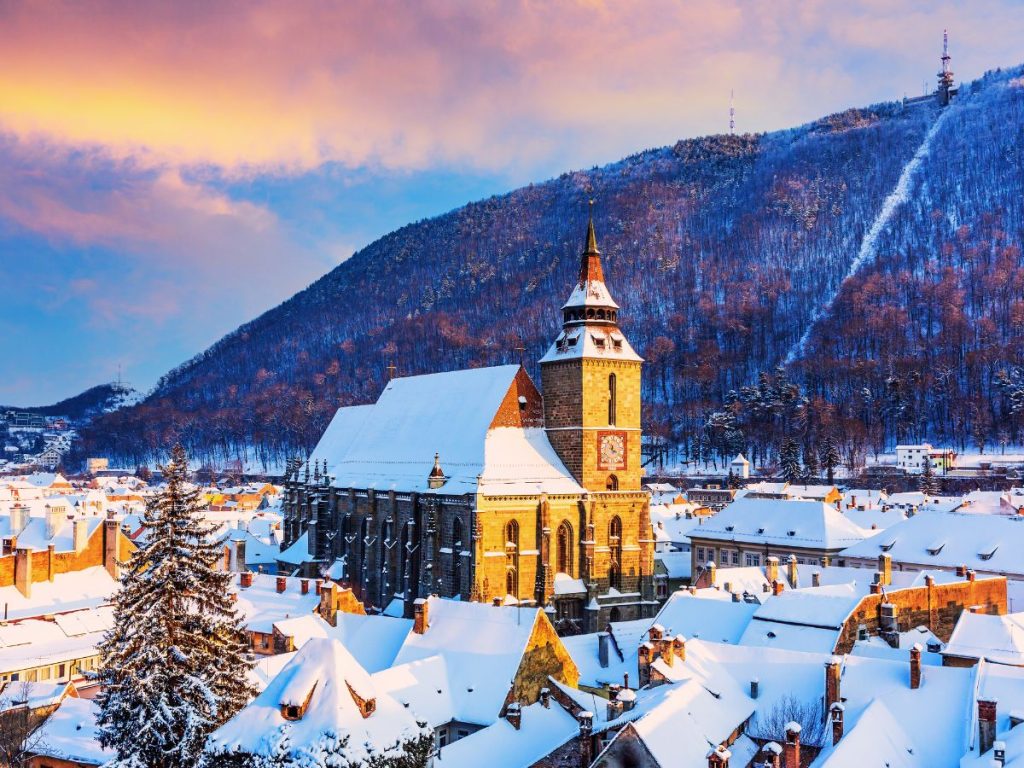
Best time to visit Romania
Summer in Romania is a vibrant tapestry of experiences that showcases the country’s natural beauty and cultural richness. From the lush green landscapes of the Carpathian Mountains to the sun-soaked beaches of the Black Sea coast, Romania beckons visitors with a diverse array of attractions. As a local, I recommend exploring the charming medieval towns, attending outdoor festivals celebrating traditional music and dance, and indulging in the seasonal bounty of fresh, local produce. Dive into the turquoise waters of the Black Sea, unwind in the picturesque countryside, and savor traditional dishes at lively open-air markets.
Fall in Romania unveils a breathtaking transformation as the landscapes transition into a kaleidoscope of warm hues. As a Romanian, I cherish this season for its cozy charm and the enchanting atmosphere it brings to our historic towns and countryside. Fall festivals celebrate our cultural heritage, offering a taste of traditional foods and lively folk performances. Whether you’re wandering through ancient fortresses or sipping hot drinks at a charming café, Romania in the fall captures the essence of tranquility and cultural richness, making it a season to be savored.
Winter transforms Romania into a magical wonderland. Blankets of snow drape the Carpathian Mountains, turning them into a serene playground for winter sports enthusiasts. Historic towns adorned with twinkling lights exude a festive atmosphere, and Christmas markets offer a delightful array of traditional treats and handmade crafts. Embrace the warmth of hearty Romanian cuisine, from sarmale to mămăligă, as you cozy up in inviting local eateries . Picture yourself wandering through medieval castles dusted with snow or sipping mulled wine at a picturesque chalet. Winter in Romania is a time to embrace the cold with open arms, celebrating the season’s charm and the warmth of community spirit that defines this magical time of the year.
Spring in Romania is a symphony of renewal. Nature awakens with vibrant blooms carpeting the countryside, turning it into a picturesque panorama. The Carpathian Mountains, still dusted with snow, create a stunning backdrop to the emerging greenery. It’s the perfect time to explore historic towns, where cobblestone streets come alive with the hustle and bustle of outdoor markets. As the weather warms, outdoor cafes beckon, inviting you to savor local delicacies amidst blooming gardens. Spring also marks the beginning of cultural festivals and events celebrating our rich traditions.
✈️ Check out Great Deals on Flights with Skyscanner ! Here You will Find the Best Rates !
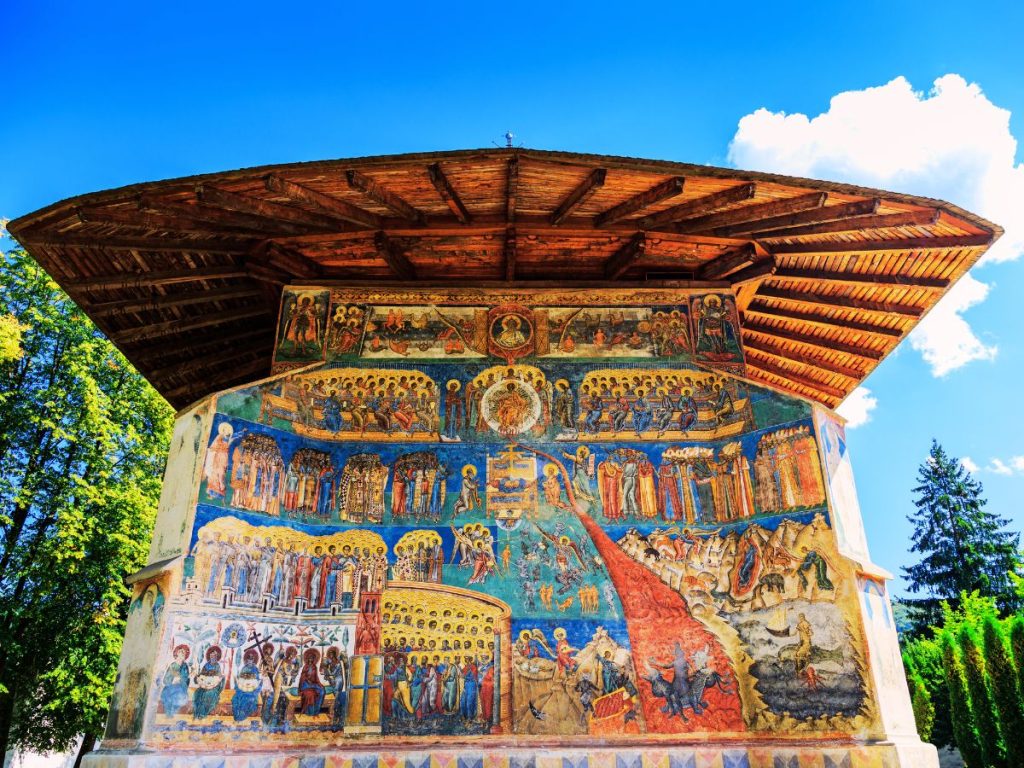
Places to visit in Romania
Bucovina , my cherished corner of Romania, is a treasure trove of beauty and cultural richness. Nestled in the northeastern part of the country, this enchanting region is renowned for its painted monasteries, each a masterpiece of vibrant frescoes that tell stories of our heritage. As a local, I am captivated by the lush landscapes, rolling hills, and the warmth of the people who proudly preserve their traditions. Bucovina’s authenticity shines through in its charming villages, where time seems to stand still. Indulge in the delectable local cuisine, savoring dishes that reflect our agricultural heritage. Whether marveling at the Painted Monasteries of Suceava or hiking through the pristine surroundings, Bucovina offers a glimpse into the heart of Romania, inviting you to immerse yourself in its timeless allure and experience the true essence of our culture.
Transilvania
Transylvania, a jewel in Romania’s crown, is a region that beckons with its captivating blend of history, folklore, and natural splendor. I take pride in welcoming you to this enchanting land, where medieval castles stand as silent witnesses to a rich past. The picturesque landscapes, dotted with fortified churches and charming villages, tell tales of a bygone era. Explore the cobbled streets of Sibiu or delve into the Gothic grandeur of Bran Castle, forever linked to the Dracula legend. Transylvania’s allure extends beyond its legendary associations; it’s a place where vibrant festivals, hearty cuisine, and warm hospitality converge. Whether hiking in the Carpathians or wandering through the vibrant squares, Transylvania invites you to embrace its timeless charm, offering an authentic and unforgettable Romanian experience.
Danube Delta & Black Sea
The Danube Delta and the Black Sea, an awe-inspiring duo in the Romanian landscape, offer a unique tapestry of natural wonders and coastal allure. I find solace in the serenity of the Danube Delta, a UNESCO World Heritage Site where labyrinthine waterways crisscross through reed-filled landscapes, creating a haven for diverse flora and fauna. From pelicans to wild horses, the Delta is a living canvas of biodiversity. Moving towards the Black Sea, golden beaches stretch along the coastline, inviting relaxation and seaside adventures. Explore the vibrant port cities of Constanta and Tulcea, where history mingles with a lively maritime atmosphere. Whether cruising the delta’s waterways, birdwatching in pristine wetlands, or basking in the sun on the Black Sea shores, this region encapsulates Romania’s natural beauty, offering a tranquil escape and a haven for exploration.
Maramureș, a hidden gem in the heart of Romania, beckons with its timeless charm and cultural richness. The iconic wooden churches, adorned with intricate carvings, stand as testaments to Maramures’ architectural heritage. Roaming through the countryside, you’ll encounter rolling hills, wooden gates, and locals proudly preserving age-old traditions. The Merry Cemetery in Săpânța, with its vividly painted grave markers, adds a touch of folklore to the journey. Maramures is not just a destination; it’s an immersive experience, inviting you to embrace its authenticity, savoring the hospitality, vibrant festivals, and captivating stories embedded in every wooden beam and cobblestone street.
Bucharest , the dynamic capital of Romania, is a city where history and modernity seamlessly intertwine. You’ll be captivated by the energy of this bustling metropolis, adorned with grand Belle Époque architecture, Soviet-era structures, and contemporary design. The iconic Palace of the Parliament, a colossal symbol of Romania’s complex history, stands alongside charming neighborhoods like Lipscani, where cobblestone streets lead to vibrant cafes and eclectic shops. Bucharest’s parks, including Herastrau and Cismigiu, offer peaceful retreats amidst the urban hustle. Culinary delights abound in the city’s diverse restaurants, and the nightlife is alive with music and excitement. Whether exploring the open-air Village Museum or immersing in the city’s thriving arts scene, Bucharest is an invitation to discover Romania’s dynamic spirit and the rich tapestry of its capital city.
🎫 Looking for Great Activities to Enjoy While in Romania? Look no further than Viator !
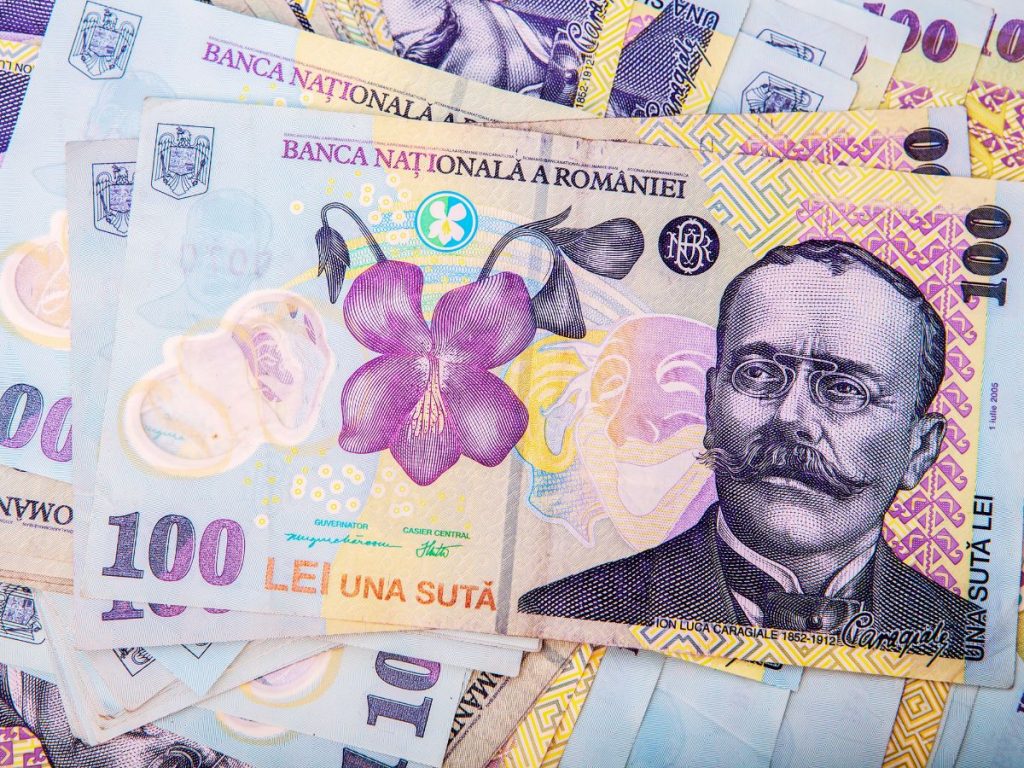
Romanian currency, exchange houses and card payments
Local currency.
Romania’s official currency is the Romanian Leu (RON)
Money Exchange
When exchanging money in Romania, it’s recommended to use authorized exchange offices or banks for fair rates and secure transactions. Avoid street vendors offering currency exchange, as they may not provide reliable services. Additionally, many establishments in urban areas accept major credit cards, but having some local currency on hand is beneficial, especially in more remote locations.
cash and card Payments
While credit cards are widely accepted in urban areas, it’s advisable to carry some cash, especially when venturing into rural regions or smaller establishments. ATMs are readily available for currency withdrawal, and exchanging money at local banks or exchange offices is a common practice for visitors.
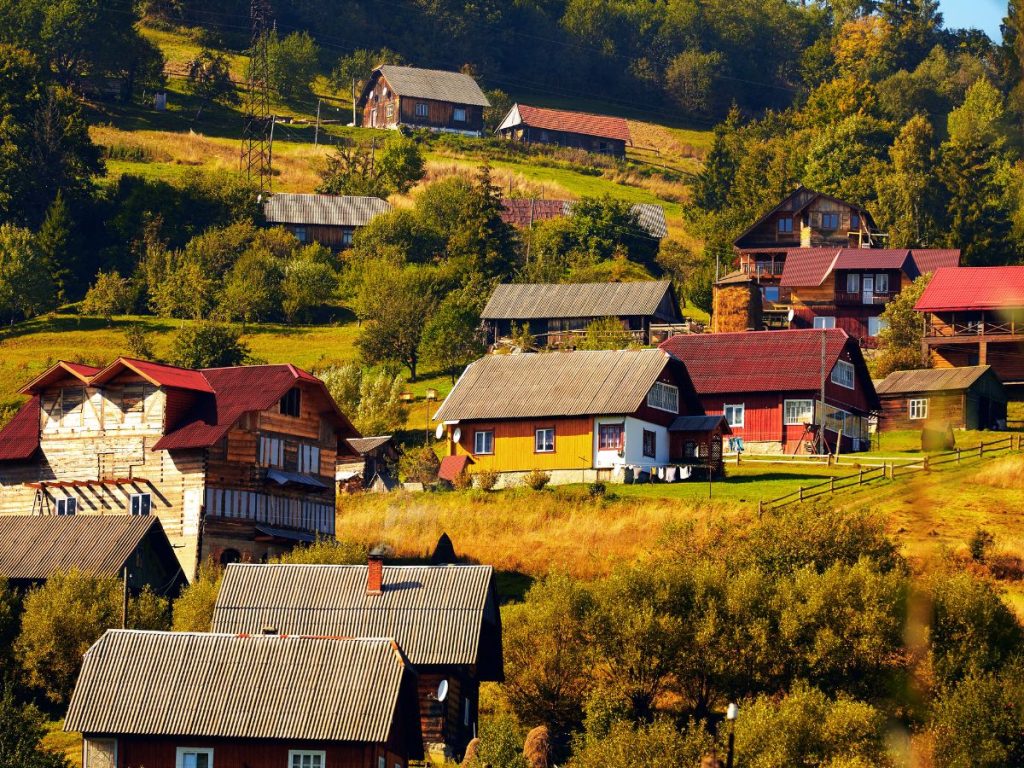
Where to stay in Romania: Booking hotels, guesthouses and homes
Staying in hotels in Romania promises a blend of comfort and cultural immersion. From boutique accommodations in historic city centers to resorts nestled in picturesque landscapes, you can experience warm hospitality, diverse amenities, and a chance to explore the country’s rich heritage. Romanian hotels offer a delightful fusion of modern convenience and traditional charm.
Guesthouses
Opting for guesthouses or Airbnbs in Romania provides an intimate and authentic experience. From charming rural cottages to cozy urban apartments, these accommodations offer a genuine glimpse into local life. Guests enjoy personalized attention, local insights, and a unique stay that complements Romania’s diverse landscapes and cultural tapestry.
Stay with Locals
Immerse yourself in Romanian hospitality by staying with locals. Whether in a village homestay or city residence, this intimate experience offers genuine connections, cultural insights, and personalized recommendations. Sharing meals, stories, and traditions with locals creates lasting memories, providing a truly immersive and enriching stay in Romania.
🏨 Booking.com is Your Go-To Site for the Best Places to Stay in Romania!
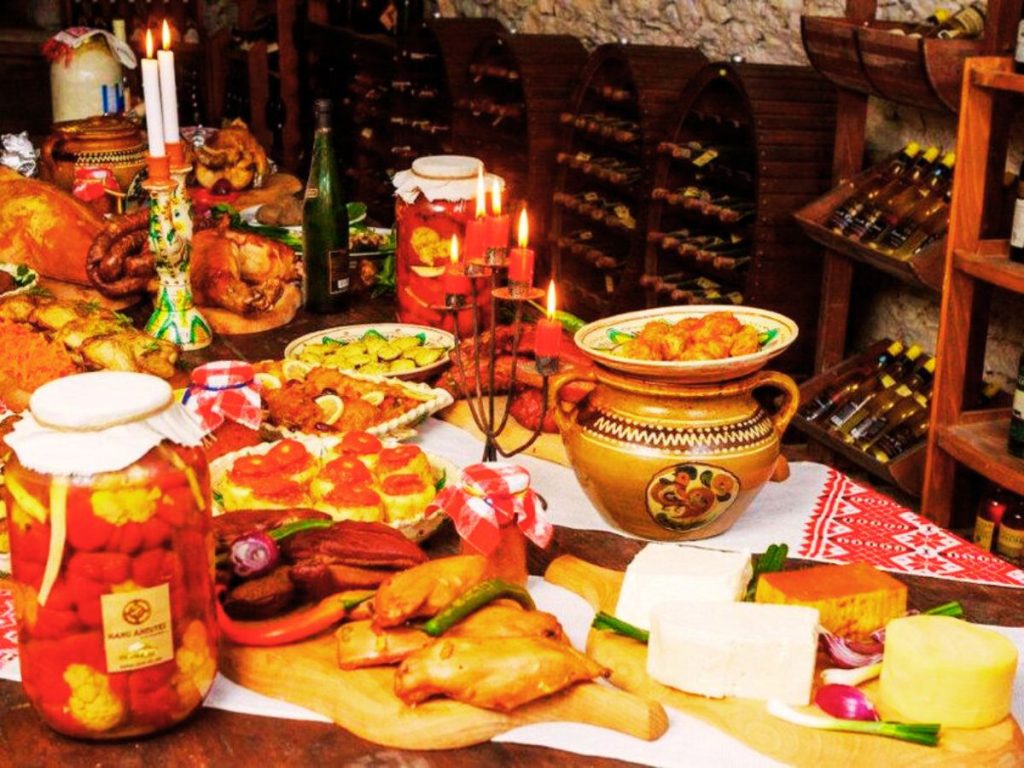
What to eat in Romania: Traditional Romanian Food you must try
Romanian cuisine is a delightful fusion of flavors influenced by its diverse history and cultural heritage.
Tochitura Bucovineana
Tochitură Bucovineană is a flavorful Romanian dish originating from the Bucovina region. It features diced pork, sausages, and bacon, simmered together until golden and crispy. Seasoned with garlic, thyme, and sweet paprika, Tochitură Bucovineană is often served with mămăligă (cornmeal porridge) and a fried egg, creating a hearty and savory culinary experience.
Sarmale with Mamaliga
Sarmales are cabbage rolls filled with a delicious mixture of minced pork, rice, sautéed onions, and various spices like thyme and dill. Slow-cooked and often served with polenta, sour cream, and hot pepper, they are a centerpiece of festive meals and celebrations.
Mici (Mititei)
These small, grilled ground meat rolls are a popular Romanian street food. The mixture of pork, beef, and lamb is seasoned with garlic, black pepper, and paprika, resulting in flavorful, juicy morsels. Mici are typically enjoyed with mustard and fresh bread.
Papanași, a beloved Romanian dessert, are doughnut-shaped pastries made from a mixture of cottage cheese, eggs, and semolina, deep-fried to golden perfection. The center is usually filled with a dollop of sour cherry or apricot jam, and they’re traditionally served with a generous dusting of powdered sugar or a side of sour cream. Papanași delight the taste buds with their sweet, tangy, and creamy combination.
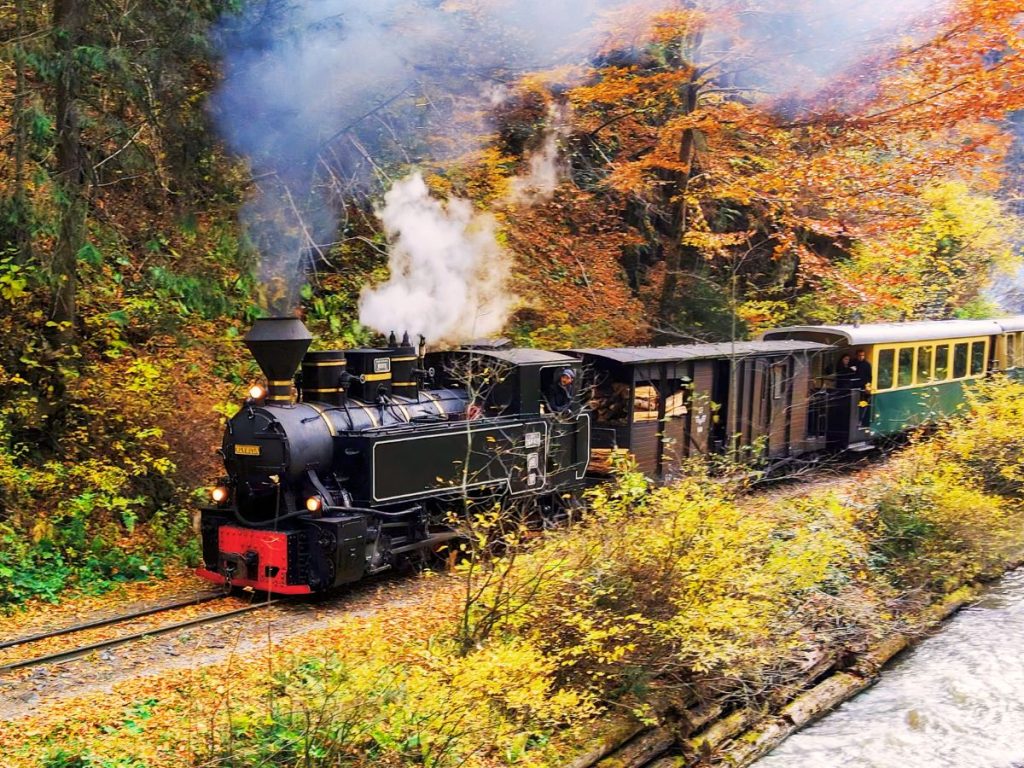
Getting Around in Romania
Train and buses.
Navigating Romania by train and bus offers a convenient and scenic way to explore the country’s diverse landscapes. The extensive rail network connects major cities, providing comfortable and efficient travel. Buses complement train routes, reaching smaller towns and picturesque regions, making both modes of transportation essential for a comprehensive Romanian journey.
Uber and Taxis
In Romania, Uber and traditional taxis provide convenient options for navigating urban areas and reaching destinations efficiently. Uber operates in major cities, offering a reliable and often more cost-effective alternative to traditional taxis. Taxis are readily available, and while some might not use meters, it’s advisable to choose licensed operators for a secure and regulated travel experience.
Renting Car
Renting a car in Romania offers unparalleled freedom to explore the country’s hidden gems . From the vibrant streets of Bucharest to the scenic Transfăgărășan Highway, having your own vehicle unlocks the beauty of diverse landscapes. While public transportation is available, driving allows for personalized itineraries, revealing the authentic charm of Romania at your own pace.
Internal flights
Internal flights in Romania provide swift connections between major cities, ideal for travelers covering longer distances. Although the country’s size may make internal flights less common than other modes of transportation, they offer a time-efficient option for those with limited time or specific travel requirements. From Cluj-Napoca to Timișoara or from Suceava and Iasi to Bucharest, internal flights provide convenience for exploring Romania’s diverse regions.
🚗 Find the Best Deals on a Rental Car with Discover Cars ! They have the most affordable options and the best customer service !
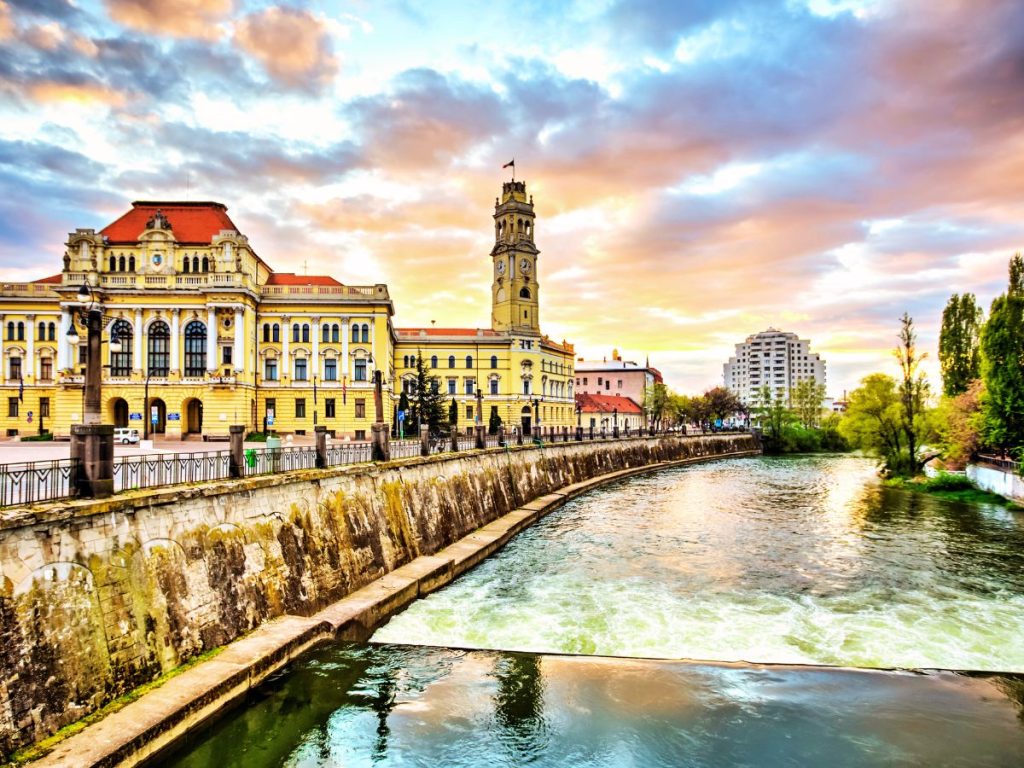
Visit Romania Faqs
What you should know before going to romania.
Before traveling to Romania, familiarize yourself with the local currency (Romanian Leu) and consider having some cash on hand. Learn a few basic Romanian phrases to enhance your interactions, and be aware that English is widely spoken in tourist areas. Research the specific regions you plan to visit, as Romania offers diverse landscapes, each with its own unique attractions and cultural nuances.
How much cash can I bring to Romania?
There are no strict limits on the amount of cash you can bring to Romania, but it’s advisable to declare sums exceeding €10,000 or the equivalent in other currencies upon entry. ATMs are widely available for currency withdrawal, and credit cards are accepted in urban areas. Carry a moderate amount of cash for convenience, especially in rural or smaller establishments.
Do I need cash in Romania?
While major cities and tourist areas in Romania accept credit cards, having some cash on hand is advisable for smaller establishments and rural areas where card acceptance may be limited. ATMs are widely available, making it convenient to withdraw local currency (Romanian Leu) as needed. It’s a good idea to carry a moderate amount of cash for practicality during your travels.
What to do and not do in Romania?
Embrace our vibrant culture by engaging with friendly locals, savoring traditional cuisine, and participating in lively cultural events. Explore our rich history through iconic sites like Bran Castle and the Painted Monasteries, and immerse yourself in the breathtaking natural beauty of the Carpathian Mountains, Danube Delta, and Black Sea coast. Opt for public transportation in cities, use reputable taxis or ride-sharing apps, and always be respectful of local customs. Don’t shy away from trying our diverse traditional foods, plan your travels wisely to avoid underestimating distances, and prioritize safety by being aware of your surroundings and respecting local laws. Your journey through Romania is bound to be an authentic and enriching experience.
What are 5 interesting facts about Romania?
Romania boasts a unique blend of history, nature, and culture. It is home to one of the heaviest buildings globally, the Palace of the Parliament in Bucharest, and hosts Europe’s last genuinely wild forests in the Carpathian Mountains. The country is renowned for its Painted Monasteries, showcasing intricate frescoes, and Transylvania is linked to the Dracula legend, with Bran Castle as a focal point. Romania is the birthplace of the method for insulin treatment for diabetes, discovered by scientists Nicolae Paulescu and Sir Frederick Banting. Additionally, it has a fascinating diversity of wildlife, including the largest population of brown bears in Europe.
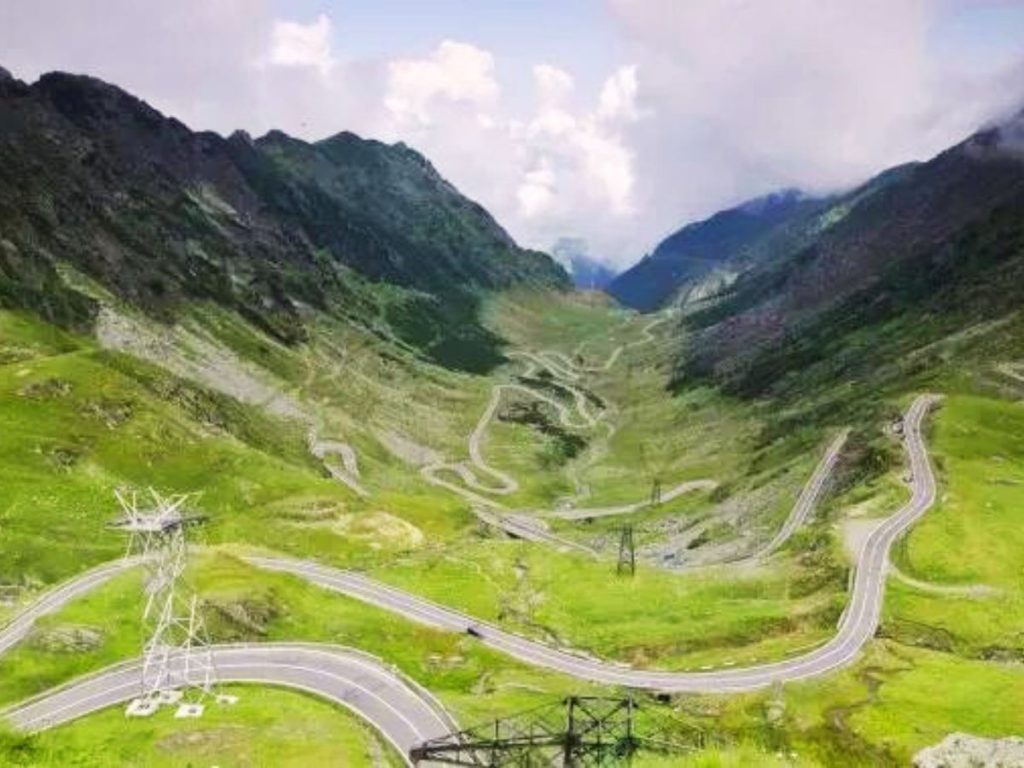
Overall Romania Travel Guide
All in all, Romania offers a captivating tapestry of history, culture, and natural beauty waiting to be explored. From the iconic castles of Transylvania to the pristine landscapes of the Danube Delta, the country unfolds as a treasure trove for every traveler. Engaging with locals, trying traditional cuisine, and participating in cultural events enhance the authenticity of the journey. Whether navigating the dynamic streets of Bucharest or savoring the tranquility of rural villages, Romania’s diverse regions promise a rich and immersive experience. Embark on this adventure with an open heart, and let the warmth of Romanian hospitality and the allure of its landscapes create lasting memories .
Similar Posts

2024 Bucharest Travel Guide: Local Insights for Top Things to Do and See
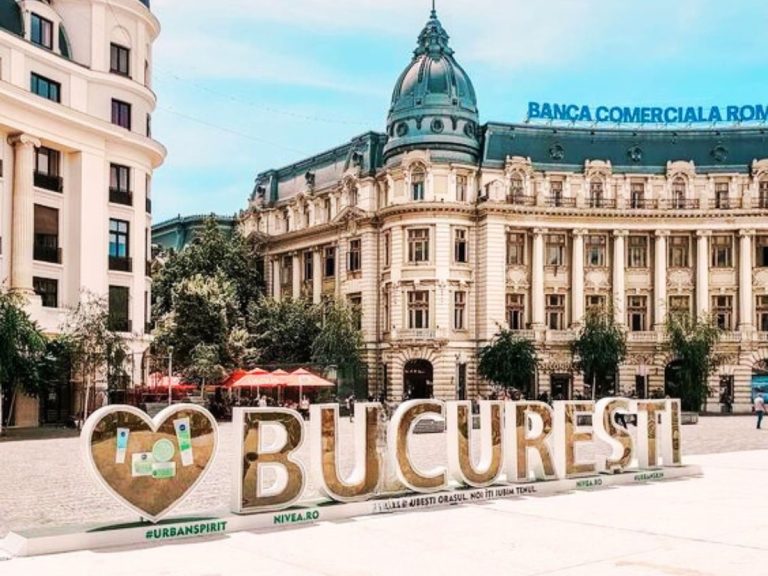
13 Experiences Not to Be Missed in Bucharest! Local’s List of Hidden Gems
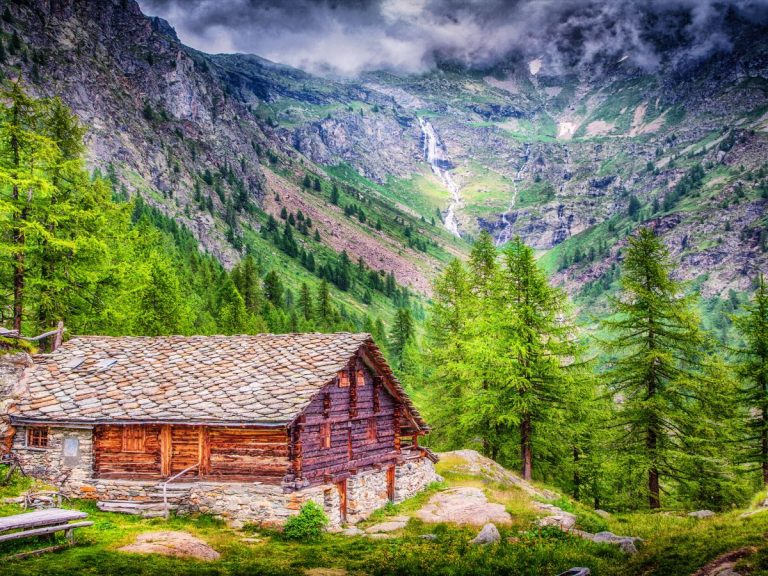
11 Best Summer Mountain Resorts in Romania! Local Insights for 2024 Trip

Is Romania Worth Visiting in 2024? Tips & Insights from a Local!
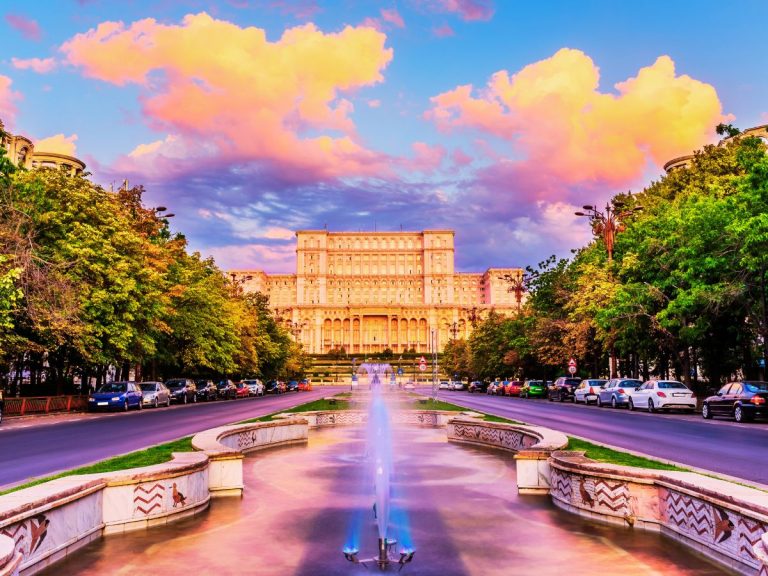
Is Bucharest Worth Visiting? 23 Reasons to Visit Bucharest in 2024!
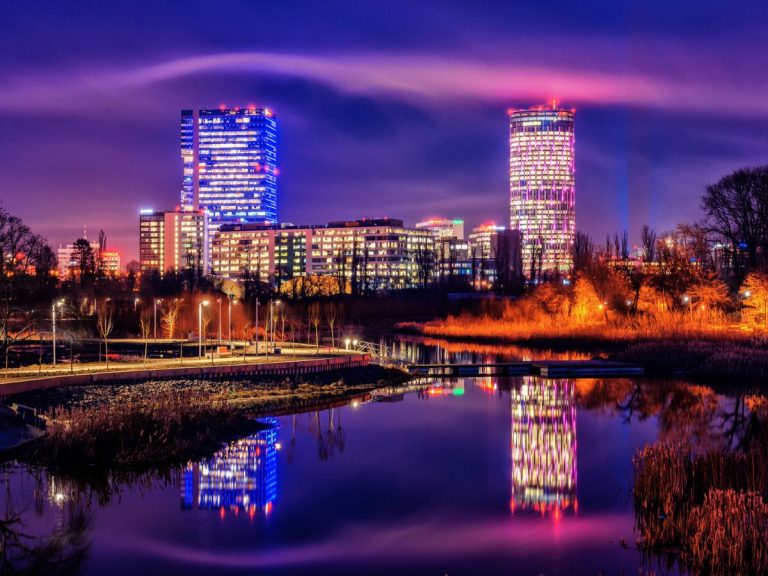
Unsafe Areas in Bucharest! Local’s List of Places You Must Avoid in 2024
7 unmissable things to do in Romania

Feb 19, 2022 • 4 min read

The lush region of Maramureş is host to numerous Unesco-listed sites © Matt Munro / Lonely Planet
Situated in the southeastern corner of Europe, on the shores of the Black Sea, Romania has so far largely missed out on the global tourism boom. Tenuous associations with Bram Stoker’s fictional Dracula have long lured travellers to Transylvania , but much of the rest of the country, with its beautiful mountains and river valleys, rustic villages, and vibrant cities, has only recently begun to attract visitors. Before word gets out, here are seven exciting experiences awaiting you in Romania.
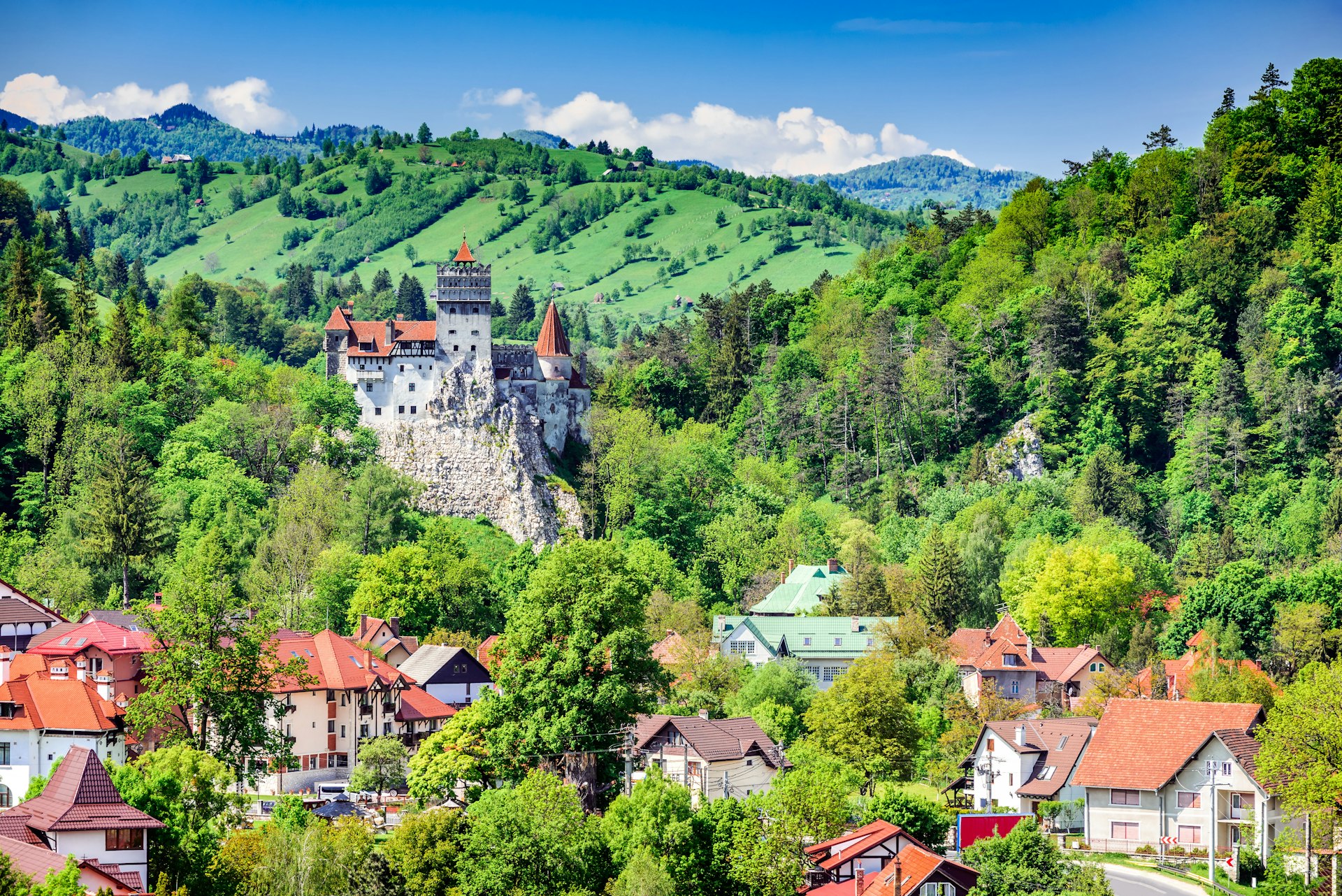
Gawk at immense Bran Castle
Bran Castle is often associated in the public eye with Dracula, and this wouldn’t be an article on Romania without a nod toward the infamous count, but the only bloodthirsty nobleman who ever stayed here was probably Romania’s own Vlad Țepeș (aka Vlad the Impaler), a 15th Wallachian prince who was famed for spiking the heads of his Turkish adversaries. But Bran doesn’t need Dracula to induce awe. The castle’s enormous mass of turrets and castellations, all looking over a foggy, desolate mountain pass, pretty much recalls every horror film ever made.
Admire the painted monasteries
The Unesco-protected, 15th-century painted monasteries of Bucovina show off not just Romania’s enduring devotion to its Latin-flavoured Orthodox tradition, but also superb artistry and craftsmanship. The elaborate frescoes adorning both the interiors and exteriors of the half-dozen or so churches were largely inspired by the Moldavian prince and hero, Stephen the Great (Ştefan cel Mare). The frescoes illustrate everything from biblical stories to the 15th-century siege of Constantinople. The dizzying matrix of colours and intricate detail, like at the stunning Voroneţ Monastery , blend effortlessly with remote natural surroundings.
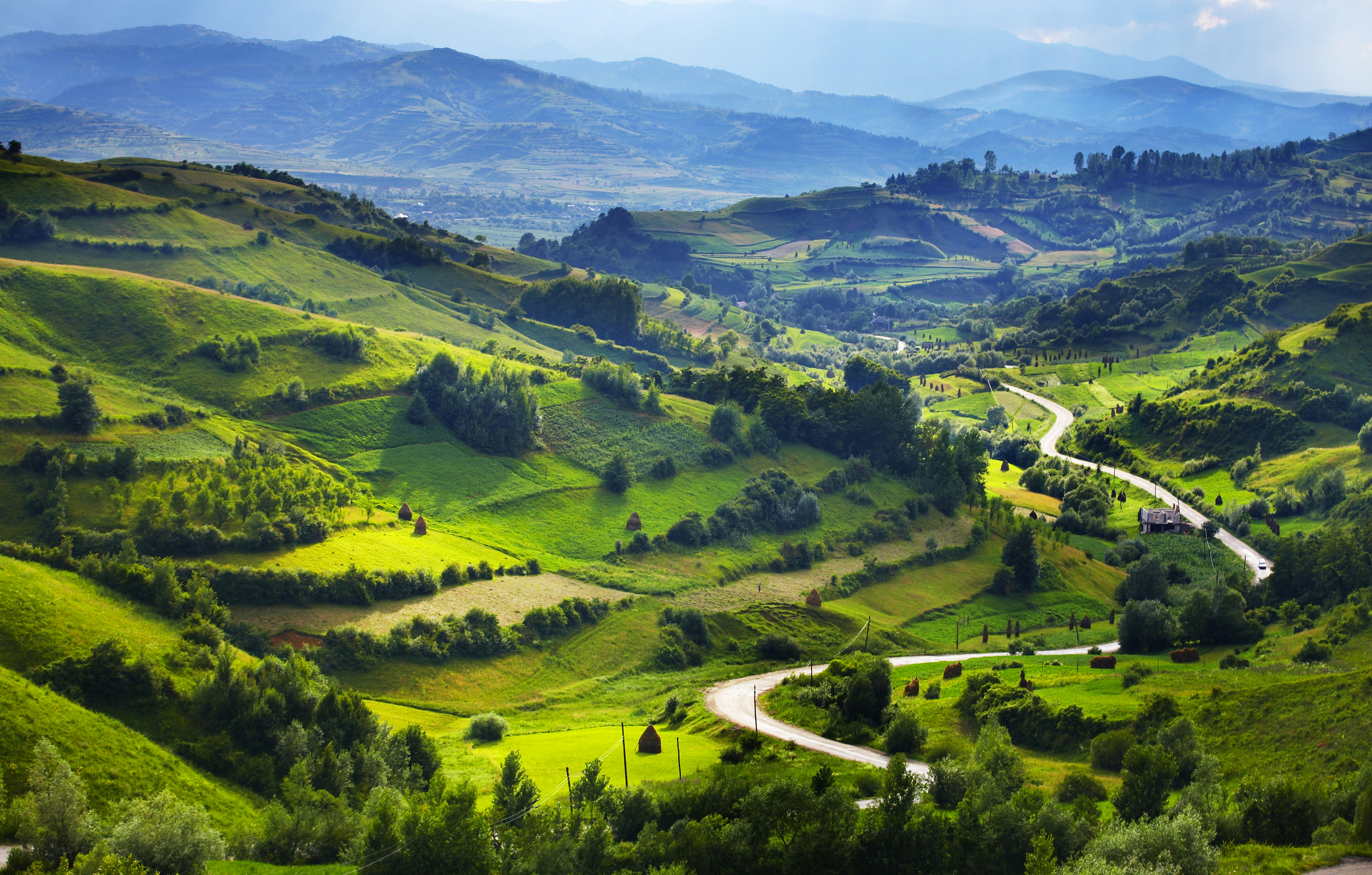
Step back in time in Maramureş
A visit to Maramureş in far northern Romania, above Transylvania, is like a trip back to a simpler, more rustic, more rural past. Isolated villages, separated from one another by vast, rolling fields and forested hillsides, cluster around stark wooden churches with weather-beaten, Gothic-style steeples. The region is home to several Unesco-listed churches, including at Bârsana , Budeşti , Deseşti , Ieud and Surdeşti . Stay for the weekend to see the villagers don their traditional Sunday dress.
See the Saxon splendour of Transylvania
Around 800 years ago, the Hungarian kings invited Saxon Germans to settle hilly Transylvania as a way of protecting the region from encroachment by the Ottoman Turks. That Saxon legacy lives on in the form of beautifully preserved cities like Braşov , Sighişoara and Sibiu , the latter of which still occasionally refers to itself by the German ‘Hermannstadt’. Admire the architectural heritage at Sighişoara’s Citadel fortress or Braşov’s Black Church . Don’t pass up the chance to see the pretty Saxon villages, straight out of a Grimms’ fairy tale, at Biertan and Viscri.
Boat or bird-watch on the Danube Delta
After meandering more than 2800km across the European continent, the powerful Danube River pours into the Black Sea in the northeastern corner of Romania. The Danube Delta is a vast protected wetland of water lilies and reeds, pushing up through the river’s countless tributaries. Visit the Central Eco-Tourism Museum of the Danube Delta in the port of Tulcea to see the varied flora and fauna that call the delta home. Ibis Tours runs regular birding outings, with chances to glimpse species like the white-tailed eagle, bee-eater, great white egret and the roller.
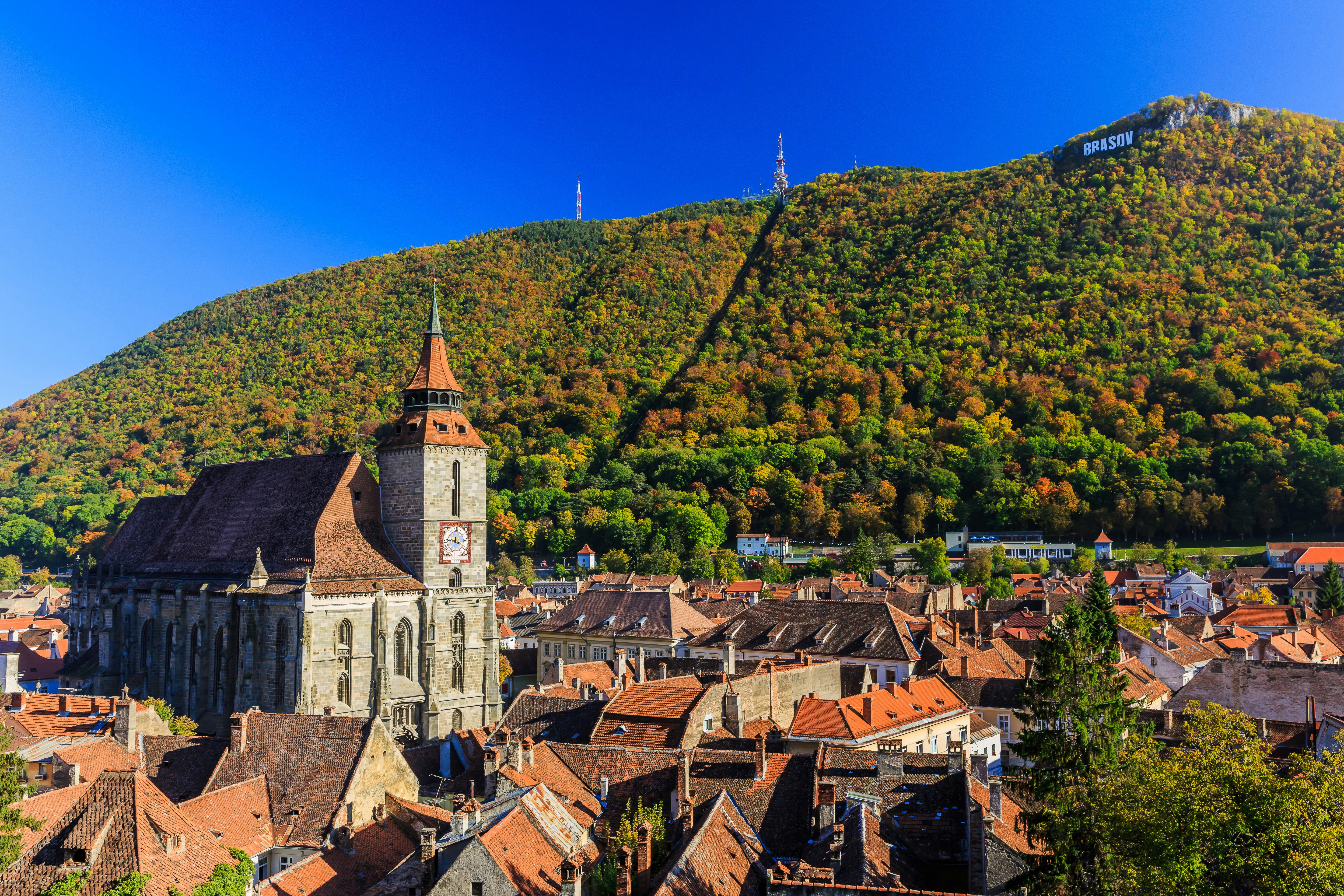
Hike the Carpathians
The vast Carpathian mountain chain runs down the centre of the country, separating the historic provinces of Transylvania and Moldavia, and creating a far-reaching Romanian rooftop that feels on some days as if you’re gazing out over the entire country. Trekking is the best way to experience this riveting landscape of peaks, forests and pastureland. The Retezat Mountains of southwestern Transylvania, part of the Retezat National Park , sport some 80 glacial lakes and several peaks that push upwards of 2000m.
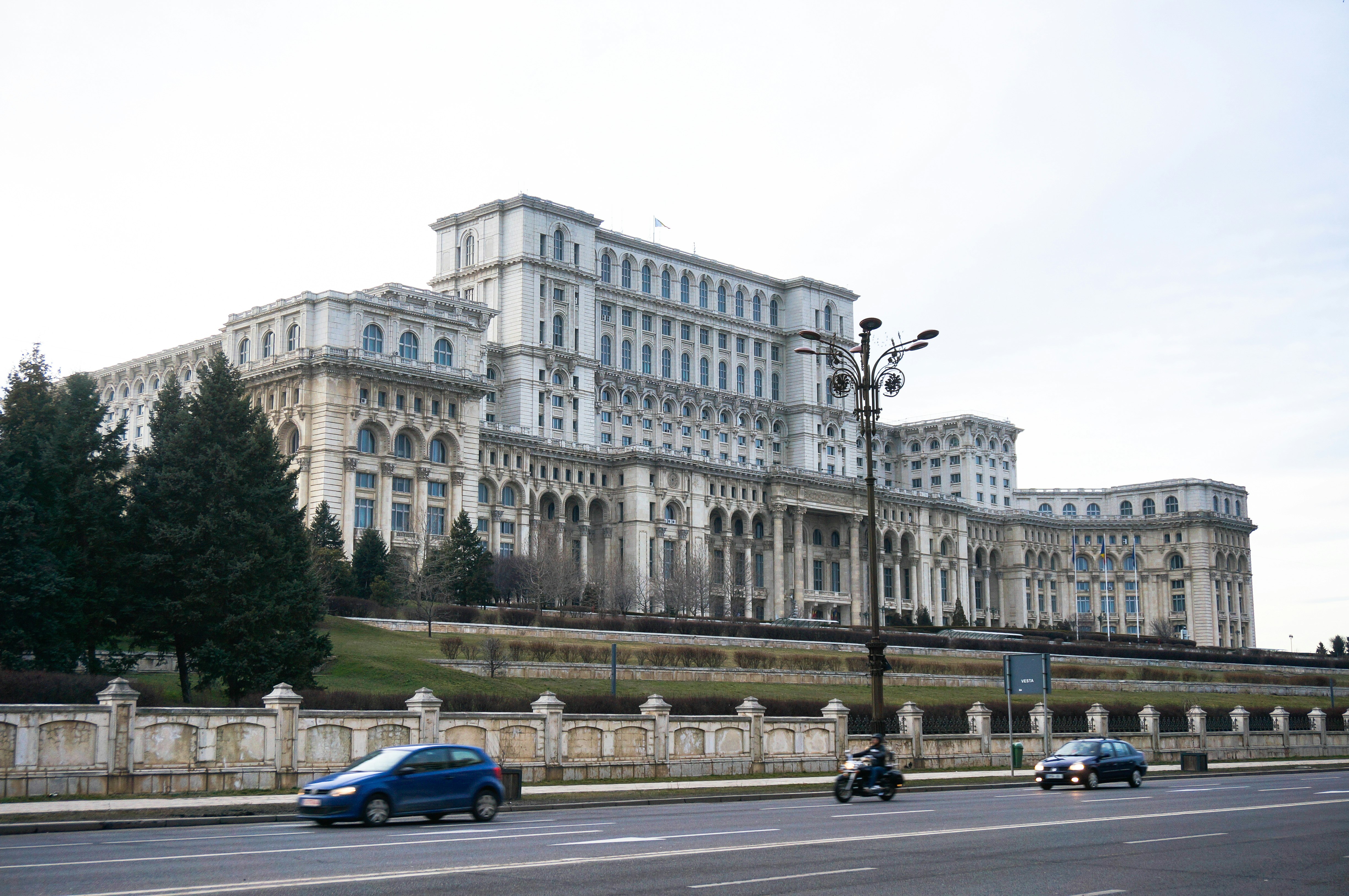
Be wowed by Bucharest’s Palace of Parliament
The year 2019 marked 30 years since dictator Nicolae Ceaușescu was deposed in a popular revolt, but his memory lives on in the form of a gigantic palace that rivals in size both the Pentagon and the Taj Mahal. The sheer scale of the building serves as a testament to the folly of dictatorship, though the elaborate interiors, in room after room after room, showcase the quality of Romanian materials and workmanship. After touring the building, repair to one of the energetic capital ’s dozens of cafes, bars and restaurants.
Getting to and around Romania
The majority of international flights arrive at Bucharest’s Henri Coandă International Airport . Several other cities have international airports that service mostly domestic routes, but also have flights to select European cities. Most international trains access the country via Budapest and onward to Braşov and Bucharest. Once inside Romania, an extensive bus and train network links major cities and towns.
You might also like:
Inside the campaign to create a ‘Yellowstone of Europe’ Top Bucharest festivals to plan a trip around 10 things you need to know before visiting Transylvania
This article was first published Dec 16, 2019 and updated Feb 19, 2022.
Explore related stories
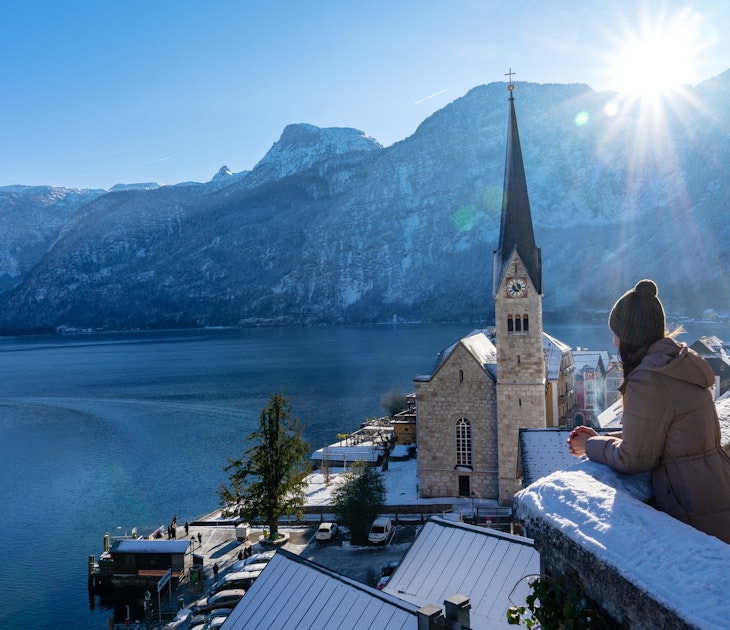
Festivals & Events
Nov 6, 2023 • 5 min read
Discover the many charms and conveniences of traveling off-season in Europe with these classic must-try trips.

Oct 20, 2023 • 3 min read
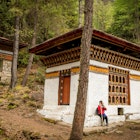
Apr 19, 2023 • 6 min read
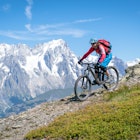
Apr 11, 2023 • 4 min read

Oct 3, 2022 • 5 min read

Jun 30, 2022 • 8 min read
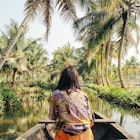
Jan 25, 2022 • 6 min read
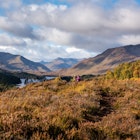
Sep 30, 2021 • 3 min read
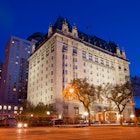
Aug 6, 2020 • 6 min read
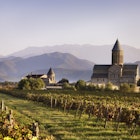
Jun 15, 2020 • 3 min read
Romania – a must-go in 2023
We use cookies and Inspectlet. By using this website, you accept the use of cookies which helps us provide you more interesting and adapted content.
Explore the Carpathian Garden
Come and explore the Carpathian Garden, a place where rural life still follows the rhythms of times past. In the 21st century visitors are welcome in hundreds of ancient villages situated in picturesque scenery all over the country. Tourists are not only special guests but also participants in household activities such as cooking, wood carving, weaving, haymaking, and farming.
The countryside is alive with legends, myths, and traditions that have been cherished for centuries. Few countries in the world have preserved so many customs or have such love for their folk music and dancing. Throughout the year, Romanians celebrate their ancient heritage, the changing seasons, religious holidays, and life-cycle events with festivals that have remained unchanged through many generations. To start your journey to the Romanian villages, Rășinari and Biertan in Transylvania offer a unique rural experience, while Ciocănești in Bucovina reveals the art of painting eggs. These are the three villages from Romania that participated in the 2022 UNWTO Best Tourism Villages contest.
Another must-do for 2023 is full immersion in the natural landscapes of the Carpathian Mountains, attractive for both summer and winter activities. The ski season on slopes between 600-1,800 meters lasts from December until March, and offers inviting, active vacations for both beginner and experienced snow sports enthusiasts.
The foothills in the heart of the country will tantalize you with the appetizing scents of fruits and wines. You’ll be enchanted by extensive views of golden fields of grains and sunflowers. Romania’s southern border is formed by the Danube, which wends its way from the Iron Gates to the Black Sea, its ultimate destination and where it transforms into a fascinating delta, declared a UNESCO Biosphere Reserve.
When in Romania you will be amazed by our tasty cuisine, a geographical and historical expression of our culture. Diverse terrain provides a variety of ingredients, and various cultures over time have each left their own savory imprints of flavors and colors. The exquisite wines produced here are the expression of an ancient heritage dating back over 4000 years.
As the 2023 European Capital of Culture , Timisoara will host a wide variety of events; the lavish agendas in other cities of the country will allow you to experience electronic, jazz, rock, medieval or classical music festivals all year round.
Hiking in the Carpathians
Biertan village, romania, the danube delta, romania, timișoara - european capital of culture in 2023, rășinari village, romania, decebal head at the iron gates, romania, the romanian athenaeum, ciocănești village, romania, romanian gastronomy, things to consider before traveling, how to choose your accommodation in europe: a guide.
In Europe, there is accommodation for every wish, price range, and desired experience. Whether it’s a tent suspended between two trees, a five-star hotel with a view of a turquoise sea, or a wallet-friendly hostel, it’s all here. The question is, what specific options do you have and how do you go about choosing? That’s […]
The ultimate guide to European currencies
How to convert cash, use cards, and reduce fees One of the great benefits of traveling around Europe is the ease of use when it comes to currencies. On much of the continent, you don’t need to worry about keeping different bills and coins or making mental-math conversations between one currency to another to […]
How to stay safe while traveling in Europe
No matter what, safety while traveling is most important. Luckily, Europe has a stellar safety record, and more than a dozen of its countries regularly appear at the top end of safest places to live and travel lists. To make your adventure safe and secure, consider these tips and best practices! Travel insurance […]
What you need to enter Europe
Visas, documents, and passports So, you are planning to visit Europe. Great! We will be happy to welcome you and share what makes this continent so unique. Here are answers to the most common questions about preparing for your trip. Addressing them now will make your travels smooth, easy, and convenient! Who needs a […]
Your complete guide to planning your daily life in Europe
Tips on local languages, mobile tech, and time zones We all know the feeling: your phone battery is dying or you’re passing through an area of weak signal. At home, it’s usually a simple annoyance, but when you’re traveling, not having access to a communications device is something you’ll want to avoid. So, how […]
Some tips to consider while traveling
Traveling around europe.
Your guide to trains, trams, busses and bikes Europe has one of the most advanced transportation systems in the world. From massive metropolises to small towns, you can easily link up from place to place by public transport. Riding the rails across this marvelous continent might be the best way to explore: it’s highly efficient, […]
Tips to communicate in Europe
Why speaking a few words of the local tongue will make your travel experience even better As you may have guessed, English is widely spoken in Europe, especially in northern countries. In many other countries, people have a good, if not fluent, grasp of the language. But that doesn’t mean that learning—and indeed using! […]
Your guide to passenger rights while traveling in Europe
If you’re a traveler, you’ve probably experienced a delay, cancellation, or other unforeseen issue. Of course, no one wants this, but it’s important to be prepared and perhaps most of all, to know your rights and privileges if a problem arises. So, what are your rights in Europe? Keep reading! Air Passenger Rights So, […]
EU destinations are at the forefront of green tourism
Seville (Spain) and Pafos (Cyprus) are setting the standard in smart tourism and were awarded European Capitals of Smart Tourism 2023.
Iconic postcard from Croatia
6th largest Roman amphitheater in the world!
Explore a hidden Dutch National Park
Sink your feet into the clear, cold waters of this hidden UNESCO World Heritage Site in the Netherlands and explore the natural wonders that await you.
Experience Serbia!
If you want to take a walk with your family in almost untouched nature, Serbia is the right place for your vacation.
Want to know more about Europe?
Sign up to our newsletter here:
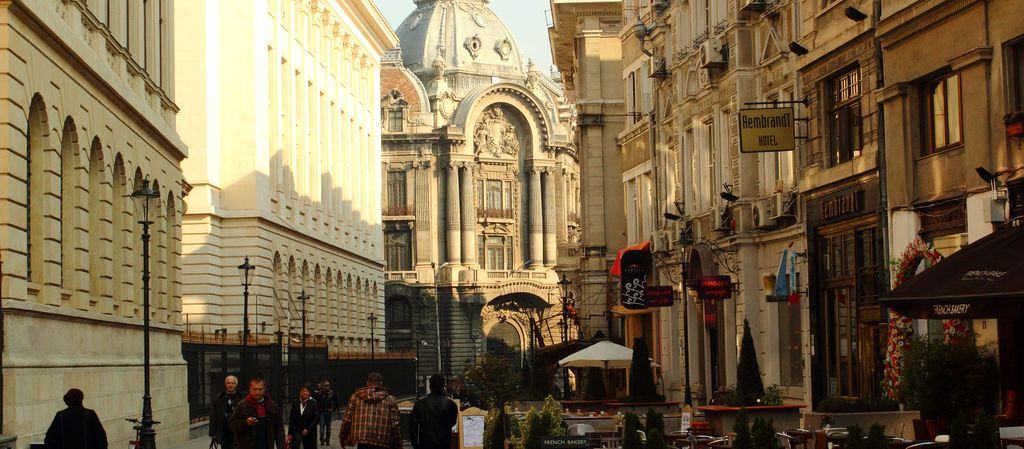
A practical, up-to date travel guide
2024 travel guide for first time visitors in romania.
If you're planning to visit Romania in 2024 for the first time (or returning!) and are looking for a complete, up to date travel guide with essential advice and practical Romania travel tips to plan your holiday - this article is for you.
As locals we'll tell you the most important things to know about visiting Romania, up to date info about our country and the best way to plan an amazing holiday here! But first - is Romania worth visiting?
In short - YES! For the long answer - in this post we've linked to many of our articles about Romania's tourist attractions, best things to do, natural beauty, local culture and traditions.
So if you need help with planning your trip don't hesitate to contact us - that's what we're here for! We have a network of 50 best guides all over the country and created authentic Romanian experiences and trips you won't find anywhere else :)
This travel guide was last updated in January 2024. So, let's get started:
Table of contents
Quick facts about Romania
- 1. Entry requirements & visa
2. Romanian currency, exchange houses and card payments
3. is romania cheap to visit tourist budget and holiday costs, 4. romanian geography and natural attractions, 5. getting here. public transportation in romania, 6. weather. best time to visit romania, 7. medical emergencies, 8. is romania safe to visit, 9. where to stay in romania. hotels and guesthouses, 10. romanian people and society, 11. romania travel tips no one will tell you about, 12. romania means much more than dracula castle..., 13. open your mind and heart to romanian people.
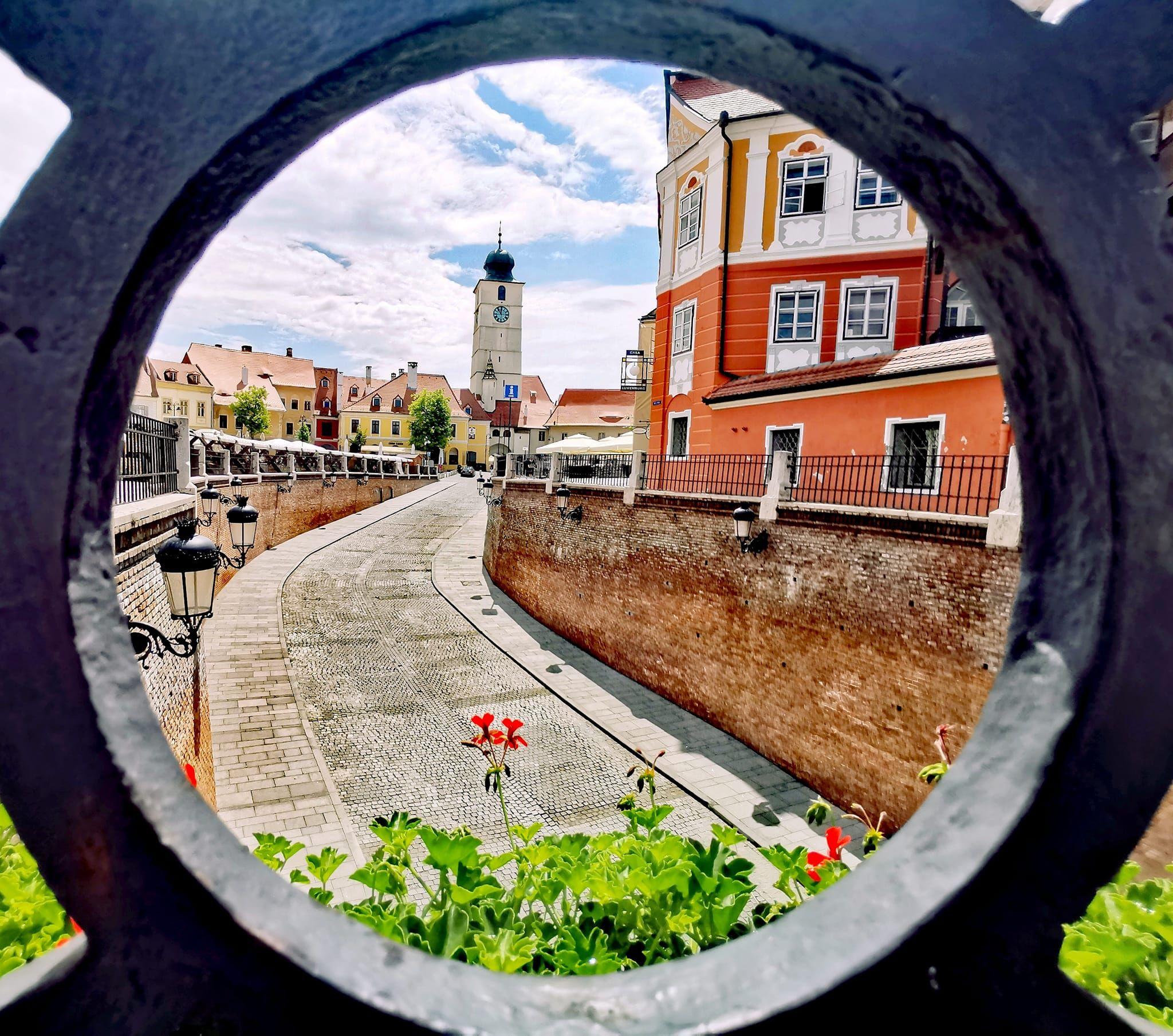
The Lower Town of Sibiu
Located in Eastern Europe, Romania is the 9th largest European country by surface with a very rich and diverse geography as you'll soon find out. It ranks 6th by population (approx. 19 mil) composed of 85% Romanians and other ethnic minorities such as Hungarians, Germans, Italian, Turks or rroma.
Romania is a NATO member since 2004 and part of the European Union since 2007. The local time in Romania is Eastern European Time (EET) +02:00 GMT
Our country is made up of 3 historical regions: Wallachia (South), Transylvania (North-West) and Moldova (North-East). The capital of Romania is Bucharest with approx. 2,2 mil. The next major cities are Cluj-Napoca and Iasi, the unofficial capitals of Transylvania and Moldova.
There are many reasons why it's worth visiting Romania. Main attractions and tourist destinations include:
- lots of famous castles starting with the famous Bran Castle, Corvin Castle or the ex-royal residence Peles Castle built by King Carol I, and 140 more!
- interesting UNESCO World Heritage sites: the 400-year old Wooden Churches of Maramures, the 500-year old Painted Monasteries of Bucovina, the 700-year old Sighisoara Citadel or the 2,000 year old ruins of Dacian Fortresses
- incredible nature with great hiking opportunities in the wild Carpathian Mountains which earned our country the title of Europe's last wilderness reserve or relaxation at the sandy beaches of the Black Sea coast
- eclectic sights mixing communist landmarks such as the huge Palace of Parliament ) with historic sites and medieval cities such as Brasov, Sibiu and Targu Mures in the center of the country
- unique sights such as the impressive underground Turda Salt Mine , the haunted Hoia Baciu forest or the thrilling Transfagarasan Highway
- the miracle that is the Danube Delta - 3rd best preserved biosphere in the world and home to over 300 species of birds
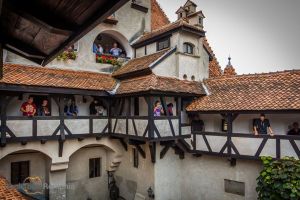
Top attractions in Romania Tours
View this post on Instagram A post shared by Romanian Friend (@romanian_friend)
- the famous South-East Transylvania with its main attractions: Saxon villages and fortified churches, castles, medieval towns
- the traditional Maramures region (upper North-West) with its Wooden Churches and folk costumes
- the spiritual Bucovina region (upper North-East) with its 500-year-old Painted Churches and egg-painting traditions
If you want an authentic experience of Romanian countryside you'll need at least 2 full days in any of these regions and to travel by car.
Romanian history is like Game of Thrones but without the fantasy part: at the intersection of Ottoman, Austro-Hungarian and Russian (later Soviet) empires, our history is full of twists and turns in the middle ages. We were always caught between the wars, domination and power plays of foreign power (hence the many castles in Romania and historical sites!).
Our history is a testimony of our nation's resilience, cultural identity and goal to unite the three historical regions into one independent state which happened only in 1918.
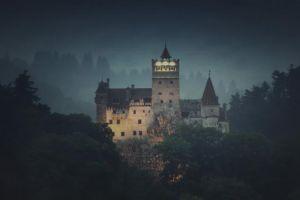
Castles, Fortresses & Historic Tours
As for Romanian culture and people, you'll see Romanians are very friendly and hospitable who love enjoying life, food and socialising. Our Latin blood and cultural affinity for Western Europe lifestyle mixes with a Balkan vibe and Eastern traditional values inspired by our Christian Orthodox religion. The best Romanian movies do a great job of showing this.
Although there are some prejudices and misconceptions about our country and people, those who've visited our country were pleasantly surprised and impressed by what it can offer - and we hope you'll be too! And if you're wondering who are some famous people from Romania - you might be surprised!
Now, on to the practical stuff with things to know and the latest information about visiting Romania:
1. Entry requirements & visa
Entering Romania is quite easy as visa requirements for tourism or short stays under 90 days are relaxed. On the Ministry of Foreign Affairs website you'll find lists of countries for which a visa is or not required.
Besides having a valid passport (or ID if you're from the European Union), for other travel documents needed also check the conditions of entry .
Besides European Union nationals, citizens from the United States, United Kingdom, Canada, Israel, Australia Singapore, don't need a visa when they enter Romania if planning to stay under 90 days. Make sure to double check entry requirements on your own too.
Holders of a Schengen visa with multiple entries (and slots still available and valid!) are not required to apply for a Romanian visa for entry.
You can apply for a visa online on the Ministry's (only) official website .
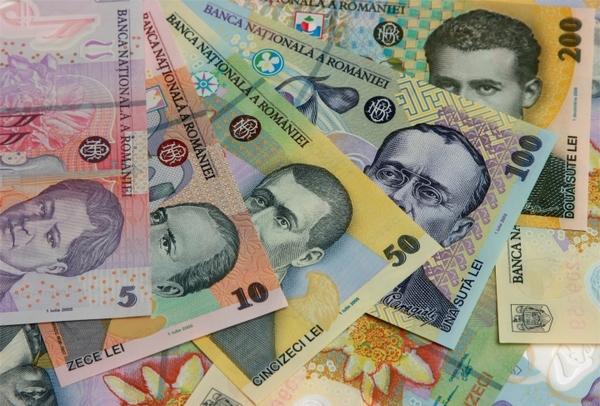
The Romanian currency is RON or informally called Lei. It comes in plastic, almost indestructible notes of 5, 10, 50, 100, 200 and 500. There are also some smaller-don’t-matter coins.
Although some prices in Romania may be displayed in Euro using Euros for cash payments is NOT accepted and if someone offers you an ‘in-house’ exchange rate - you should check official rates before accepting.
- 1 Euro is about 5 Lei and 1 USD is about 4,6 Lei - check official exchange rates published by the Romanian National Bank here )
Paying by card is very safe and widespread in Romania in all shops, restaurants, hotels or tourist attractions. But not in taxis, farmers market or artisan fares where you need to have cash. Debit cards issued by VISA, MasterCard and Maestro are widely accepted everywhere, but American Express cards may not always work. If you're using credit cards from a non-EU bank, make sure it's authorised for international payments.
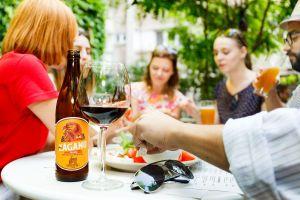
Bucharest Street Food Tour: Farmers' Markets & Hidden Streets
Start from: University Square
When travelling in the country or in the mountains cash is king so always have Lei with you and plan your budget ahead. Some guesthouses or restaurants in the countryside don't accept card payments, especially credit cards, so ask in advance.
There are plenty of ATMs in Romania (bancomat) to withdraw money from. The most common banks with safe & secure ATMs are BCR, BRD or Banca Transilvania. For fees, check with your local bank. In the countryside or mountainous areas it's harder to find ATMs but every village or small town should have one near the city hall.
What currency to bring when travelling to Romania: Euros, US dollars, UK pounds or Swiss francs are the easiest to convert anywhere. When you arrive don’t use exchange offices located in airports for more than 20 € / $ / £ for taxi fare as they usually have very bad rates aimed at unsuspecting tourists. You'll find lots of exchange bureaus (casa de schimb) in Romania, easily recognisable by their yellow or white street boards indicating rates offered.
- Pro tip: rates at exchange bureaus are usually better than at banks and 90% of them don't charge any fees
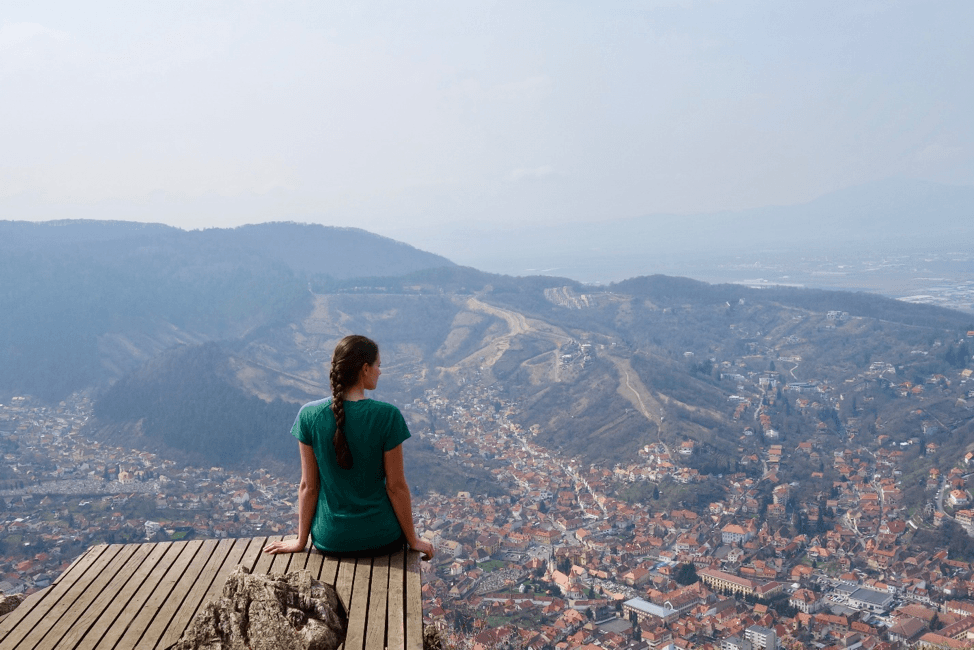
View over Brasov, one of the best preserved medieval towns
Up until 2020, Romania used to be known as a cheap destination but this changed in the last 3 years... why?
The hospitality and tourist sector were strongly affected after two hard years of Covid-19 and a low 2022 caused by the invasion of Ukraine war-scare.
Many guides had to get regular jobs while small operators and guesthouses lowered their value-for-money ratio and/or closed shop. Meanwhile, the 'surviving' businesses and guides raised their prices to keep up with demand and rising costs.
- We have a network of 50+ guides and partners all over the country, so we witnessed the disaster firsthand while trying to stay alive. Since 2017 our mission has been to support local communities by including their services in our tours. So if you book a tour with us you'll directly help small businesses and people in Romania!
The wider European economic context (energy crisis, inflation) coupled with higher local taxes meant everything got more expensive in Romania by 20-30%.
The good news (ironically!) is prices increased all over Europe - and the world too, since the global economy is not doing great. So on a relative scale Romania is still cheaper to visit compared with most European countries if you plan your holiday well or go off-the-beaten path. Key info:
- generally, the value-for-money you get in Romania for tourist activities (e.g. guided tours, wine tastings, fine dining, SPA etc) is very good
- prices in major cities where the main attractions for tourists are ( Bucharest , Cluj-Napoca , Brasov and Sibiu ) or on the Black Sea Coast are higher compared to other ones, but on the flipside they have lots of choices for every budget, so shop around!
- in small towns and villages, prices for meals and accommodation are on average 20-30% lower
A reasonable budget per day if you're planning to travel to Romania is between 30-60 Euro for accommodation, meals and small expenses. In restaurants a main course is around 25-50 Lei (5-10 Euro), soups around 10-20 Lei (2-4 Euro), soft drinks start from 1,5 Euro while alcohol from 2 Euro. Entrance fees to tourist attractions range between 4-15 Euro
For a better idea of how expensive Romania is, for a 3-day city break in Bucharest or Cluj-Napoca budget around 200 - 350 Euro in total for 2 people (excl. flights and guided tours) with generous meals and drinks included, tickets and local transport. A 7-day guided tour starts from 2,000 Euro per person for 2 people, depending on hotels, activities and itinerary.
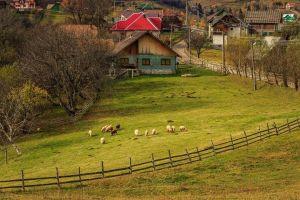
3-Day BEST of Transylvania Tour: Brasov, Sighisoara, Bran & Viscri
Start from: Bucharest
Tipping in Romania is very common and usually expected. Service fees or coperto is not included when going out in restaurants (unless expressly mentioned!) and a 7-10% tip on top of the bill is common. If you’re really happy with the service you can go up to 15%.
Tips for small, personal services (body care & cosmetics, hotel concierge, drivers, etc.) are also welcomed. Tipping tour guides is also common on average 10-15% of the tour price. And if the guide doesn't say anything (because they're usually uncomfortable asking!) - just do what feels right to you.
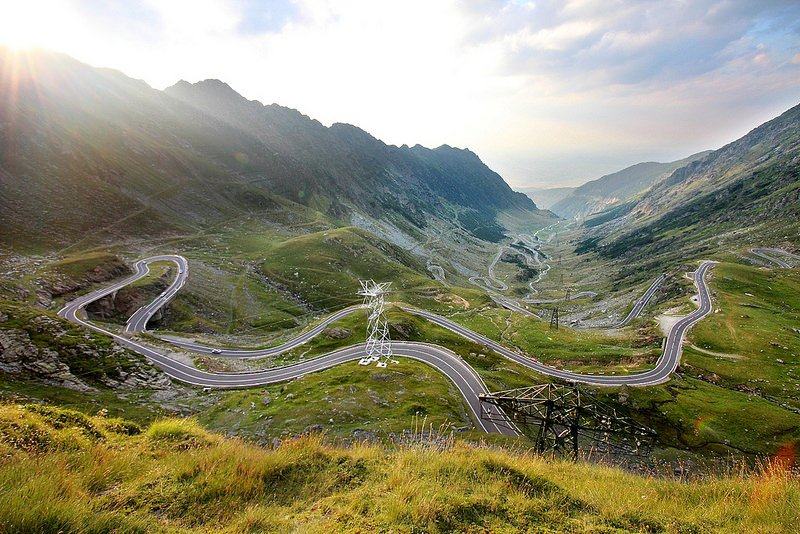
This is Transfagarasan Road one of Romania's top attractions
Romania has been blessed with a rich and diverse geography with lots of natural attractions which makes it one of the most beautiful countries:
- the Black Sea coast with fine sandy beaches
- the Danube River creates the Danube Delta with vast waterways and lakes
- picturesque hills and old-growth forests in Transylvania
- the wild, impressive Carpathian Mountains (also known as Transylvanian Alps)
Check our selection of hiking tours with licensed guides
Going as high as 2,544m (at Moldoveanu, the highest peak) the Romanian Carpathians and their foothills take up almost 45% of our land surface.
With over 100 peaks over 2.300m altitude, lots of trails for all difficulty levels offering incredible natural landscapes and a wildlife population that earned us the title of Europe's last wilderness reserve - this is a great place for your next hiking holiday. Our article on best hiking trails in Romania will tell you more.
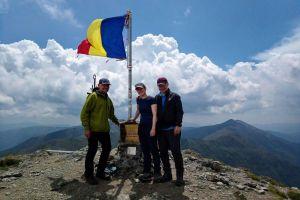
7-Day Peaks of Romania [Shared Group Trip]
Start from: Brasov
In terms of natural attractions, besides the many national parks (Piatra Craiului, Bucegi, Apuseni being the most famous), I would also mention the Muddy Volcanoes , the Romanian Sphinx or the 7 stairs canyon.
The simplest and most convenient way to travel to Romania is to fly here. Besides the main airport (Bucharest Otopeni), there are 9 airports in big cities served by low cost airlines (Wizz Air and Ryan Air mostly) with flights to over 100 destinations in Europe. This is because there are close to 4 million Romanians living abroad so there's a lot of commuting. If you plan well and in advance, you can find tickets as cheap as 60 Euro round-trip.
- Local tip: check our guide on Bucharest airport so you have a 'soft landing' here :)
Besides a Southeastern Europe and Romania road trip, you can also get here using direct trains from Vienna, Budapest, Belgrade, Sofia or Thessaloniki. We prepared an article on travelling to Romania with additional information on this topic.
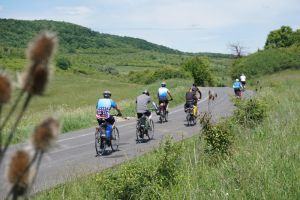
2-Day Transylvania Bike Trails Tour: Viscri & Saxon Villages
Public transport in Romania is a little more challenging. Unfortunately road and railway infrastructure is underdeveloped. There are few highways and mostly one-lane roads which are heavy with traffic (including trucks) so driving 100 km by car can take 2h. And though there are lots of train stations in the whole country, because tracks are old trains go slow (average of 80 km/h). At least they're cheap!
For short distances (>200 km) a car, train or bus is a good choice. For medium or long distances (over 300 km) you should consider breaking your itinerary or catching an internal flight (eg. from Bucharest to Cluj or Timisoara). Visitors to Romania are well advised to have travel insurance before getting here. Our guide on public transportation in Romania will have more info on this.
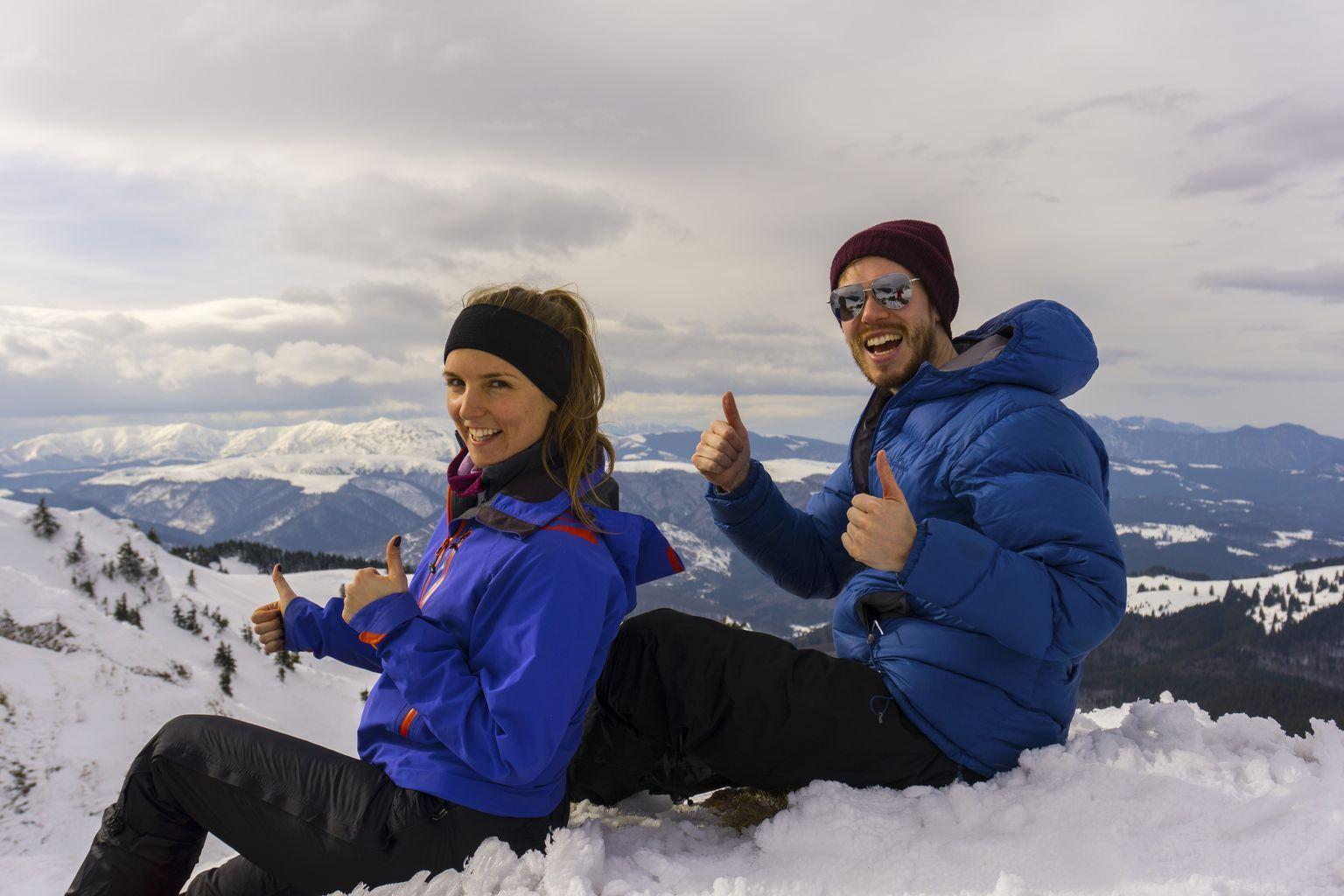
Romania has a temperate continental climate which used to be codename for standard weather. But in the last 10 years the effects of climate change are starting to show. We wrote a bigger article on the best time to visit Romania describing the weather and with visiting tips for each season.
In short, for sightseeing trips come anytime April - October when the weather is fair, warm and days are longer. Peak season for holidays is 1 Aug - 15 September so if you're planning to travel to Romania then, make sure to book everything in advance!
The best time to go hiking and for outdoor activities in general is from late Spring to mid October but this depends on where you're going. For example, in mountains at altitudes of over 2,000m (eg. Fagaras, Retezat or Bucegi) there can still be snow until late June and weather is unpredictable. High season for hiking is Aug-Sept when there's less rain and fair weather.
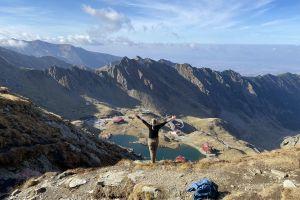
Transfagarasan Road & Hiking Day Trip in Fagaras Mts
For wildlife tours - we follow nature's rhythm. Animals - especially brown bears - are active from late Spring to late Autumn, depending on how warm and cold it is. The best time to visit with the highest chances of seeing wild animals is during Summer, but these trips usually have complex logistics, go into remote areas and are in high demand - so book them in advance!
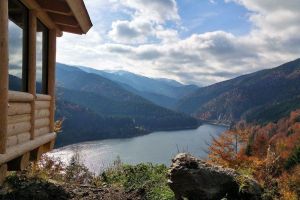
3-Day Hiking & Wildlife Trip at an Eco-Luxury Private Cabin in Fagaras Mts
Start from: Rucar, Arges county
- Local tip: our personal favorite time to visit Romania is Autumn: starting from early September a superb array of gold, orange and brown will cover the vast Carpathian woodlands
The best time to visit the Danube Delta is April - October when nature at its best: lush vegetation in full bloom, birds nesting or playing around and lots of fish.
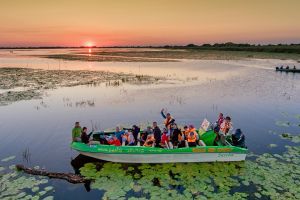
4-Day Danube Delta: Birds, Letea Village & Lakes [Group Trip]
Start from: Tulcea
Compared to other countries, the peak holiday season by the Black Sea Coast is shorter, typically from 15 July - 30 August. Winter in Romania is quite cold, but not humid. In mountainous areas there's lots of snowfall, but less so in the plains. The Romanian ski resorts come alive during the winter months of Jan-Feb but you can also take a cable car ride outside the season.
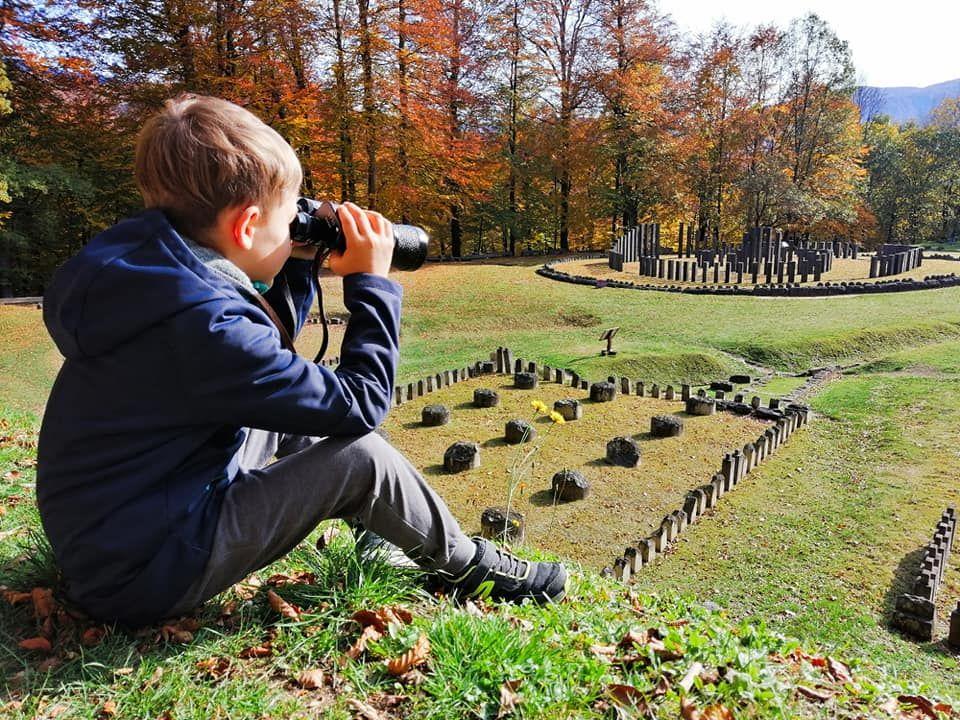
the UNESCO World Heritage site Ruins of Dacian Citadels
In Romania the emergency number is 112 and an operator will ask if you want to talk to the police, fire or medical services.
There are no particular health concerns you should be aware about. No special insects or food issues around here either. As vegetation is very diverse and rich, those with pollen allergies should be prepared.
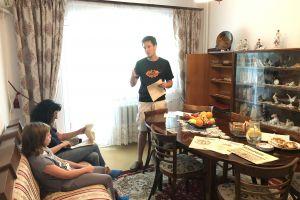
Museum of Communism: A Time-Capsule of Ordinary Lives
As regards medical services most hospitals are public and state-owned so they will take care of any walk-ins or emergencies - and settle insurance matters after. But you still need travel insurance, even if from a foreign issuer, whether you travel to Romania or anywhere else in the world.
Unfortunately healthcare in Romania is severely underdeveloped and understaffed so better lower your expectations of what a hospital should look like and how you should be treated. But medical staff is usually kind and will do their best to help you.
There are plenty of pharmacies in all urban areas and you can easily get the usual over-the-counter pills for colds, aches, indigestions or bruises.
Finally, we highly recommend you have a travel insurance. For citizens of the European Union countries, the European Health Insurance Card (EHIC) which offers health coverage EU-wide is a good option.
Is Romania a safe travel destination? Yes! There are NO terror attacks, violent protests or civil disturbances here. We have very strict firearm regulations - so no crazy people with guns either.
So is Romania safe for travellers? Yup, and even though you may have heard or read scary stories about traveling in the Balkans, just do what you normally do when in 'tourist mode:' don’t look for trouble, beware of pickpockets or suspicious people, ignore drunkards and people pushing their services to tourists (like taxi drivers in North Train Station), be careful at night and don't disrespect people, traditions or clearly stated rules.
This applies to female and solo travelers as well.

Cluj-Napoca Food Tour: Food Markets, Regional Dishes and Coffee Culture
Start from: Cluj-Napoca
We wrote an extensive article with Romania safety travel advice that will answer everything.
You may have heard stories about the rroma ethnic minority (improperly called gypsy) and how they're usually involved in small thefts, cons and begging. While their reputation might be bad, not all are like that. Most of the time you will see them as beggars, even using their children for money - but don't get fooled and give them anything as you're only perpetuating the cycle and not really helping them.
On our tours in Transylvania we take people to typical Rroma villages to find out about their culture and lifestyle in an authentic way firsthand.
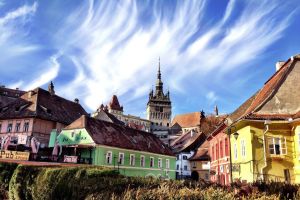
Tour of Transylvania's Countryside: Sighisoara Citadel & Fortified Villages
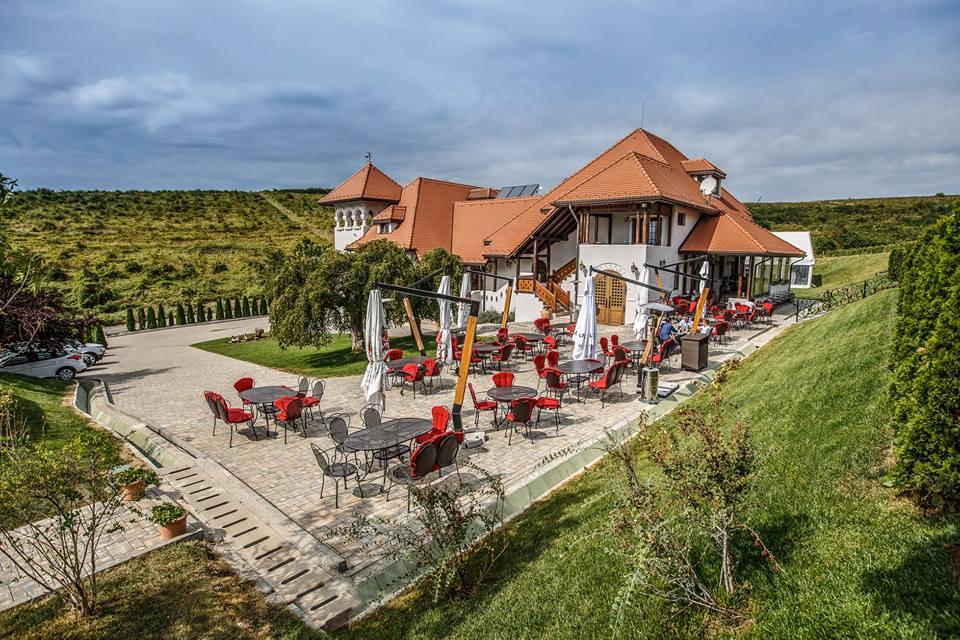
Romania offers lots of accommodation choices for all budgets, requirements or styles. All of them are listed on either Booking.com or AirBnB .
In the most visited cities you'll find a large selection of hostels, hotel rooms and boutique guesthouses. Lots of apart-hotels too. It's best to book them before you travel to Romania as walk-ins are rarely a good idea.
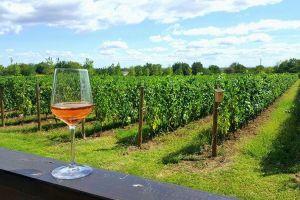
The Wine Tradition of Romania: Premium Wine Tasting in Dealu Mare
The other tourist cities are not that big so even if you're not staying in the "old town" or "union square" area (usually the city centre and most crowded areas), it will probably be a 5-15 min walk away. Besides walking, I personally like to keep my healthy routines while traveling and found some easy travel workouts to do.
When visiting the traditional tourist regions of Romania (Transylvania, Maramures, Bukovina, Danube Delta) accommodation usually means a family-owned guesthouse offering bed and breakfast in a small village. These are called pensiune or casa - no hotels or restaurants here. Most of them offer a private rooms with en-suite WC and half board we suggest you take it since there are likely few alternatives to eat out. For hiking trips villages at the base of the mountains usually have lots of guesthouses. But sometimes the hiking trails begin a little further away so you'll need a car or guide to get there. When going deeper in the mountains you'll have at most 1-2 choices to stay in, usually mountain cabins or chalets. Romania's hiking infrastructure is not well developed and hut-to-hut hiking is not possible for this reason.
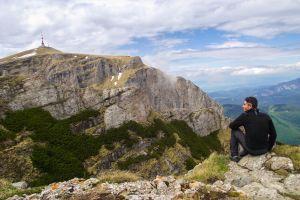
1 or 2 Day Hiking Trip in Bucegi Mountains: Sphinx, Babele, Omu Peak
Start from: Bucharest OR Brasov
Due to their very limited accommodation options and very high demand, we highly recommend you book your hiking trips in advance (min 2-3 weeks).
There are many good reasons to explore the Romanian countryside (the best place for culture trips), and here's another one: to stay in the many charming, authentic or luxury guesthouses. In recent years locals bought and restored old boyar (aristocrat) manors, traditional village houses (like King Charles did in Viscri), built modern eco-luxury villas, or converted large old farmhouses into agro-tourism cottages straight out of a fairy tale. See some inspiration here and make your trip to Romania memorable!
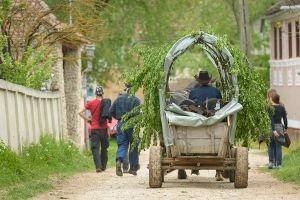
2-days of Agro-Tourism in Transylvania at a Local Farm
Start from: Cobor or Brasov
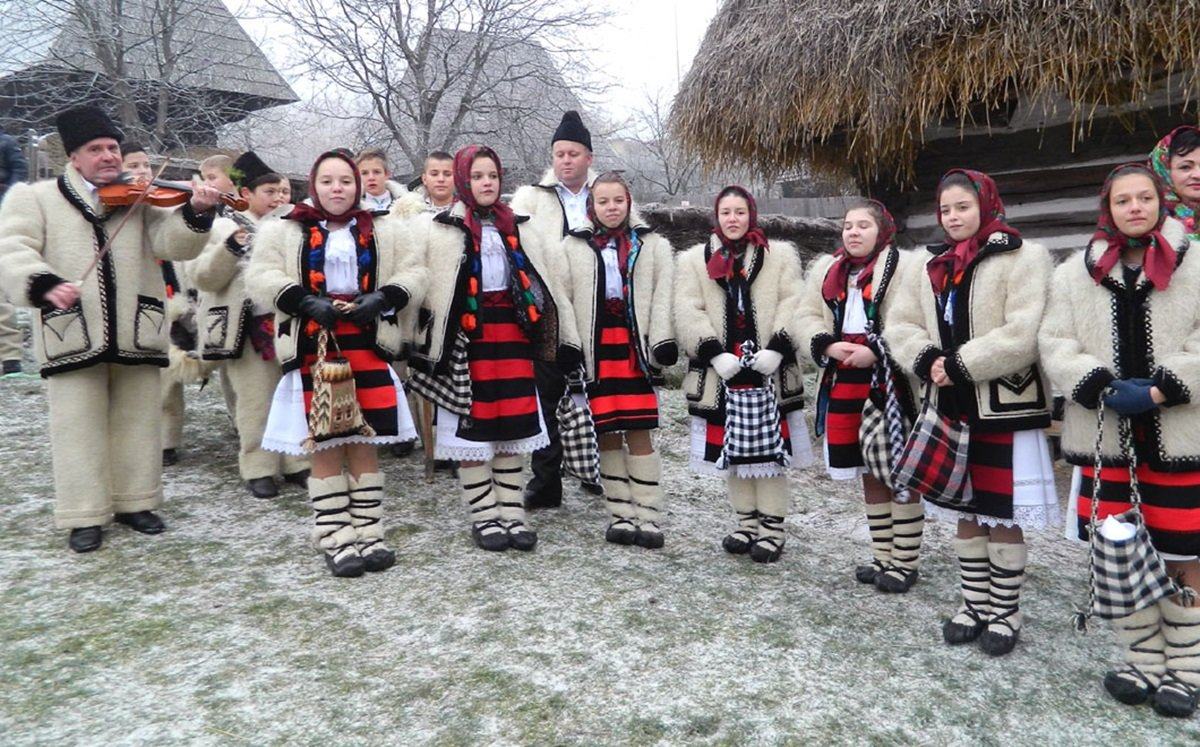
Traditional folk singers in Maramures
Romanian people and society is generally conservative and adheres to traditional values, especially older generations who grew up in the 45 years of Romanian communist regime .
Spending quality family time and having good relationships is important in our society. There are lots of destinations and facilities for this, which is why you should consider a holiday with the kids in Romania .
85% of the population is Christian Orthodox so major religious holidays like Easter or Romanian Christmas are celebrated through public holidays (when all tourist attractions are closed by the way).
Religion plays an important role in our society, especially in rural areas where people dress up and go to church every Sunday. There are lots of historic churches valuable for small communities where priests enjoy great influence. But beyond their religious function, Romanian churches are worth visiting because they are a unique place to discover authentic Romanian culture and folk traditions. Romanians, though being the majority of population in these parts, were historically persecuted (especially in Transylvania) for our faith, language and culture by foreign rulers. So churches were the only safe havens and community spaces Romanians had.
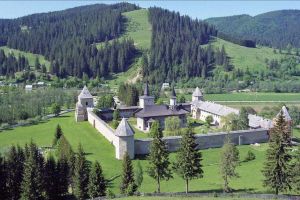
5-Day Complete Tour of Traditional Maramures & Bucovina
But Millennials and younger generations are very liberal, open-minded, friendly, tech-savvy and influenced by Western lifestyle and values. Most, if not all, young people speak English, are very eager to help foreign visitors have a good time in Romania and will quickly teach you Romanian words to get around.
- Pro tip: Romanians like to complain about politics, the economy and time in traffic, and love talking about sports, Romanian food and where to go when traveling to Romania – so pick any of these topics to start a conversation :)
Go on a brown bear watching tour in Transylvania
As a frequent traveler myself, I spend A LOT of time doing online research to see what are the most popular places to visit and interesting things to do in a new place. I compare tours, prices, check public transportation, read forums, travel blogs, Instagram - the usual!
But this becomes confusing and stressful when planning to visit Romania because of outdated, incomplete or vague info. There's no official travel portal or assistance from Romanian tourist authorities. Tour operators compete on prices on Viator and similar websites - not on value or authentic experiences.
That's why I started this website in 2017 and partnered with the best and friendliest people. We want you to have a great experience and a memorable holiday when you travel to Romania and here's our advice on how to do that:
- first, read about the major tourist cities , best places to visit and things to do in Romania and make a list with "must see" and "nice to see"
- second, look at the map of Romania to see where they're located and understand the logistics and limitations of getting around Romania and on Google Maps
- third, decide the basics like how many days you have for your holiday, what's your budget and what are the best places to start or end your trip
- fourth, beware that most tourists who travel to Romania underestimate how big the country is and want to do / visit too much in too little time! For example, if you want to visit a traditional region like Maramures or Bucovina where tourist sights are spread in the surrounding areas, you'll need 2-3 days on top of the time needed to get there by car; the same if you want to visit the Danube Delta which can be done only by boat!
- finally, think about what kind of holiday do you want in Romania? to visit as much as you can and go from one place to another? to go hiking and see wildlife? to experience traditional village life through slow travel (the best way)? Romania has much to offer but because it's quite big and traveling is slow - you can't have it all!
Once you're clear on the above, here's how we can help you:
- a a do-it-yourself holiday: book places to stay on your own, use public transportation to get around and book day trips from different cities (more time + energy + hassle for you, but cheaper and we can give you a disccount)
- we prepare a fully guided private trip for you with as much as you want, within your budget, using our best guides, expertise and local connections (a couple of emails/calls with us, no stress for you, and an amazing value-for-money holiday)
- if you need help deciding or making a plan - we know everything about tourism in Romania and are happy to help - just contact us
Important: because Romania is such an underrated and undiscovered tourist destination, tourist numbers are very low so 90% of tours in Romania are private except for city tours and a few day trips to the main attractions such as Bran Castle, Peles Castle, Sighisoara Citadel or Transfagarasan Road. All our hiking tours are private too because we don't combine people with different hiking experience and fitness level.
In 2024 we run 2 shared, small-group tours with fixed departures in the Summer so check them out:
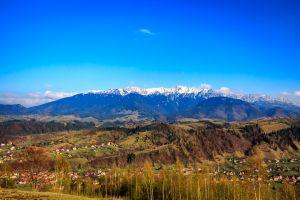
8-Day Exclusive Romanian Experience [Shared Group]
Romania is very popular thanks to Count Dracula touristy stories surrounding the famous Bran Castle known by its touristy name Dracula's Castle.
But there's so much more to do here other than visiting Bran Castle thanks to a fictional Hollywood character loosely connected to our history. Even though most tourists visit Romania looking for Dracula legends , once they're here, find out about the other main attractions and meet locals - surprise and wonder sets in!
The capital city Bucharest is a bustling city of contrasts. Though rough on the edges it is by far the most diverse and attractive for tourists. The main tourist cities of Brasov and Sibiu are famous for their Old Town with medieval architecture. But Cluj Napoca, Timisoara , Oradea or Iasi have their own stories to tell. But Romanian culture and spirit is best experienced when traveling in rural areas - perhaps on horse drawn carts . The ageing locals who preserved the traditional, authentic Romanian village life have done so by keeping a low profile, away from civilisation and busy "modern" life.
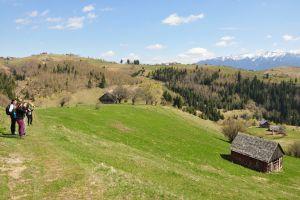
Day Trip to Traditional Mountain Villages: Magura & Pestera
The charm of Transylvania that made the UK's King Charles fall in love with Romania and buy village houses here can't be experienced on a touristy day trip from the capital to Brasov and Dracula Castle.
- `Local tip:`we created the first volunteer trip in Romania that combines tourist activities (hiking and wildlife watching) with hands-on environmental work at a typical rural farm, a tree nursery and for wildlife conservation. This will be a great experience for conscious travelers
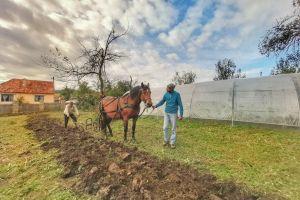
6-Day Volunteer Trip: Farm Life, Tree Nursery & Wildlife Conservation
You need to go deeper into rural areas with a tour guide who has the connections to show you around, meet locals, enjoy Romanian cuisine with home-grown food and experience their way of life firsthand. You need to slow down - which is rare in the fast-paced world of today - and a ride on horse-drawn carts will help with that :)
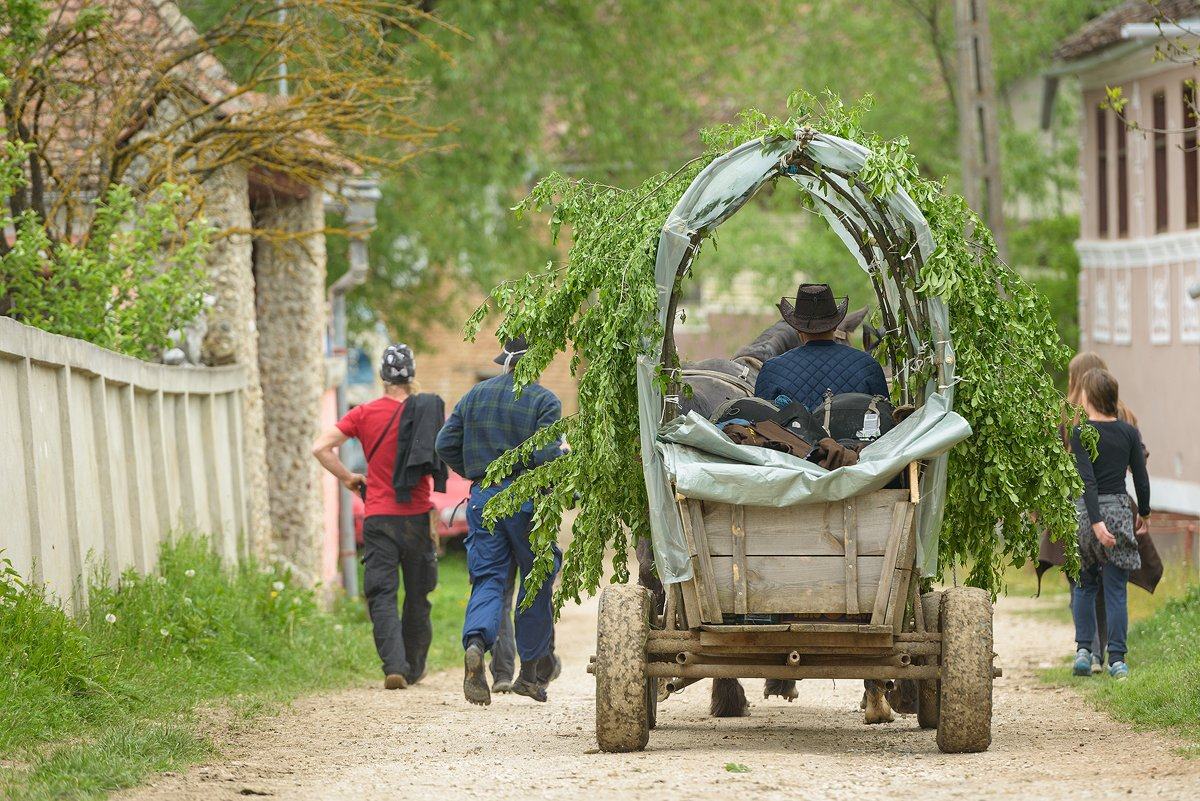
Transylvania Tours and Trips
Sadly, time is passing for our elders. Many Romanian villages have been abandoned and lost their ways since younger generations moved to larger cities. And if you add Romania's underdeveloped tourism and public transport infrastructure in the mix, then you'll see why our honest and friendly recommendation for the best way to experience Romania is to hire a local guide. Here are 3 reasons why:
- first, for a decent price you'll have less stress with planning and driving (not easy!), and you'll actually understand what you're visiting instead of just taking a picture! besides learning about our history and culture, our guides have connections to locals, lesser known places and sights you wouldn't be able to find on your own, especially in rural areas
- second, since 2017 we at Romanian Friend personally built a network of 50+ guides and partners all over the country; our guides are licensed and specialised in certain travel types (culture, hiking, wildlife, etc.) or regions, and deliver exceptional services so you get great value-for-money when visiting Romania; we've welcomed over 10,000 travelers on our tours and are proud of our reviews
- finally, we created tours that support responsible, inclusive and eco-friendly travel so if you travel to Romania and book with us, your visit will directly benefit local people and communities; this is our mission
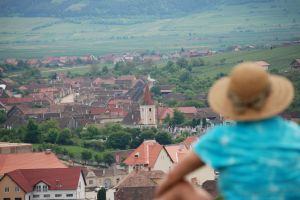
Day Trip: Village Life in Sibiu Countryside
Start from: Sibiu
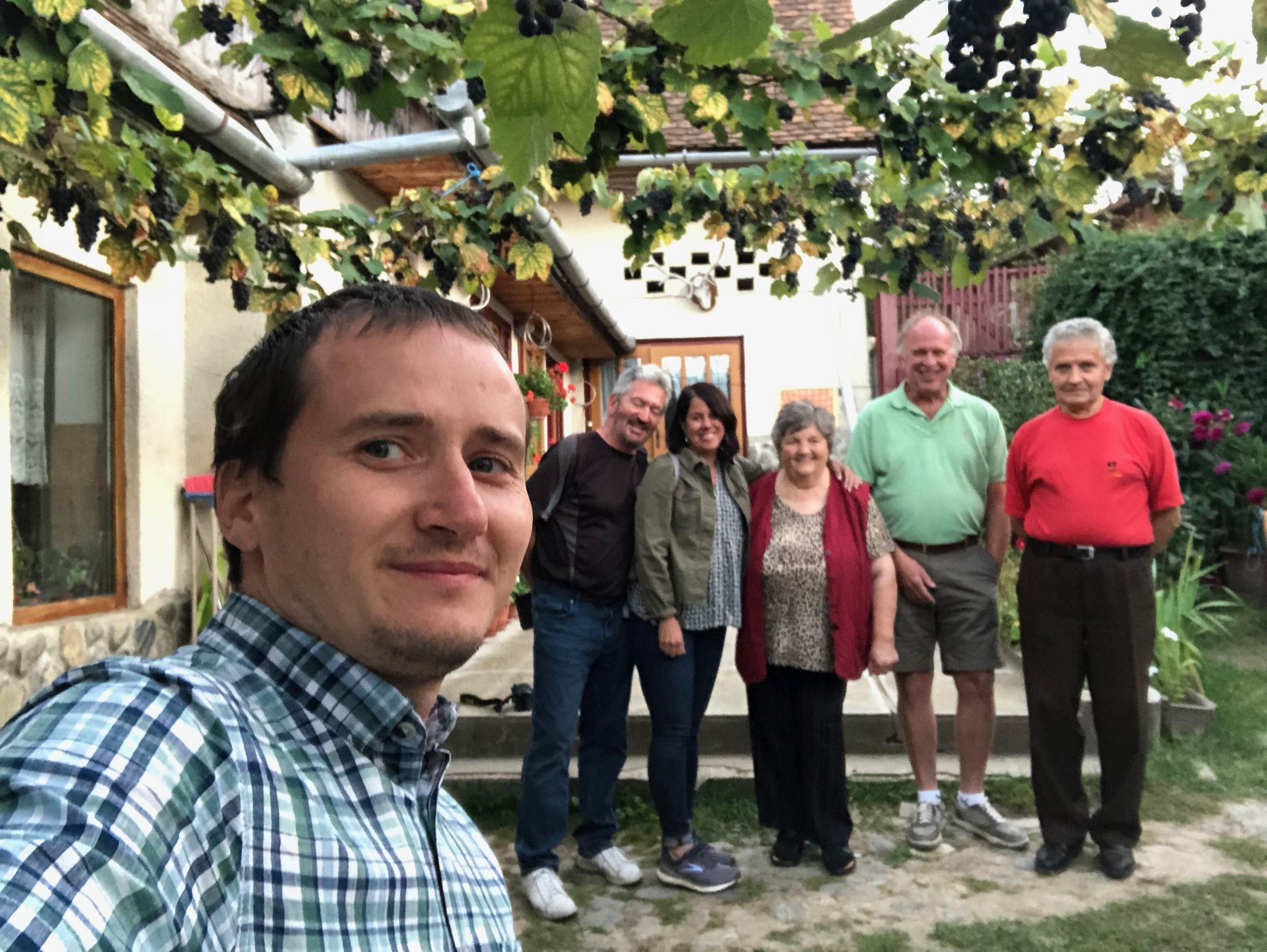
Our guides will organise home-hosted meals for you
Final tip: if you visit Romania, spend some time to get to know locals. Romanians are very hospitable, thoughtful and warm people. They enjoy having guests and will treat you like family, feed you till you drop (literally!), bring out their best wine or tuica and generally go out of their way to make sure you have a great time. In our guide to Romanian cuisine we explain how so much of our culture and social life is connected to food, hospitality and enjoying meals together.
But so much hospitality and friendliness towards strangers might seem too much at first, or even make you feel uncomfortable. But this is just how Romanians are and an integral part of our culture: family, friends and community play a big role in Romanian life - even if Bram Stoker never mentioned this in his Dracula novel! If you have the chance, go to any Romanian festival and you'll see what I mean :)
Abandon any pre-conceptions about Romania and open your heart and mind while you're here, explore the country and meet locals. Let them show you what a beautiful country we have. Despite the uncertainties of travel, Romania will still surprise you, I'm sure of it. Why?
Because I've heard this so many times from our clients: Wow, I never thought Romania has so much to offer!
So that's it - I hope this will make it easy for you to travel to Romania and have a memorable holiday! I started Romanian Friend as a one-stop-shop to promote my country and its people, so you'll find everything you need on this website.
And if there's something missing, you have a question or need help with planning - just contact us - happy to help!
Your Romanian Friend (and founder)
Check our tours
- By category

Local insights from Romania
4 times a year we prepare a newsletter with local stories, places and our special insights about Romanian culture and local life that will inspire you to visit our country and have an authentic local experience. Would you like to get it?
#romanianfriend

Unveil the future of travel at Romanian tourism fair 2024
Saturday, February 17, 2024 Favorite
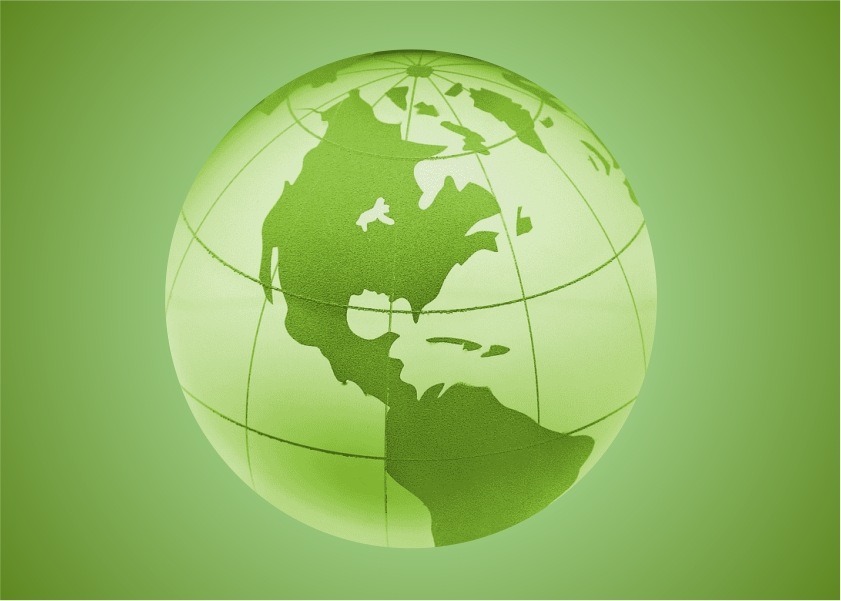
Experience the Future of Tourism at the Romanian Tourism Fair, February 15-18, 2024
We are thrilled to welcome you to the Romanian Tourism Fair’s spring edition, scheduled for February 15-18, 2024, at the expansive B2 Hall. This esteemed gathering is a seminal event for the travel and tourism sector, offering an unparalleled opportunity for unveiling new products, networking with industry leaders, and discovering innovative growth avenues in tourism.
Celebrating Our 49th Edition: A Legacy of Distinction
As we approach our 49th edition, the Romanian Tourism Fair continues to honor its heritage of distinction by assembling a wide range of participants from travel agencies, tour operators, to a myriad of tourism service providers. This year’s fair emphasizes both international and local Romanian tourist attractions, showcasing the finest in the industry. Our exhibitors span local governments, tourism associations, and more, all dedicated to promoting Romania’s rich tourism potential.
A Crucial Hub for MICE and Worldwide Travelers
Beyond serving travel professionals, the fair is increasingly vital for MICE organizers and global explorers, offering a treasure trove of corporate event, conference, and unique travel planning resources. It’s a prime spot for discovering cutting-edge solutions and destinations for tailor-made journeys and professional gatherings.
Unveiling Innovations in Tourism
The Romanian Tourism Fair transcends being merely an event—it’s a comprehensive experience that lets you explore the latest in tourism offerings. From accommodations and leisure to various services, the fair is a vibrant showcase of both new trends and traditional hospitality, essential for industry stakeholders worldwide.
Opportunities for Networking and Business Expansion
This fair is the perfect setting for forging new relationships, enhancing customer engagement, and discussing future trends with peers. It’s an extraordinary platform for direct interactions with key industry figures, facilitating discussions that pave the way for fruitful partnerships and business success.
Championing Romanian Businesses
Organized by Romexpo with several partners, the fair is dedicated to fostering the Romanian business scene, offering companies a stage to highlight their innovations and growth strategies. This event not only celebrates past achievements but also eagerly anticipates future opportunities in Romanian tourism.
Highlights from Past Events
Historically, the fair has attracted a diverse group of exhibitors, with a breakdown from previous events indicating a strong representation across the tourism sector, from tour operators and travel agencies to cultural institutions and beyond, highlighting the fair’s comprehensive appeal and significance.
Your Invitation to a Pivotal Gathering
We extend an invitation to industry professionals, pioneers, and enthusiasts to be part of the Romanian Tourism Fair’s spring edition. Whether your focus is on MICE planning, unique travel experiences, or expanding your professional network, this fair promises to be an invaluable event for shaping the future of tourism and forging lasting industry partnerships. Mark your calendars for February 15-18, 2024, and gear up for an event that will transform your business and the tourism landscape.
Subscribe to our Newsletters
« Back to Page
Related Posts
Tags: Business Growth in Tourism , MICE Events , networking opportunities , Romanian Tourism Fair 2024 , Tourism Exhibitions , travel and tourism industry
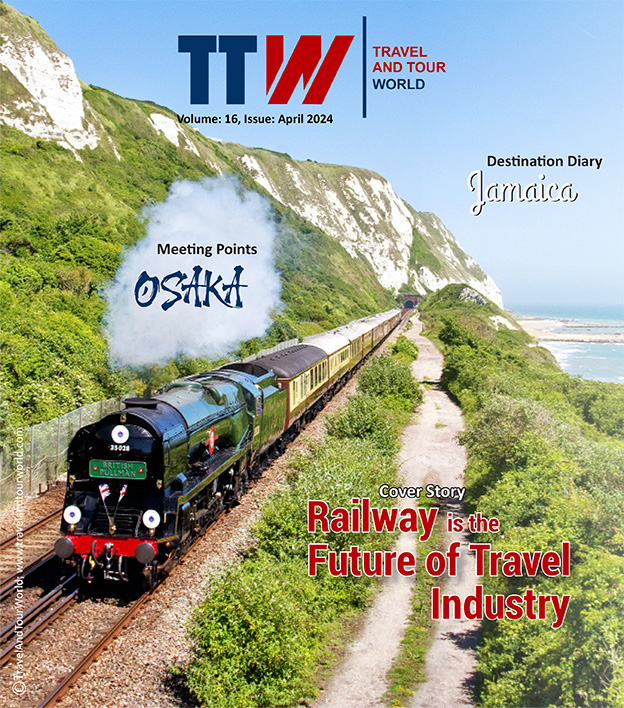
Select Your Language

I want to receive travel news and trade event update from Travel And Tour World. I have read Travel And Tour World's Privacy Notice .
REGIONAL NEWS


Why East London Tube Station Was Closed Yesterday?
Wednesday, May 1, 2024

Switzerland Tourism Unveils Revolutionary Branding Logo With ‘Switzerland&

Asian American and Native Hawaiian/Pacific Islander Heritage Month in Seattle

Air Canada Drops Seat Selection Fee After Breakthrough Passenger Outcry
Middle east.

Saudi Arabia’s Future Hospitality Summit Goes Digital, Sets New Global Sta

UAE Weather Department Issues Warning as Dust Storms Threaten Popular Western De

AirAsia Announces Flight Disruptions to Kuching, Sibu, and Bintulu Due to Mount

AirAsia Expands Its Reach with Launch of New Airline in Cambodia
Upcoming shows.
Apr 29 April 29 - May 1 Global Restaurant Investment Forum (GRIF) Find out more » Apr 29 April 29 - May 1 FUTURE HOSPITALITY SUMMIT Find out more » May 01 May 1 - May 2 ABTA: Travel Law Seminar 2024 Find out more » May 01 May 1 - May 2 AHICE Asia Pacific 2024 Find out more »
Privacy Overview
- Travel, Tourism & Hospitality ›
- Leisure Travel
Travel and tourism in Romania - statistics & facts
Travel behavior, coronavirus (covid-19) impact on tourism, key insights.
Detailed statistics
Tourist establishments in Romania 2022, by type of accommodation
Number of arrivals in tourist accommodations in Romania 2006-2022
Average net monthly salary in the hospitality industry in Romania 2016-2022
Editor’s Picks Current statistics on this topic
Current statistics on this topic.
Travel, Tourism & Hospitality
Share of the GDP of the tourism sector in Romania 2013-2028
Number of hotel rooms in Romania 2007-2022
Expenditure on international tourism in Romania 2014-2029
Related topics
Recommended.
- Travel and tourism in Europe
- Travel and tourism in Italy
- Travel and tourism in France
- Travel and tourism in Poland
- Travel and tourism in Hungary
Recommended statistics
- Premium Statistic Share of the GDP of the tourism sector in Romania 2013-2028
- Premium Statistic Tourism establishments in Romania 2022, by type and destination
- Basic Statistic Number of arrivals in tourist accommodations in Romania 2006-2022
- Premium Statistic Tourists accommodated in Romania 2017-2022, by type of establishments
- Premium Statistic Tourists accommodated in tourist establishments in Romania 2022, by destination
- Premium Statistic Most visited counties in Romania by tourists 2022
- Premium Statistic Number of holiday and business trips in Romania 2022, by accommodation type
- Premium Statistic Number of holiday and business trips in Romania 2022, by month
- Premium Statistic Average net monthly salary in the hospitality industry in Romania 2016-2022
Share of the GDP of the tourism sector in Romania from 2013 to 2028
Tourism establishments in Romania 2022, by type and destination
Number of tourism establishments in Romania in 2022, by type and destination
Number of arrivals in tourist accommodations in Romania from 2006 to 2022 (in millions)
Tourists accommodated in Romania 2017-2022, by type of establishments
Number of tourists accommodated in Romania from 2017 to 2022, by type of establishment (in 1,000s)
Tourists accommodated in tourist establishments in Romania 2022, by destination
Number of tourists accommodated in tourist establishments in Romania in 2022, by destination (in 1,000s)
Most visited counties in Romania by tourists 2022
Most visited counties in Romania by number of tourists in 2022 (in 1,000s)
Number of holiday and business trips in Romania 2022, by accommodation type
Number of holiday and business trips in Romania 2022, by accommodation type (in 1,000s)
Number of holiday and business trips in Romania 2022, by month
Number of holiday and business trips in Romania in 2022, by month (in 1,000s)
Average net monthly salary in the hospitality industry in Romania from 2016 to 2022 (in Romanian lei)
Inbound tourism
- Basic Statistic Number of international arrivals in tourist accommodations in Romania 2006-2022
- Premium Statistic Number of international tourist departures in Romania 2014-2029
- Premium Statistic Foreign tourist arrivals in Romania 2022, by country of residence
- Premium Statistic Inbound tourist arrivals by road in Romania 2010-2021
- Premium Statistic International tourism receipts in Romania 2014-2029
- Premium Statistic International tourism receipts per capita in Romania 2001-2029
- Basic Statistic Share of European Union tourists who visited Romania 2022, by country
- Premium Statistic Arrivals of foreign visitors in Romania 2017-2022, by means of transport used
- Premium Statistic Tourism intensity in Romania 2010-2021
Number of international arrivals in tourist accommodations in Romania 2006-2022
Number of international arrivals in tourist accommodations in Romania from 2006 to 2022 (in millions)
Number of international tourist departures in Romania 2014-2029
Number of international tourist departures in Romania from 2014 to 2029 (in millions)
Foreign tourist arrivals in Romania 2022, by country of residence
Number of foreign tourist arrivals in Romania in 2022, by country of residence (in 1,000s)
Inbound tourist arrivals by road in Romania 2010-2021
Number of inbound tourist arrivals by road transport in Romania from 2010 to 2021 (in 1,000s)
International tourism receipts in Romania 2014-2029
International tourism receipts in Romania from 2014 to 2029 (in million U.S. dollars)
International tourism receipts per capita in Romania 2001-2029
International tourism receipts per capita in Romania from 2001 to 2029 (in U.S. dollars)
Share of European Union tourists who visited Romania 2022, by country
Share of European Union tourists who visited Romania in 2022, by country
Arrivals of foreign visitors in Romania 2017-2022, by means of transport used
Arrivals of foreign visitors in Romania from 2017 to 2022, by means of transport used (in 1,000s)
Tourism intensity in Romania 2010-2021
Average number of inbound and domestic visitors per inhabitant in Romania from 2010 to 2021
Outbound tourism
- Premium Statistic Number of outbound tourists from Romania 2010-2021
- Premium Statistic Trips abroad in Romania 2022, by country of destination
- Premium Statistic Share of Romanians traveling abroad 2021, by type of transport
- Premium Statistic Departures of Romanian visitors abroad 2017-2021, by means of transport used
- Premium Statistic Number of holidays and business trips outside of Romania 2021, by destination
Number of outbound tourists from Romania 2010-2021
Number of outbound tourists from Romania from 2010 to 2021 (in 1,000s)
Trips abroad in Romania 2022, by country of destination
Trips abroad in Romania in 2022, by country of destination
Share of Romanians traveling abroad 2021, by type of transport
Share of Romanians traveling abroad in 2021, by type of transport
Departures of Romanian visitors abroad 2017-2021, by means of transport used
Departures of Romanian visitors abroad from 2017 to 2021, by means of transport used (in 1,000s)
Number of holidays and business trips outside of Romania 2021, by destination
Number of holidays and business trips outside of Romania in 2021, by continent of destination (in 1,000s)
Domestic tourism
- Basic Statistic Number of domestic arrivals in tourist accommodations in Romania 2006-2022
- Premium Statistic Number of domestic trips taken for personal purposes in Romania 2010-2021
- Premium Statistic Internal trips in Romania 2022, by tourist areas and length of stay
- Premium Statistic Domestic tourists travelling via organizing travel agencies in Romania 2020-2021
- Premium Statistic Domestic tourists travelling via intermediate travel agencies in Romania 2020-2021
- Premium Statistic Romania: number of domestic trips in 2021
- Premium Statistic Number of domestic & business trips in Romania 2022, by accommodation and destination
- Premium Statistic Number of domestic & business trips in Romania 2022, by transport and destination
- Premium Statistic Romania: domestic tourism expenditure from 2009 to 2021
Number of domestic arrivals in tourist accommodations in Romania 2006-2022
Number of domestic arrivals in tourist accommodations in Romania from 2006 to 2022 (in millions)
Number of domestic trips taken for personal purposes in Romania 2010-2021
Annual number of domestic trips taken for personal purposes in Romania from 2010 to 2021 (in 1,000s)
Internal trips in Romania 2022, by tourist areas and length of stay
Internal trips in Romania in 2022, by tourist areas and length of stay
Domestic tourists travelling via organizing travel agencies in Romania 2020-2021
Number of tourists participating in domestic tourism organized by travel agencies in Romania from 2020 to 2021, by tourist areas
Domestic tourists travelling via intermediate travel agencies in Romania 2020-2021
Number of tourists participating in domestic tourism organized by intermediate travel agencies in Romania from 2020 to 2021, by tourist areas
Romania: number of domestic trips in 2021
Number of domestic trips in Romania in 2021, by purpose of travel (in 1,000s)
Number of domestic & business trips in Romania 2022, by accommodation and destination
Number of domestic and business trips in Romania in 2022, by accommodation and tourist area (in 1,000s)
Number of domestic & business trips in Romania 2022, by transport and destination
Number of domestic and business trips in Romania in 2022, by used transport and tourist area (in 1,000s)
Romania: domestic tourism expenditure from 2009 to 2021
Domestic tourism expenditure in Romania from 2009 to 2021 (in million U.S. dollars)
Accommodation
- Premium Statistic Tourist accommodation establishments in Romania 2022, by hotel rating
- Premium Statistic Tourist accommodation establishments in Romania 2022, by destination
- Premium Statistic Tourist establishments in Romania 2022, by type of accommodation
- Premium Statistic Number of hotel rooms in Romania 2007-2022
- Premium Statistic Rooms in tourism establishments in Romania 2022, by number of beds
- Premium Statistic Number of hotel bed-places in Romania 2010-2021
- Premium Statistic Hotel bedroom occupancy rates in Romania 2012-2022
- Premium Statistic Accommodation capacity in Romania 2022, by establishment and destination
Tourist accommodation establishments in Romania 2022, by hotel rating
Number of tourist accommodation establishments in Romania in 2022, by hotel star rating
Tourist accommodation establishments in Romania 2022, by destination
Number of tourist accommodation establishments in Romania in 2022, by destination
Number of tourist establishments in Romania in 2022, by type of accommodation
Number of bedrooms in hotels and similar accommodations in Romania from 2007 to 2022 (in 1,000s)
Rooms in tourism establishments in Romania 2022, by number of beds
Rooms in tourism establishments in Romania in 2022, by number of beds
Number of hotel bed-places in Romania 2010-2021
Total number of bed-places in hotels and similar establishments in Romania from 2010 to 2021 (in 1,000s)
Hotel bedroom occupancy rates in Romania 2012-2022
Net occupancy rates of bedrooms in hotels in Romania from 2012 to 2022
Accommodation capacity in Romania 2022, by establishment and destination
Accommodation capacity in Romania in 2022, by establishment and destination
- Basic Statistic Participation in tourism in Romania 2022, by age group
- Basic Statistic Main reasons for having a holiday in Romania 2021
- Premium Statistic Trips by purpose in Romania 2022, by gender
- Premium Statistic Average length of stay in hotels in Romania 2010-2021
- Premium Statistic Average expenditure per trip in Romania 2012-2021
- Premium Statistic Expenditure per capita on international tourism in Romania 2001-2029
- Premium Statistic Travel expenses in Romania 2022, by expense type
- Premium Statistic Travel expenses in Romania 2022, by destination
- Premium Statistic Holiday trip expenses in Romania 2022, by duration of stay
- Premium Statistic Business trip expenses in Romania 2022, by duration of stay
Participation in tourism in Romania 2022, by age group
Share of population travelling for personal purposes in Romania in 2022, by age group
Main reasons for having a holiday in Romania 2021
Most important reasons for having a holiday in Romania in 2021
Trips by purpose in Romania 2022, by gender
Trips by purpose in Romania in 2022, by gender (in 1,000s)
Average length of stay in hotels in Romania 2010-2021
Average number of nights spent in hotels and similar tourist establishments in Romania from 2010 to 2021
Average expenditure per trip in Romania 2012-2021
Average expenditure per trip in Romania from 2012 to 2021
Expenditure per capita on international tourism in Romania 2001-2029
Expenditure per capita on international tourism in Romania from 2001 to 2029 (in U.S. dollars)
Travel expenses in Romania 2022, by expense type
Travel expenses in Romania in 2022, by expense type (in million Romanian lei)
Travel expenses in Romania 2022, by destination
Travel expenses in Romania in 2022, by destination (in million Romanian lei)
Holiday trip expenses in Romania 2022, by duration of stay
Value of holiday trip expenses in Romania in 2022, by duration of stay (in 1,000 Romanian lei)
Business trip expenses in Romania 2022, by duration of stay
Value of business trip expenses in Romania in 2022, by duration of stay (in 1,000 Romanian lei)
COVID-19 impact
- Premium Statistic Dynamics of tourist arrivals in accommodation units in Romania 2020
- Basic Statistic Countries where COVID-19 infected Romanians travelled before the outbreak 2020
- Basic Statistic Contracts in the hospitality industry postponed due to COVID-19 in Romania 2020
- Premium Statistic Passenger traffic at Otopeni airport in Bucharest, Romania 2019-2020
Dynamics of tourist arrivals in accommodation units in Romania 2020
Dynamics of tourist arrivals in accommodation units in Romania from January to October 2020 compared to 2019
Countries where COVID-19 infected Romanians travelled before the outbreak 2020
Travel destinations of Romanian nationals who tested positive for coronavirus (COVID-19) from February to March 2020, by country
Contracts in the hospitality industry postponed due to COVID-19 in Romania 2020
Number of employment contracts in the hospitality industry postponed because of the coronavirus (COVID-19) pandemic in Romania in 2020
Passenger traffic at Otopeni airport in Bucharest, Romania 2019-2020
Passenger traffic at Otopeni airport in Bucharest, Romania from 2019 to 2020, by month
Further reports Get the best reports to understand your industry
Get the best reports to understand your industry.
Mon - Fri, 9am - 6pm (EST)
Mon - Fri, 9am - 5pm (SGT)
Mon - Fri, 10:00am - 6:00pm (JST)
Mon - Fri, 9:30am - 5pm (GMT)
About Romania
Attractions, visit romania, accommodation, uncover romania is a travel website about authentic romania. we cover its must-see attractions and must-try experiences, famous or more local. you'll find everything you need to know for planning a vacation. it's also a great resource if you're curious to find out more about one of the most beautiful countries in europe., for the best experience of romania, our advice is to leave any prejudice behind. romania is a safe and welcoming destination. it has great weather, delicious food, and countless travel attractions., visit romania with an open heart and mind., our latest articles, visit rosia montana: the mining heritage of the ancient romans, best things to do in romania for first-time visitors, 8-days itineraries for memorable family road trips in romania, visit romania discover our private and tailor-made tours, transylvania tours, tailor-made tours, accommodation in romania, attractions to visit in romania, top 10 things to do in brasov for first-time visitors, transalpina: from the devil’s path to the king’s road, top five things to do in bucovina for first-time visitors, photo galleries, images of some of romania's most impressive landscapes and landmarks, most popular articles, best things to do in bucharest for the first-time visitors, discover 13 traditions only romanian people understand, true or false: 10 stereotypes about romania and romanians.
- No translations available for this page
Automated page speed optimizations for fast site performance
Travel Guide Romania
Book your individual trip , stress-free with local travel experts
- roughguides.com
- Travel guide
- Itineraries
- Local Experts
- Travel Advice
- Accommodation
Plan your tailor-made trip with a local expert
Book securely with money-back guarantee
Travel stress-free with local assistance and 24/7 support
Travel in Romania is as rewarding as it is challenging. The country’s mountain scenery, its great diversity of wildlife and cultures, and a way of life that at times seems little changed since the Middle Ages, leave few who visit unaffected. Try to accept whatever happens as an adventure – encounters with Gypsies, wild bears and tricky officials are likely to be far more interesting than anything touted by the tourist board.
Where to go in Romania
Tailor-made travel itineraries for romania, created by local experts.

7 days / from 1926 USD
Relaxing beach fun - the Black Sea Coast in Bulgaria and Romania
The perfect trip for those that are looking for sun, sea and sand while also getting to know the culture and history of both Bulgaria and Romania. Start and end in Bucharest and discover Constanta, Sunny Beach, Nessebar, Burgas and Madara Rider.

8 days / from 1926 USD
The legend of Dracula
Transylvania is known to be the land of Dracula. Are you curious to visit the places mentioned in the book and the castles that hosted the major life events of Vlad the Impaler, the cruel ruler known as Dracula? Explore mysterious places and breathtaking landscapes all over Romania.

12 days / from 3863 USD
Luxurious Highlights of Romania: From Bucharest to Transylvania
Romania offers plenty for the discerning traveller, including beautiful Boutique properties. On this trip, discover Bucharest, the Danube Delta, Bucovina and Transylvania with Dracula's castle. A private guide will accompany you throughout the trip, well-equipped with Romanian knowledge and facts.
Romanians trace their ancestry back to the Romans, and have a noticeable Latin character – warm, spontaneous and appreciative of style. In Transylvania, in addition to ethnic Romanians, one and a half million Magyars and around the same number of Rroma (Gypsies) follow their own path, while dwindling numbers of Transylvanian Germans (Saxons) reside around the fortified towns and churches built by their ancestors. Along the coast, in the Delta and in the Banat, there’s a rich mixture of Russians, Ukrainians, Serbs, Slovaks, Bulgars, Gypsies, Turks and Tatars.
Two decades of dictatorial rule by Nicolae Ceauşescu brought Romania to the brink of ruin, with economic collapse and repression by the feared Securitate bringing about a stark deterioration in living standards. Although it’s almost thirty years since Ceauşescu’s overthrow in what was Europe’s bloodiest revolution of 1989, the country is, in many ways, only just emerging from his shadow – though Romania’s admission into NATO in 2004 and then, somewhat more controversially, the European Union in 2007, has at least cemented its place in the wider international community.
As fascinating as the urban centres are – such as the capital, Bucharest, Braşov, Sighişoara, Timişoara and, most enchantingly, Sibiu – Romania’s true charm lies in the remoter regions. Any exploration of rural villages will be rewarding, with sights as diverse as the log houses in Oltenia, Delta villages built of reeds, and the magnificent wooden churches, with their sky-scraping Gothic steeples, of Maramureş, not to mention the country’s more traditional churches, which reflect a history of competing communities and faiths. Romania also offers some of the most unspoiled wilderness on the continent, from the majestic peaks of the Carpathian mountains and the verdant, rolling hills of Bucovina to the extraordinary wetlands of the Danube Delta.
The first point of arrival for many visitors is the capital, Bucharest. While not an easy city to love – its wide nineteenth-century Parisian-style boulevards are choked with traffic, once-grand fin de siècle buildings crumbling and the suburbs dominated by grim apartment blocks – its cultural institutions, abundant greenery and lively Old Town nightlife reward patience. In recent years, the gastronomic scene has improved beyond recognition, while a wave of artisan coffee joints has revitalized the city’s café culture.

From the capital, most visitors make a beeline for the province of Transylvania to the north, setting for the country’s most thrilling scenery and home to its finest cities: the gateway is Braşov, whose medieval Old Town is a good introduction to the Saxon architecture of the region, which reaches its peak in the fortified town of Sibiu and the jagged skyline of Sighişoara, Romania’s most atmospherically sited town and the birthplace of Vlad the Impaler (Dracula).
North and west of here, the great Magyar cities of Târgu Mureş, Cluj and Oradea have retained a wealth of medieval architecture, as well as impressive Baroque and Secession buildings. In the southwest, near the Serbian border, is hugely enjoyable Timişoara, source of the 1989 revolution.
The best of Romania, though, is its countryside, and in particular the wonderful mountains. The wild Carpathians, forming the frontier between Transylvania and, to the east and south, Moldavia and Wallachia, shelter bears, stags, chamois and eagles. The Bucegi, Făgăraş and Retezat ranges and the Padiş plateau, meanwhile, offer some of the most spectacular hiking opportunities in Europe. The Black Sea coast is full of brash resorts, notably Mamaia, but it does have its charms, not least the old port of Constanţa.
Just north of here, the Danube Delta is set apart from the rest of the country; here life has hardly changed for centuries and boats are the only way to reach many settlements. During spring and autumn, hundreds of species of birds migrate through this area or come to breed. While not quite as remote, the villages of Maramureş, bordering Ukraine in the north, retain a medieval feel with their fabulous wooden churches. Close by, sprinkled amid the soft, rolling hills of Bucovina, are the wonderful painted monasteries, whose religious frescoes are among the most outstanding in Europe.
Discover more places in Romania

- The Banat and Crişana Travel Guide
- Transylvania Travel Guide
- Wallachia Travel Guide
• Occupying an area of 237,000 square kilometres, and with a population of around twenty million, Romania is one of East-Central Europe’s largest nations. Its capital, Bucharest, lies in the far south of the country on the plains of Wallachia, located between the Danube and the mountainous region of Transylvania to the north. The highest peak is Moldoveanu (2544m), in the Carpathian mountains.
• The constitution set in place a parliamentary system of government , elected every four years, with the prime minister at its head – the president is head of state.
• Tourism is one of the fastest-growing sectors of the Romanian economy, with mountain, coastal and health spa resorts absorbing the bulk of the country’s tourist traffic. Romania’s most important exports are textiles and footwear, metal products, and machinery and equipment, and its main trading partners are Italy and Germany.
• Romania’s most famous historical figure is Vlad Ţepeş (c.1431–76), also known as Vlad the Impaler and, more familiarly, as Dracula.
Romania boasts one third of all Europe’s mineral springs, and around 160 spa resorts ( băile ), many of which were made fashionable by the Habsburgs during the nineteenth century.
Spa holidays are tremendously popular, the theory being that you stay in a resort for about eighteen days, following a prescribed course of treatment, and ideally return regularly over the next few years. However, if you can get cheap accommodation, a spa can also make a good base for a one-off holiday. In any case, it’s worth bearing in mind that even the smallest spas have campsites and restaurants.
The basic treatment naturally involves drinking the waters , which come in an amazing variety: alkaline, chlorinated, carbogaseous, and sodium-, iodine-, magnesium-, sulphate- or iron-bearing. In addition, you can bathe in hot springs or sapropelic muds, breathe in foul fumes at mofettes, or indulge in a new generation of complementary therapies such as ultrasound and aerosol treatment, ultraviolet light baths, acupuncture and electrotherapy.
The spas all have their own areas of specialization : Sovata is the best place for gynaecological problems; Covasna, Vatra Dornei and Buziaş deal with cardiovascular complaints; Călimăneşti-Căciulata, Slănic Moldova, Sângeorz-Băi and Băile Olăneşti with digestion; and others (notably Băile Herculane and Băile Felix) with a range of locomotive and rheumatic ailments. Mountain resorts such as Sinaia, Băile Tuşnad and Moneasa treat nervous complaints with fresh air, which has an ideal balance of ozone and ions.
Travel advice for Romania
From travel safety to visa requirements, discover the best tips for traveling to Romania
- Getting around Romania: Transportation Tips
- Eating and drinking in Romania
- How to get to Romania
- Sports and Outdoor activities in Romania
- Travel Tips Romania for planning and on the go
- Best time to visit Romania
The Rough Guides to Romania and related travel guides
In-depth, easy-to-use travel guides filled with expert advice.

Find even more inspiration here

Planning your own trip? Prepare for your trip
Use Rough Guides' trusted partners for great rates
written by Rough Guides Editors
updated 26.04.2021
Ready to travel and discover Romania?
Get support from our local experts for stress-free planning & worry-free travels.
- Where to stay
- Travel advice
Romania Travel Guide
Table of Contents
Practical Information
Cheaper than much of Europe, Romania has nevertheless graduated from the dirt-cheap-trip category in recent years, with basic, modern hotel rooms edging into the €40-per-night level, and a sit-down meal with a beer, some meat and soup costing between €7 and €10 (and higher in Bucharest ). Car-hire rates tend to be high too – up to €40 per day – but bus and train tickets are quite cheap (about €3.50 to €7 per 100km by train).
Those looking to save can relish the abundant fast-food stands selling burgers, kebabs and pizza slices (about €1.50 to €2.50), and the abundance of cazare (private rooms) available from entrepreneurs loitering at train stations or the more organised agroturism B&B network, which run about €10 to €15 per person, including breakfast. These can provide lunch and dinner upon request.
For a couple wishing to stay in mid-priced hotels, dine out once or twice a day and perhaps hire the occasional guide or go on guided tours, expect to pay €60 to €100 per day total, excluding travel. Backpackers staying in private rooms, eating only one meal in a restaurant and excluding guides or travel expenses can expect to pay more like €20 to €30 per day.
Some remote areas – such as Maramures, Transylvania ’s Saxon churches – are far easier to see with a guide or a hired car. Those wanting to go on long-term hikes should consider going with a guide too.
In Romania the only legal tender is the leu (plural: lei), though they are separate currencies in each country and have different exchange rates. In Romania you’ll see many prices quoted in euros.
After tumultuous times of inflation and devaluation in the 1990`s, the leu is showing signs of stability. Joining the EU could mean a rise in prices in Romania, though many things have already risen to a level comparable to some EU members from Eastern Europe.
ATMs (cash points) are everywhere and give 24-hour withdrawals in lei on your Cirrus, Plus, Visa, MasterCard or Euro-card. Some banks, such as Banca Comerciala Româna, gives cash advances on credit cards in your home currency.
Exchanging money
To change dollars, euros or pounds, you often need to show a passport. Be wary of changers with bodyguard goons out front.
Some changers advertise juicy rates, but disguise a ‘9’ as a ‘0’ subtly etc. Count your money carefully.
Black market activity is not seen much. Don’t change money on the street.
Health and Safety
Before you go.
Prevention is the key to staying healthy while abroad. A little planning before departure, particularly for pre-existing illnesses, will save trouble later. Carry a spare pair of contact lenses and glasses, and take your optical prescription with you.
Bring extra medications in their original, clearly labelled, containers. A signed and dated letter from your doctor describing your medical conditions and medications, including generic names, is also a good idea. If carrying syringes or needles, be sure to have a doctor’s letter documenting their medical necessity.
If you’re an EU citizen, a European Health Insurance Card (EHIC) form, available from health centers or via www.dh.gov.uk in the UK, covers you for most medical care. Valid for three to five years, the EHIC will not cover you for non emergencies or emergency repatriation.
Citizens from other countries should find out if there is a reciprocal arrangement for free medical care between their country and the country visited. If you need health insurance, consider a policy that covers you for the worst possible scenario, such as an accident requiring an emergency flight home.
Dangers & annoyances
Romania can get a bad rap, but don’t cancel your trip if you’re worried about losing a wallet or getting a dog bite –it’s not that extreme.
Prominent scams in the country are jacked-up prices for tourists in Bucharest restaurants, taxis that charge extortionate fares (call for a taxi with companies as recommended by your hotel), and a lifted wallet if you’re not careful in public squares or jam-packed buses – like much of the world. Outside the capital, and away from touristy zones like Brasov , you might end up being surprised you were ever concerned.
In the past guys in bogus uniforms have asked to see passports in Bucharest , and run off with them. Don’t hand over your passport in public.
To call the (Romanian-speaking only) police, dial 955. In Moldova, dial 902.
While you’re there
Availability & cost of health care.
Medical care is not always readily available outside of major cities, but embassies, consulates and five-star hotels can usually recommend doctors or clinics. They can also recommend where to seek treatment in smaller towns or rural areas. Note that there is an increased risk of Hepatitis B and HIV transmission via poorly sterilized equipment.
This is a potential concern considering the number of stray dogs running around Romania. If bitten by a homeless dog, seek medical attention within 72 hours (most main hospitals will have a rabies clinic), but don’t panic – while rabies is transmitted via the animal’s saliva, the rabies virus is present in saliva only during the final stages of the disease in the animal.
It is therefore a relatively rarely transmitted disease. Still, do not take any chances and seek medical attention. Any bite, scratch or even lick from an unknown animal should be cleaned immediately and thoroughly. Scrub with soap and running water, and then apply alcohol or iodine solution.
Visa Requirements
In order to obtain a visa, you will need a passport that’s valid for at least six months beyond the date you enter the country.
Citizens of all EU countries, USA, Canada, Japan and many other countries may travel visa-free for 90 days in Romania . Australians and New Zealanders no longer need to arrange a visa in advance. As visa requirements change frequently, check at the Ministry of Foreign Affairs ( www.mae.ro ) before departure.
Romania issues two types of visas to tourists: transit and single-entry. Transit visas (for those from countries other than the ones mentioned above) are for stays of no longer than three days, and cannot be bought at the border.
To apply for a visa you need a passport, one recent passport photograph and the completed visa application form accompanied by the appropriate fee. Citizens of some countries (mainly African) need a formal invitation from a person or company in order to apply for a visa; see www.mae.ro for details.
Regular single-entry visas (US$25) are valid for 90 days from the day you arrive. Single-entry visas are usually issued within a week (depending on the consulate), but for an extra US$6 can be issued within 48 hours.
Transit visas can be either single-entry (US$15) – valid for three days and allowing you to enter Romania once – or double-entry (US$25), allowing you to enter the country twice and stay for three days each time.
In Romania, you can extend your tourist visa for another 60 days at any county police office, but it can be trickier than just leaving the country and coming back in. Technically it takes a couple of days and shouldn’t cost more than US$50. You may have to show you have US$100 per day for your stay. You must apply before your current visa expires. It’s easier if you get a travel agent to help.
Check your visa requirements for Serbia, Hungary, Bulgaria and Ukraine if you plan to cross those borders. If you are taking the Bucharest –St Petersburg train you will need Ukrainian and Belarusian transit visas on top of the Russian visa.
Did you enjoy this article?
If you found this article useful please take a moment to tweet, like, or share this article by using the buttons at the top or bottom. I’d really appreciate it.
Also, if you are feeling extra generous please leave some encouraging feedback in the comments section at the bottom of the page. I love getting feedback from visitors. It will encourage me to write more natural treatments that are cheap and effective!
Thanks for taking the time to read my website and I hope to see you here again soon!

Georgiana Craighead is Romanian and has travelled extensively throughout the country. Originally from Constanta she has also lived and studied in Bucharest. As a proud Romanian she is keen to show off the beauty of her country – from the beach resorts to the mountains. But there is more to Romania than that. She is also keen to explain the culture, food, and more so that readers have a better understanding od what this stunning country has too offer.
Related Posts
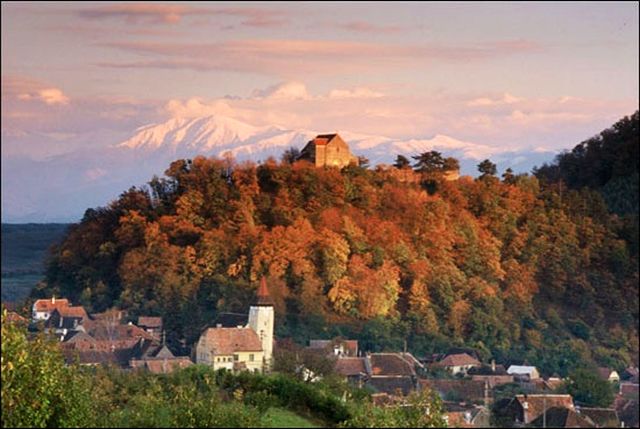
Transylvania
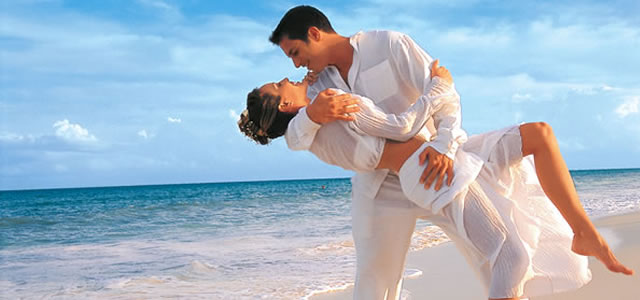
Romanian Romance: The Alternative Romantic European Getaway
Great article and very useful thanks.
What’s the journey like from Otopeni Airport to Bucharest Railway Station and onward to Constanta by train? Is it straightforward for a non-Romanian speaker?
Thank you for the helpful info. Thinking of visiting in 2018 so looking ahead.
Georgi, I think your site is the most useful guide that I have seen on the internet.Thank you so much. My 20 year old granddaughter and I(82 years)are planning a trip to Romania and Bulgaria in May.We are mainly interested in non touristy places and especially interested in meeting ordinary people. I have been trying to locate B&Bs in private homes but the computer only comes up with hotels.On your site you mention agrotourism B&Bs that can be contacted at travel centers.Could you tell me if there is a list of recommended B&Bs.Any recommendations you could give us would be greatly appreciated.
Hi Georgi, I believed your site is the best that has given me detail pieces of information about Romania. I’m a Gambian businessman living in Dakar, Senegal. I and my wife would like to visit Romania in August for vacations, I would appreciate should you help me on how to pay for a hotel voucher or to get a travel agent in Romania. Looking forward to hearing from you ASAP
Kindest Regards Lamin Jallow
This site uses Akismet to reduce spam. Learn how your comment data is processed .
Update April 12, 2024
Information for u.s. citizens in the middle east.
- Travel Advisories |
- Contact Us |
- MyTravelGov |
Find U.S. Embassies & Consulates
Travel.state.gov, congressional liaison, special issuance agency, u.s. passports, international travel, intercountry adoption, international parental child abduction, records and authentications, popular links, travel advisories, mytravelgov, stay connected, legal resources, legal information, info for u.s. law enforcement, replace or certify documents.
Before You Go
Learn About Your Destination
While Abroad
Emergencies
Share this page:
Travel Advisory July 26, 2023
Romania - level 1: exercise normal precautions.
Reissued with obsolete COVID-19 page links removed .
Exercise normal precautions in Romania.
Read the country information page for additional information on travel to Romania.
If you decide to travel to Romania:
- Enroll in the Smart Traveler Enrollment Program ( STEP ) to receive Alerts and make it easier to locate you in an emergency.
- Follow the Department of State on Facebook and Twitter .
- Review the Country Security Report for Romania.
- Visit the CDC page for the latest Travel Health Information related to your travel.
- U.S. citizens who travel abroad should always have a contingency plan for emergency situations. Review the Traveler’s Checklist .
Embassy Messages
View Alerts and Messages Archive
Quick Facts
Three months beyond departure date.
1 page per stamp.
Not required for stays under 90 days.
Amounts over 10,000 Euros or equivalent must be declared.
Embassies and Consulates
U.S. Embassy Romania
4-6 Liviu Librescu Blvd. District 1 Bucharest, Romania Telephone: (+40) 21 200-3300, (+40) 21 270-6000 Fax: (+40) 21 200-3578 Email: [email protected]
Destination Description
Learn about the U.S. relationship to countries around the world.
Entry, Exit and Visa Requirements
- You must have a U.S. passport that is valid for at least three months beyond your departure date from Romania .
- With a valid U.S. passport book, U.S. citizens can stay up to 90 days in the Schengen area for tourism or business during any 180-day period. You must wait an additional 90 days before applying to re-enter the Schengen area.
- Departing Romania and then attempting to re-enter Romania does not “restart the clock.” U.S. citizens who depart Romania and return after spending less than 90 days in the Schengen will be admitted for the remainder of their 90-day stay. U.S. citizens attempting to re-enter Romania after having already spent 90 days in Romania the Schengen area may be denied re-entry to Romania.
- U.S. citizens who wish to stay longer than 90 days must obtain an extension (resident permit) from the Romanian Immigration Inspectorate .
- U.S. citizens traveling to Romania should also consult the CDC’s Romania website for immunization and other health information.
- U.S.-Romanian dual nationals should consult the Romanian Border Police website for information on exit requirements.
- If you have a temporary or permanent Romanian residence permit, be ready to present it upon request from local competent authorities.
Visit the Embassy of ROMANIA website for the most current visa information.
Traveling Through Europe : If you are planning to visit or travel through European countries, you should be familiar with the requirements of the Schengen Agreement.
- Your passport should be valid for at least three months beyond the period of stay if you plan on transiting a Schengen country review our U.S. Travelers in Europe page .
- You will need sufficient proof of funds and a return plane ticket .
- For additional information about visas for the Schengen area, see the Schengen Visa page.
- The U.S. Department of State is unaware of any HIV/AIDS entry restrictions for visitors to or foreign residents of Romania.
Find information on dual nationality , prevention of international child abduction and customs regulations on our websites.
Safety and Security
Terrorism: Terrorist groups and those inspired by such organizations are intent on attacking U.S. citizens abroad. Terrorists are increasingly using less sophisticated methods of attack – including knives, firearms, and vehicles – to more effectively target crowds. Frequently, their aim is unprotected or vulnerable targets, such as:
- High-profile public events (sporting contests, political rallies, demonstrations, holiday events, celebratory gatherings, etc.)
- Hotels, clubs, and restaurants frequented by tourists
- Places of worship
- Shopping malls and markets
- Public transportation systems (including subways, buses, trains, and scheduled commercial flights)
For more information, see our Terrorism page.
Crime: Reported types of crime include:
- Robbery, pick pocketing, internet scams, and credit card fraud are the most commonly reported crimes.
- Organized groups of criminals, sometimes including minors, operate in train stations, trains, subways, and busses.
- Money exchange schemes often involve individuals posing as plainclothes policemen who approach you, flash a badge, and ask for your passport and wallet. Insist on the presence of a uniformed police officer and request that any issues be resolved at the police station.
- If traveling on an overnight train, travel with a companion and in the highest class available.
- Do not leave your personal belongings unattended; stow them securely out of sight.
- Use ATMs located inside banks. You should check ATM machines for any evidence of tampering before use.
- Be extra cautious of your surroundings if using an internet café.
Be cautious about entering into contracts with Romanian businesses and/or organizations without legal assistance. The Romanian legal system is difficult for foreigners to navigate, making the assistance of a local attorney nearly essential.
International Financial Scams: See the Department of State and the FBI pages for information.
Internet romance and financial scams are prevalent in Romania. Scams are often initiated through Internet postings/profiles or by unsolicited emails and letters. Scammers almost always pose as U.S. citizens who have no one else to turn to for help. Common scams include:
- Romance/Online dating
- Money transfers
- Grandparent/Relative targeting
- Lotteries
- Bank overpayments
Victims of Crime: U.S. citizen victims of crime are encouraged to contact the U.S. Embassy for assistance. Report crimes to the local police at 112 and contact the embassy at (+40) 21 270-6000. Remember that local authorities are responsible for investigating and prosecuting crime.
See our webpage on help for U.S. victims of crime overseas .
We can:
- Help you find medical care
- Assist you in reporting a crime to the police
- Contact relatives or friends with your written consent
- Provide information regarding the victim’s role during the local investigation and following its conclusion
- Provide a list of local attorneys
- Provide our information on victim’s compensation programs in the U.S.
- Provide an emergency loan for repatriation to the United States and/or limited medical support in cases of destitution
- Help you find accommodation and arrange flights home
- Replace a stolen or lost passport
Domestic Violence: U.S. citizen victims of domestic violence are encouraged to contact the Embassy for assistance.
Tourism: The tourism industry is generally regulated and rules [with regards to best practices and safety inspections] are regularly enforced. Hazardous areas/activities are identified with appropriate signage and professional staff is typically on hand in support of organized activities. In the event of an injury, appropriate medical treatment is widely available throughout the country. Outside of a major metropolitan center, it may take more time for first responders and medical professionals to stabilize a patient and provide life-saving assistance. U.S. citizens are encouraged to purchase medical evacuation insurance .
- Romania is situated in a seismically active region and has a history of devastating earthquakes, with the greatest risk in Bucharest.
- Avoid contact with stray dogs. You may consult the CDC's Romania website for rabies immunization and other health information.
Local Laws & Special Circumstances
Criminal Penalties: You are subject to local laws. If you violate local laws, even unknowingly, you may be expelled, arrested, or imprisoned. Individuals establishing a business or practicing a profession that requires additional permits or licensing should seek information from the competent local authorities, prior to practicing or operating a business.
Be aware that recreational drug possession is not allowed in Romania, regardless of type or quantity. The penalty for possession of drugs for personal use can be imprisonment of up to three years.
Romania has strict regulations on importing/exporting firearms, other weapons, drugs, antiquities, local currency and gold or gold jewelry. Contact the Romanian Customs Office for specific information regarding customs requirements.
Furthermore, some laws are also prosecutable in the United States, regardless of local law. For examples, see our website on crimes against minors abroad and the Department of Justice website.
Arrest Notification: If you are arrested or detained, ask police or prison officials to notify the U.S. Embassy immediately. See our webpage for further information.
Counterfeit and Pirated Goods: Although counterfeit and pirated goods are prevalent in many countries, they may still be illegal according to local laws. You may also pay fines or have to give them up if you bring them back to the United States. See the U.S. Department of Justice website for more information.
Faith-Based Travelers: See the following webpages for details:
- Faith-Based Travel Information
- International Religious Freedom Report – see country reports
- Human Rights Report – see country reports
- Hajj Fact Sheet for Travelers
- Best Practices for Volunteering Abroad
LGBTQI+ Travelers: There are no legal restrictions on same-sex sexual relations or the organization of LGBTQI+ events in Romania. The annual gay pride parades in Bucharest have been the scene of violent protests in past years, though this has been less common recently.
See our LGBTQI+ Travel Information page and section 6 of our Human Rights report for further details.
Travelers with Disabilities: The law in Romania prohibits discrimination against persons with physical, sensory, intellectual or mental disabilities, and the law is enforced. Social acceptance of persons with disabilities in public is not as prevalent as in the United States. The most common types of accessibility may include accessible facilities, information, and communication/access to services/ease of movement or access. Expect accessibility to be limited in public transportation, lodging, communication/information, and general infrastructure. There is a significant difference between the large cities and the rest of the country.
Availability of rental, repair, replacement parts for aids/equipment/devices, or service providers, such as sign language interpreters or personal assistants is very limited. Contact the Embassy for information on providers.
Students: See our Students Abroad page and FBI travel tips .
Women Travelers: See our travel tips for Women Travelers .
Medical care in Romania is generally not up to Western standards, and basic medical supplies are limited, especially outside major cities. Some medical providers that meet Western quality standards are available in Bucharest and other cities but can be difficult to identify and locate.
Hospitals and doctors often require payment “up front” prior to service or admission. Credit card payment is not always available. Most hospitals and medical professionals require cash payment. Travelers seeking medical treatment should therefore choose their provider carefully.
Psychological and psychiatric services are limited outside of the larger cities, with hospital-based care only available through government institutions.
Most prescription drugs and over-the-counter medications are available in Romania but are often sold under different names. A list of approved medicines available in Romania can be found on the website of the Romanian National Agency for Medicines and Medical Devices .
Ambulance services are not present throughout the country and are unreliable in some areas except in or around major cities.
We do not pay medical bills. Be aware that U.S. Medicare/Medicaid does not apply overseas. Most hospitals and doctors overseas do not accept U.S. health insurance.
Medical Insurance: Make sure your health insurance plan provides coverage overseas. Most care providers overseas only accept cash payments. See our webpage for more information on insurance coverage. Visit the U.S. Centers for Disease Control and Prevention for more information on type of insurance you should consider before you travel overseas.
We strongly recommend supplemental insurance to cover medical evacuation.
Always carry your prescription medication in original packaging, along with your doctor’s prescription. Check with the Romanian National Agency for Medicines and Medical Devices to ensure the medication is legal in Romania.
Vaccinations: Be up-to-date on all vaccinations recommended by the U.S. Centers for Disease Control and Prevention.
Further health information:
- World Health Organization
- U.S. Centers for Disease Control and Prevention (CDC)
Air Quality: Air pollution is a significant problem in several major cities in Romania. Consider the impact seasonal smog and heavy particulate pollution may have on you and consult your doctor before traveling if necessary. Visit AirNow Department of State for information on air quality at U.S. Embassies and Consulates.
The U.S. Embassy maintains a list of doctors and hospitals . We do not endorse or recommend any specific medical provider or clinic.
Travel and Transportation
Road Conditions and Safety: Though Romanian traffic laws are very strict, road accidents are a real threat in Romania. According to the European Commission, Romania has the highest per-vehicle rate of road fatalities of any country in the EU.
While major streets in larger cities and major inter-city roads are generally in fair to good condition, many secondary roads are poor quality unpaved, poorly lit, narrow, and lacking marked lanes.
- Mountain roads are dangerous when wet or covered with snow or ice. Snow removal is intermittent.
- Mountainous areas can be subject to torrential rains and flash floods, especially in the spring and summer.
- Streets and sidewalks are often icy and hazardous during winter.
- It is common for pedestrians, animals, cyclists, and horse-drawn carts to share a road with motor vehicles, especially in rural areas.
- Parked vehicles often block sidewalks, forcing pedestrians to walk in the streets.
- Cross only at crosswalks and exercise vigilance as crosswalks are generally poorly marked.
- Although emergency services and road assistance services exist, it is advisable to carry spare tires, fuel and tools. The law requires motorists to carry a first aid kit, fire extinguisher and reflective triangles. This obligation has been eliminated for motorcycles and mopeds.
Traffic Laws: Romanian traffic laws are very strict.
- The traffic police can confiscate a driver's license or permit for 1-3 months and request payment of fines at the time of the infraction.
- Police are required to give all drivers involved in an accident a breathalyzer test on the scene.
- Refusal to take a breathalyzer test may result in criminal penalties regardless of whether or not alcohol was involved.
- Wearing a seat belt is mandatory.
- Children under 12 years of age may not be transported in the front seat.
- Use of mobile phones while driving is banned, with exception of hands free systems.
- The driver of a vehicle involved in an accident resulting in death or injury of a person must immediately call the emergency number 112, and must not move the vehicle, alter or leave the scene of the accident.
- In the case of an accident that only caused damage to the vehicles, drivers must move the vehicles to the side of the road, signaling their presence, and report the accident to the police or exchange insurance information and fill out an amicable accident report.
Use of U.S. state issued drivers’ licenses (DL) is not sufficient to operate motor vehicles in Romania. U.S. citizens arriving in Romania for stays up to 90 days may use their U.S. state drivers’ licenses only when accompanied by an International Driving Permit . Most rental car companies require international driving permits when renting a car to a U.S. driver’s license holder.
For current traffic regulations and speed limits in Romania please visit the website of the Romanian Ministry of Foreign Affairs .
If entering Romania by vehicle you must purchase a road tax badge, “rovinieta”, at the border crossing point. Proof of insurance and a car registration document are required. Drivers of vehicles registered abroad who are not in possession of a valid international insurance document must buy short-term insurance at the border.
Public Transportation: Public transportation in Romania is inexpensive and reliable. Inner city travel options include a variety of buses, trams, trolleybuses, and “maxitaxis” (private vans operating as shared taxis).
- You can purchase bus or tram tickets at street kiosks before boarding and validate the ticket once aboard.
- For “maxitaxis” you may buy a ticket directly from the driver.
For additional travel information
- Enroll in the Smart Traveler Enrollment Program (STEP) to receive security messages and make it easier to locate you in an emergency.
- Call us in Washington, D.C. at 1-888-407-4747 (toll-free in the United States and Canada) or 1-202-501-4444 (from all other countries) from 8:00 a.m. to 8:00 p.m., Eastern Standard Time, Monday through Friday (except U.S. federal holidays).
- See the State Department’s travel website for the Worldwide Caution and Travel Advisories .
- Follow us on Twitter and Facebook .
- See traveling safely abroad for useful travel tips.
Romania was cited in the State Department’s 2022 Annual Report to Congress on International Child Abduction for demonstrating a pattern of non-compliance with respect to international parental child abduction. Review information about International Parental Child Abduction in Romania . For additional IPCA-related information, please see the International Child Abduction Prevention and Return Act ( ICAPRA ) report.
Travel Advisory Levels
Assistance for u.s. citizens, romania map, learn about your destination, enroll in step.

Subscribe to get up-to-date safety and security information and help us reach you in an emergency abroad.
Recommended Web Browsers: Microsoft Edge or Google Chrome.
Check passport expiration dates carefully for all travelers! Children’s passports are issued for 5 years, adult passports for 10 years.
Afghanistan
Antigua and Barbuda
Bonaire, Sint Eustatius, and Saba
Bosnia and Herzegovina
British Virgin Islands
Burkina Faso
Burma (Myanmar)
Cayman Islands
Central African Republic
Cote d Ivoire
Curaçao
Czech Republic
Democratic Republic of the Congo
Dominican Republic
El Salvador
Equatorial Guinea
Eswatini (Swaziland)
Falkland Islands
France (includes Monaco)
French Guiana
French Polynesia
French West Indies
Guadeloupe, Martinique, Saint Martin, and Saint Barthélemy (French West Indies)
Guinea-Bissau
Isle of Man
Israel, The West Bank and Gaza
Liechtenstein
Marshall Islands
Netherlands
New Caledonia
New Zealand
North Korea (Democratic People's Republic of Korea)
Papua New Guinea
Philippines
Republic of North Macedonia
Republic of the Congo
Saint Kitts and Nevis
Saint Lucia
Saint Vincent and the Grenadines
Sao Tome and Principe
Saudi Arabia
Sierra Leone
Sint Maarten
Solomon Islands
South Africa
South Korea
South Sudan
Switzerland
The Bahamas
Timor-Leste
Trinidad and Tobago
Turkmenistan
Turks and Caicos Islands
United Arab Emirates
United Kingdom
Vatican City (Holy See)
External Link
You are about to leave travel.state.gov for an external website that is not maintained by the U.S. Department of State.
Links to external websites are provided as a convenience and should not be construed as an endorsement by the U.S. Department of State of the views or products contained therein. If you wish to remain on travel.state.gov, click the "cancel" message.
You are about to visit:

Touropia Travel
Discover the World
15 Top Tourist Attractions in Romania
By Mike Kaplan · Last updated on April 15, 2024
If you think Romania is just about vampires lurking in dark castles, just waiting to pounce on unsuspecting tourists, think again. Transylvanian vampires loom large, of course, but Romania is so much more than Bram Stoker’s Count Dracula and his Brukenthal Palace. Romania does have its share of medieval castles, but it also has pretty alpine scenery hat offers skiing in winter and hiking in summer. It’s got quaint villages and painted churches that are awesome. Just as awesome are the millions of birds that can be found in the Danube Delta where the river empties into the Black Sea. An overview of the top tourist attractions in Romania:
15. Wooden Churches of Maramures
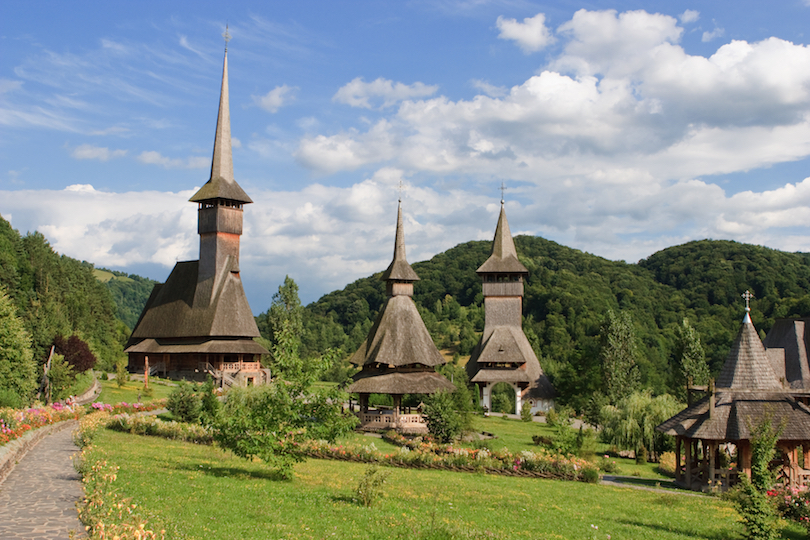
When foreign rulers of Maramures refused to let the people build long-lasting stone churches, they turned to wood instead. They built about 300 wood churches over a 200-year period; only about 100 of these churches remain in use today. These Gothic structures are mostly Orthodox but there are a few Greek Catholic churches. The churches, usually with tall, slim bell towers, reflect an advanced degree of carpentry. They are both simple and elegant at the same time. Hand painted murals decorate the inside of many churches.
14. Vaser Valley Forestry Railway
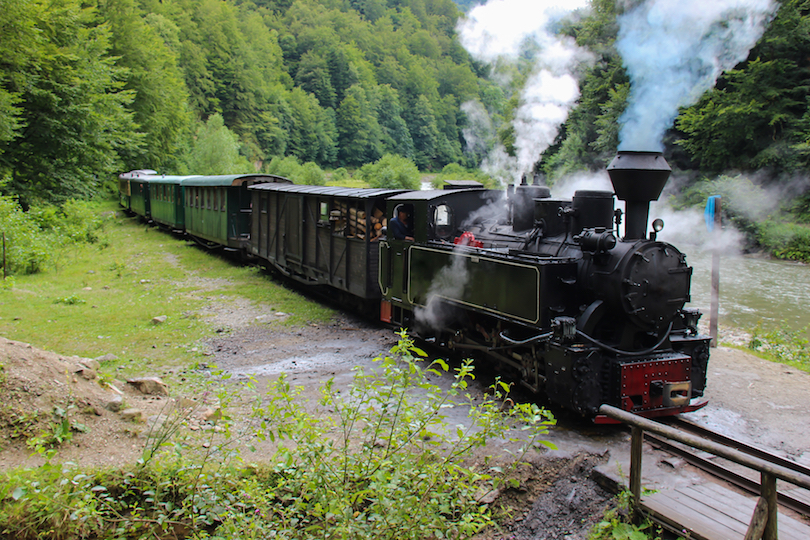
Take a trip back in time as you ride through the forests of the Carpathian Mountains on a steam-powered train. Running along the Vaser River, the Vaser Valley Forestry Railway has been in operation since 1932 when it was used to haul logs from the forest to the mill. Today, it also hauls tourists who like the romance of old, narrow gauge trains traveling through pretty, tree-filled landscapes. The ride stops at Paltin where you have two hours to enjoy the scenery and a picnic lunch.
13. Danube Delta
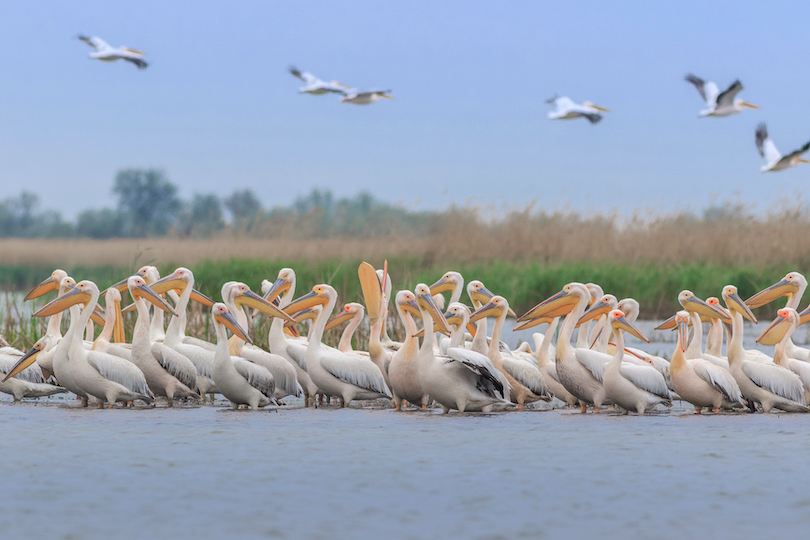
If you’re a nature lover, indulge yourself at the Danube Delta, the largest preserved river delta in Europe; the largest part is in Romania. Be sure to bring binoculars with you, as this is a paradise for watching wildlife, especially birds. Birds flock here from as far away as Egypt and China to breed or winter over. The willow-lined canals offer a great environment for the 300 bird species found here. You’ll also find wildlife such as wildcats, wolves and the occasional boar.
12. Poiana Brasov
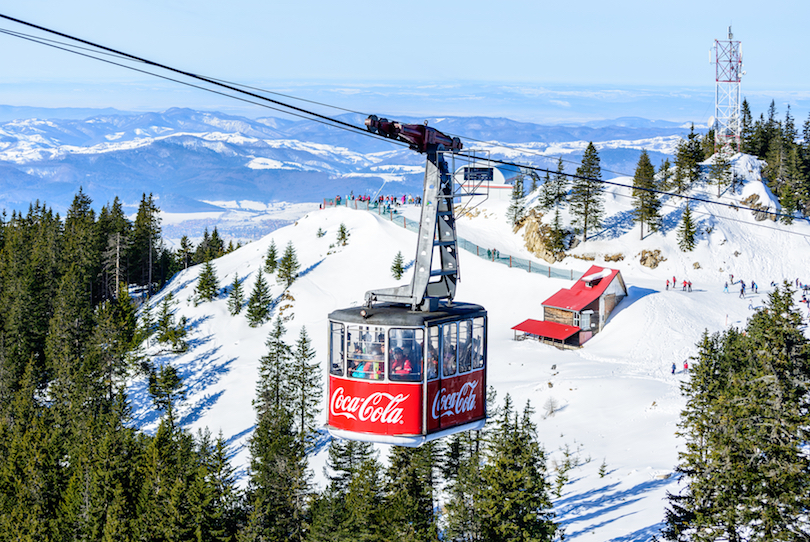
When you get tired of seeking out vampires, consider Poiana Brasov for a change of pace. It’s the most popular ski resort in Romania that also draws skiers from all over Europe. Located in the Carpathian Mountains, the ski resort has seven slopes that offer a combined 25 km (15 miles) of skiing. The resort also hosts competitive alpine skiing and figure skating events. After a day on the slopes, warm yourself up with a traditional mulled wine or try some tuică, a plum based pepper-spiced drink.
11. Corvin Castle
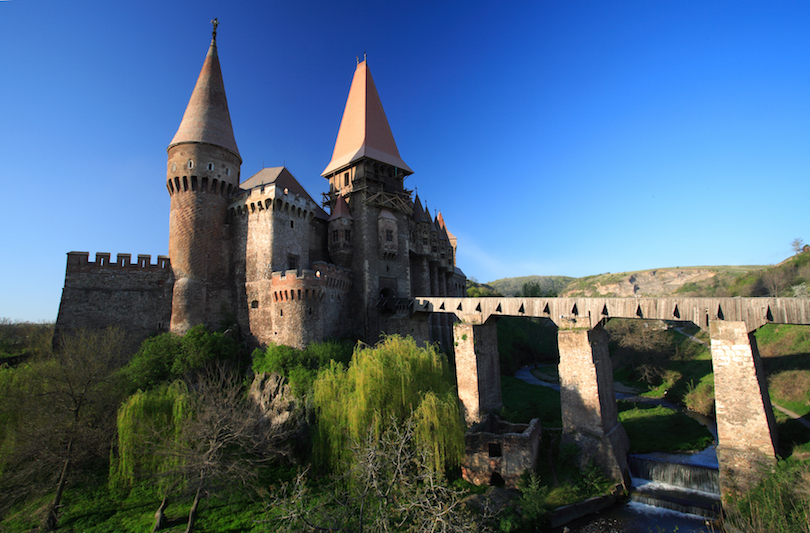
Corvin Castle is an imposing medieval, Gothic structure, considered the most impressive medieval castle in Romania. It also is known as Hunyad Castle after the high-ranking official who built it. Corvin Castle is a fairytale castle that is accessed by a wooden bridge that bears a statue of St. John of Nepomuk, the patron saint of bridges. A raven wearing a gold ring is a symbol of the 15th century castle. See, too, the bear pit and the dungeon where people were tortured.
10. Sucevita Monastery
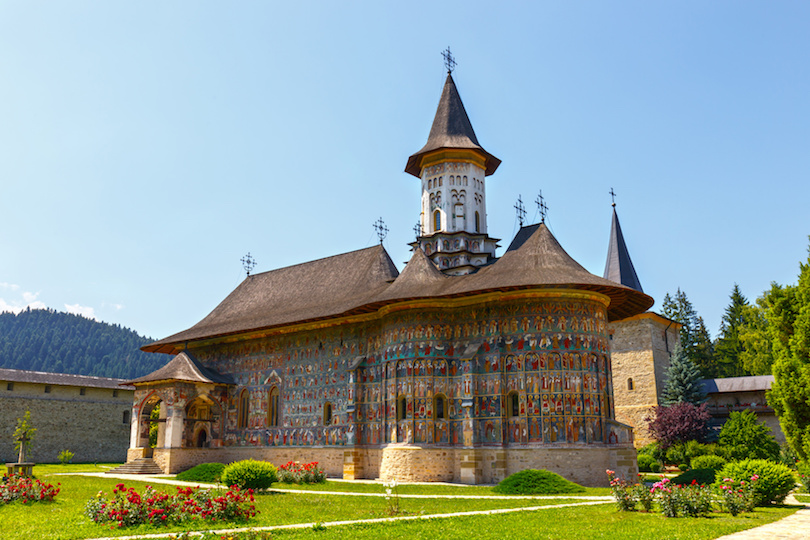
The Sucevita Monastery is architecturally unique, no doubt about that. Somehow the blend of the Gothic and Byzantine styles, plus Moldavia’s painted churches comes together in a spectacular building. The front is cylindrical, topped with a conical roof while the back is rectangular and topped with a small tower. Inside, you’ll find painted murals from the early 1600s and tomb covers embroidered with silver thread. The monastery, located in northeast Romania, is considered one of the most important painted churches in Moldavia.
9. Salina Turda
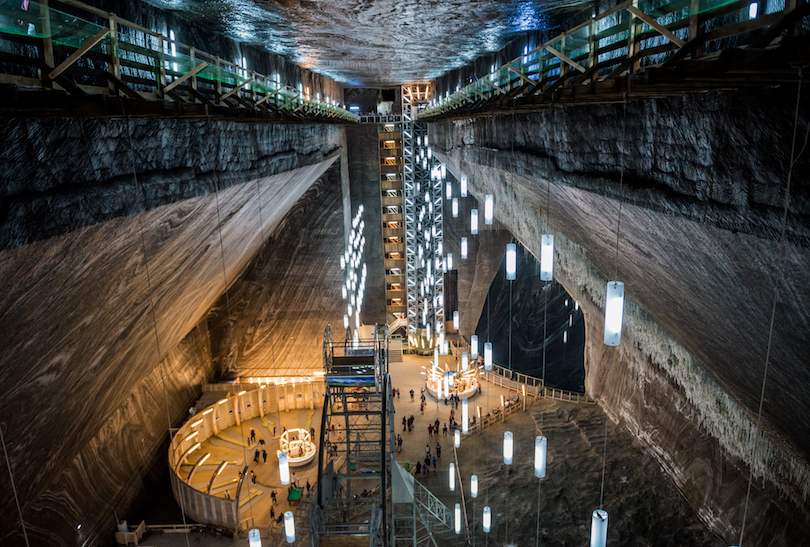
If you feel like you’re working in a salt mine at home, then you should feel comfortable at Salina Turda. The salt mine, which dates as far back as the 17th century, was used for everything from a cheese storage center to a bomb shelter in WWII after excavations stopped in 1932. Today, it has been transformed into an incredible sci-fi theme park. Located in Ciuj County, Salina Turda has been called one of the coolest underground places in the world. When you visit, you’ll head down about 120 meters (400 feet) before reaching the submerged wonderland. Once inside, you’ll find an amphitheater, a bowling alley, an underground lake with prow boats, and even a Ferris wheel.
8. Transylvanian Alps
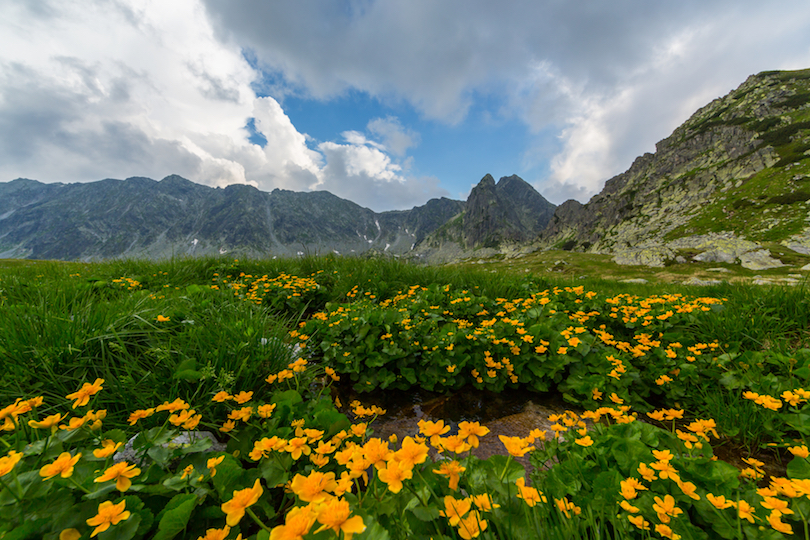
The Transylvanian Alps, also known as the Southern Carpathians, aren’t as high as the Rockies or the Himalayas, usually under 2,000 meters in elevation. The exception is Mount Moldoveanu, at 2,544 meters (8,346 feet), the highest point in Romania. The rugged mountains, dotted with sheep-filled meadows with wildflowers, offer some pretty good hiking in the summer and skiing in the winter. Couch potatoes can visit a mist-shrouded Gothic castle instead as they hunt for legendary vampires on their own turf.
7. Biertan Fortified Church
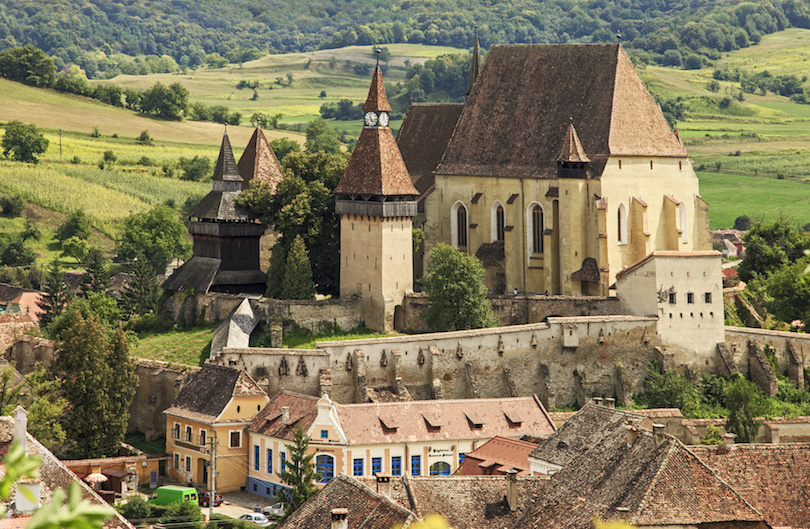
Biertan Fortified Church stands head and shoulders above the other buildings in Biertan, It was originally a Catholic church built when the region belonged to Hungary. It became a Lutheran church after the Reformation. Rather than build a fortress to defend against Ottoman invaders, townspeople fortified the church. Built in Late Gothic style, it is one of the largest fortified churches in Romania. The church is noted for its towers, including one used to store food during sieges and another to imprison husbands who wanted a divorce.
6. Piata Mare
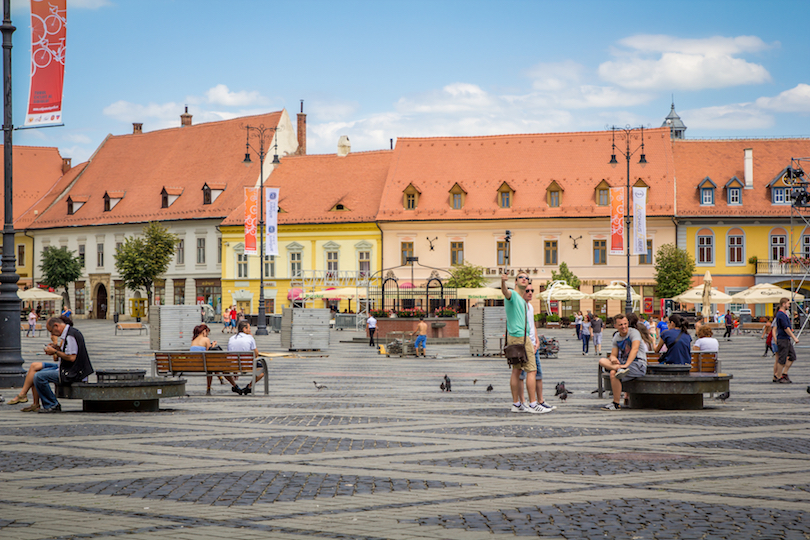
Surrounded by medieval buildings, the Plata Mare, or Big Square as it’s known in English, is a must-see sight in the Transylvanian city of Sibiu. The square had its beginning as a cereal market in the early 15th century. A few decades later, the Tailors’ Guild building went up. It was followed by houses, a Jesuit church and Brukenthal Palace. Big Square was a place for public gatherings, including festivals and beheadings. It was place to see troublemakers as they were displayed in the “lunatic’s cage.”
5. Merry Cemetery
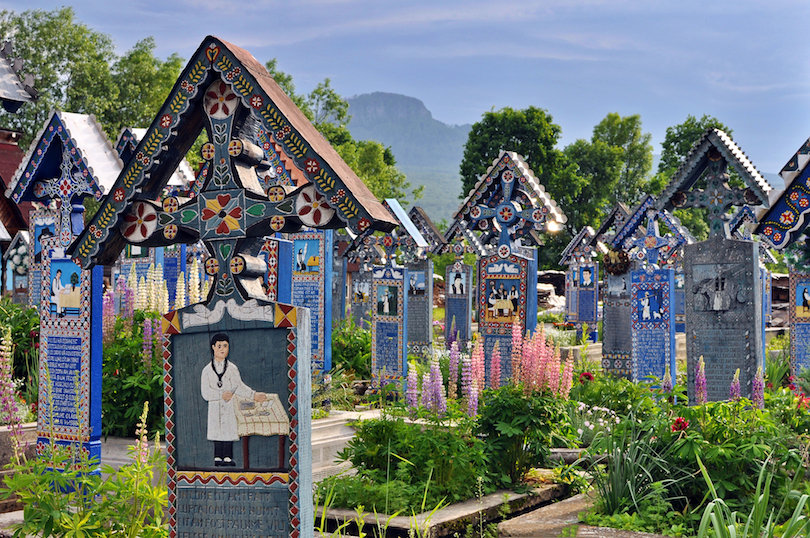
Merry Cemetery in the town of Sapanta isn’t your ordinary run-of-the-mill cemetery. It’s more like a folk art gallery, with colorful tombstones, crosses and statuary celebrating the lives of the deceased. This colorful tradition began with a 14-year-old boy who began carving crosses in 1908. He added poems and painted a portrait of the deceased on the cross; sometimes he even painted how they died. And thus a tradition was born. The background on everything is deep blue, with other colors symbolizing life, death and fertility.
4. Peles Castle
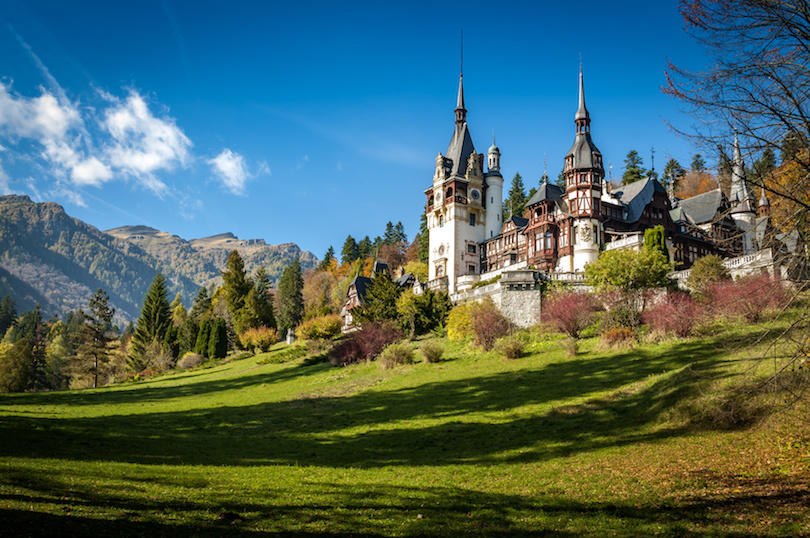
Peles Castle doesn’t have a history of sieges and warfare but it does have something other European castles don’t: spectacular beauty, sitting as it does on a Carpathian hillside. This Neo-Renaissance castle was built by King Carol I who vacationed here in the 1860s. Fairytale-like in appearance, it’s considered one of the most stunning castles in Europe. A 4,000-piece weapons collection reflects the king’s military interests, while a movie room decorated with frescoes reflects the queen’s artistic interests. The first movie shown in Romania aired here.
3. Palace of Parliament
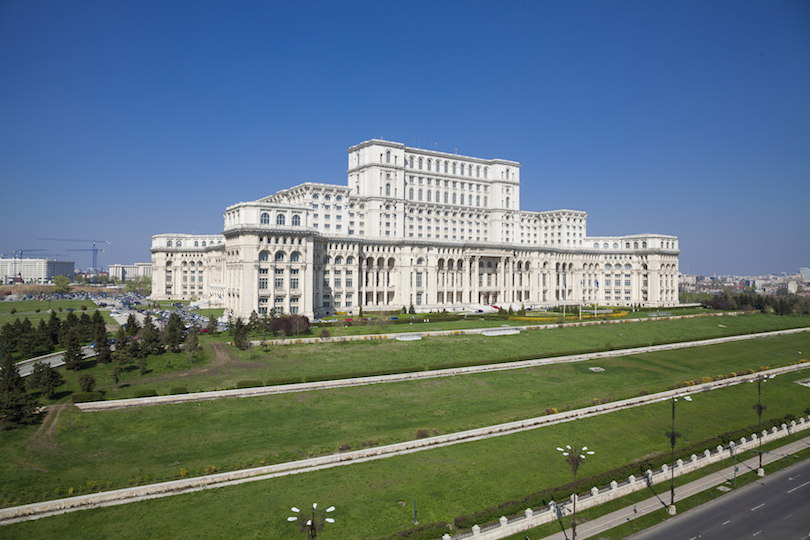
In a country where medieval buildings abound, there’s nothing medieval about the Palace of Parliament in the capital Bucharest . It is a thoroughly modern complex that is considered the largest administrative building in the world. It took 20,000 workers, working around the clock, 13 years to build it. It is an architectural wonder involving 700 architects and design specialists. The palace is a popular tourist attraction with foreigners, but not so much with the locals since it was built by Romania’s hated leader, Nicolae Ceaușescu.
2. Sighisoara Historic Center
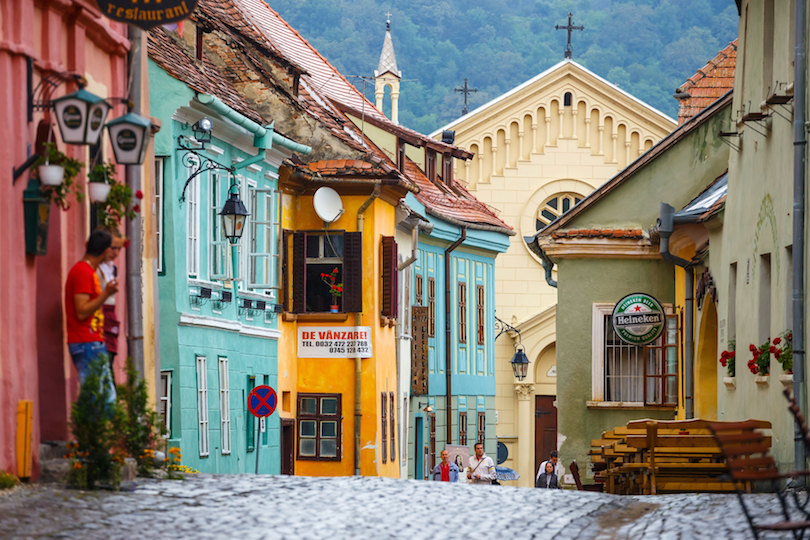
If you have preconceived notions of what medieval life was like, Sighisoara Historic Center will certainly fulfill them. Old Town Sighisoara is definitely medieval at its finest. Found by 12th century Transylvanian Saxons, Sighisoara is a great example of a fortified medieval town. It has the traditional narrow streets flanked by colorful stone buildings. It is the birthplace of Vlad the Impaler, the inspiration for Bram Stoker’s Dracula. Sighisoara celebrates its medievalness every July with a festival that includes rock bands.
1. Bran Castle
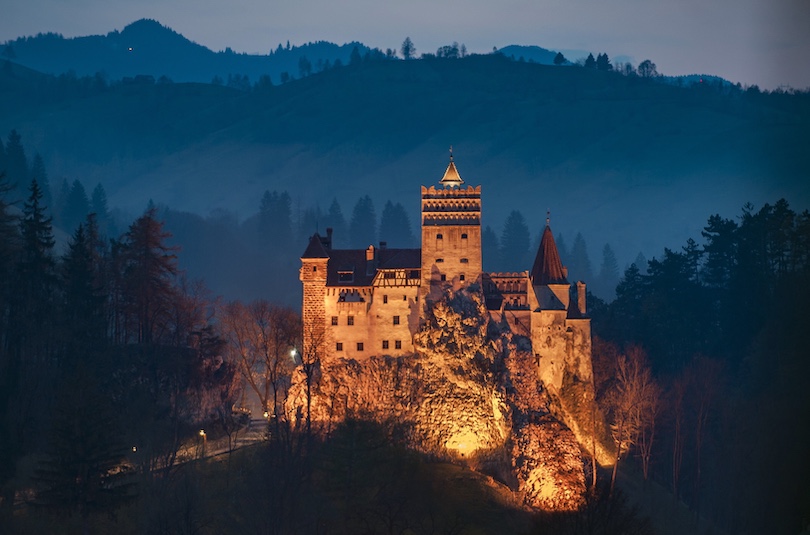
Bran Castle is often associated with Dracula as his home, though there’s no indication that author Bram Stoker even knew of this medieval castle. The castle, a Romanian landmark, has a fairy tale quality, peeking out from forested a hillside near Brasov in Transylvania. With roots dating to the 13th century, this medieval castle today is a museum showcasing art and furniture collected by Queen Maria. It also is home to an open-air museum featuring Romanian peasant buildings from around the country.
Map of Tourist Attractions in Romania
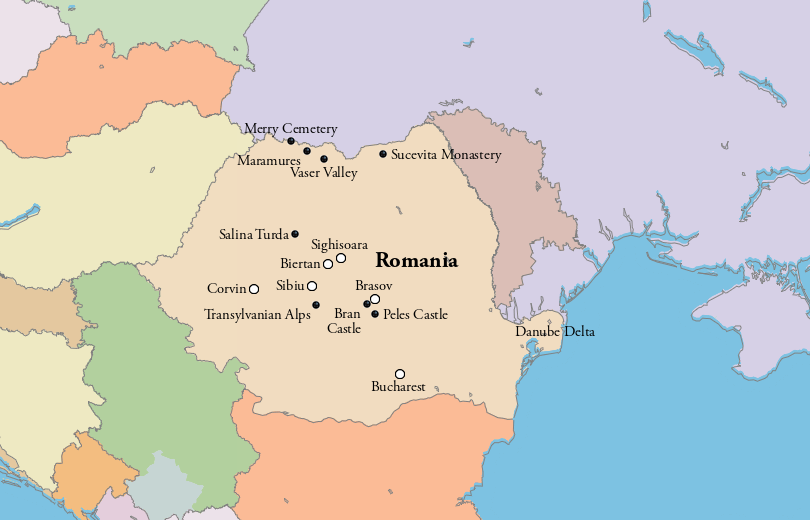
Share this post:
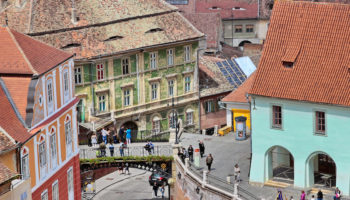
12 Best Cities to Visit in Romania
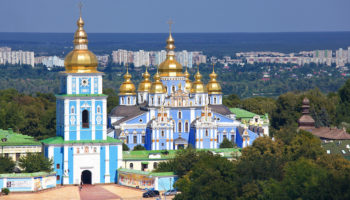
25 Best Places to Visit in Eastern Europe
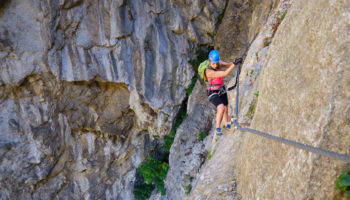
17 Best Things to Do in Romania
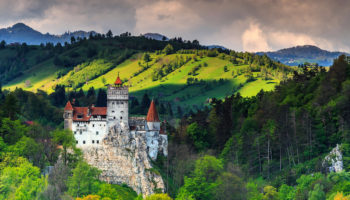
9 Most Beautiful Regions in Romania
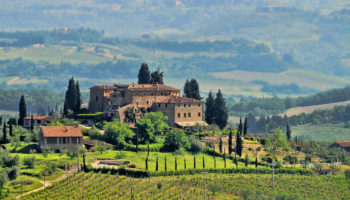
6 Most Beautiful Regions of Europe

10 Best Places to Visit in Romania
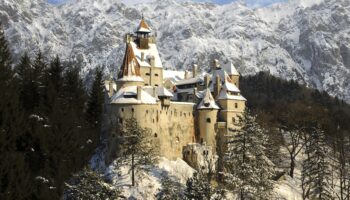
Bran Castle: A Scenic Train Ride to Romania’s Legendary Castle
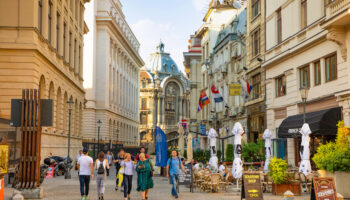
17 Top Tourist Attractions in Bucharest, Romania
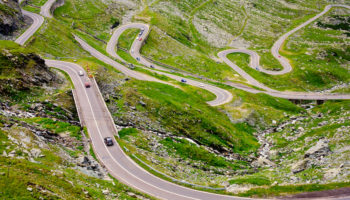
7 Best Day Trips from Bucharest
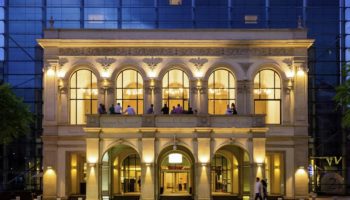
Where to Stay in Bucharest: 8 Amazing Hotels
- Latest news

Daily news highlights
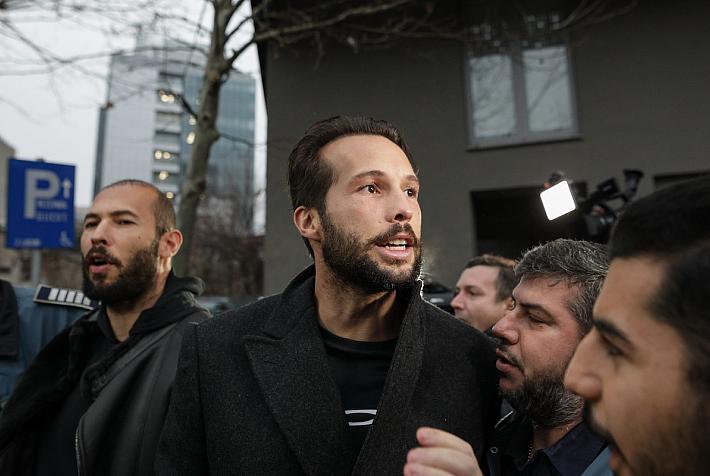
Capital Markets powered by BSE
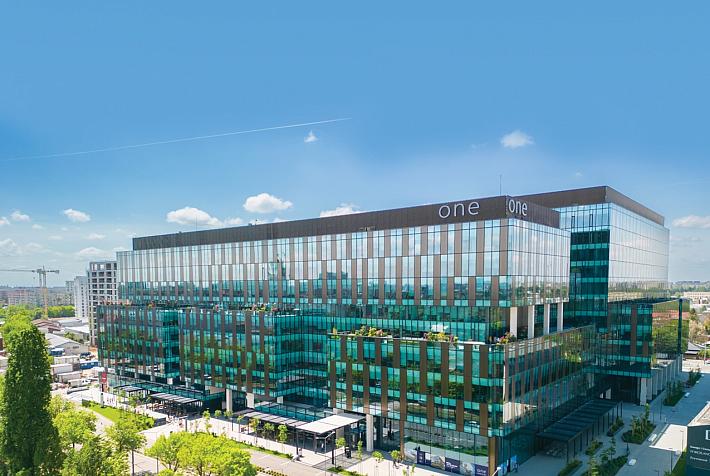
News from Companies

Latest Interviews

Real Estate

Partner Content

Discover Romania
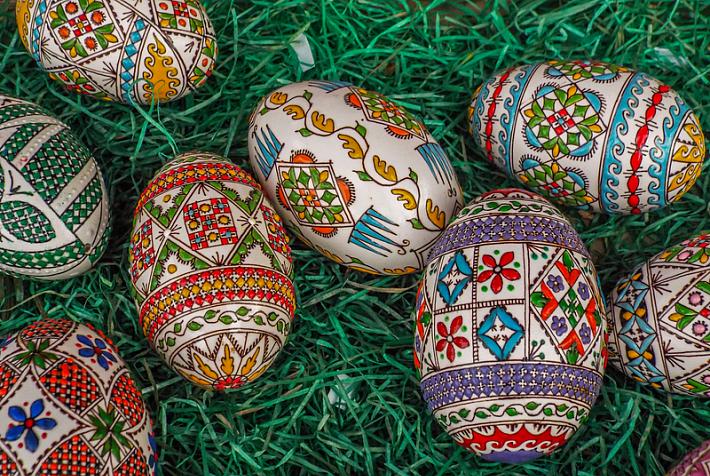
Latest News

Latest Press Releases

Capital Markets is powered by the Bucharest Stock Exchange

Take your pick from a wide list of free newsletters in English dedicated to Romania
Editor's picks.

Community highlights

From our Partners

German group Bosch inaugurated the second office building of its Engineering Center in Cluj, Romania, following an...
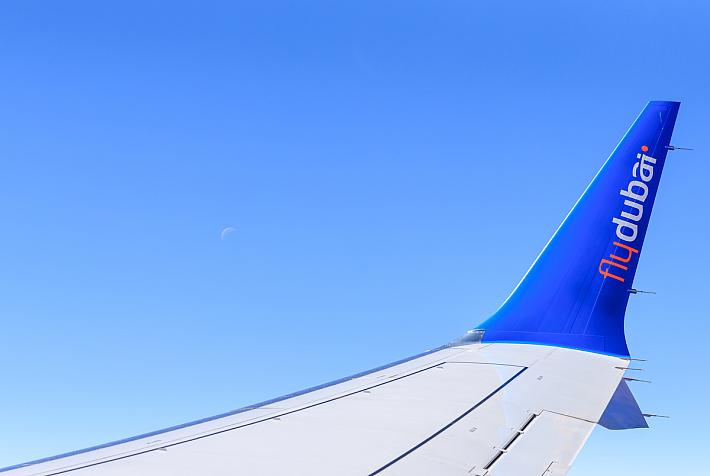
flydubai decided to open a new office in Bucharest, in the Eminescu Offices building, according to Cushman & Wakefield...
Nusco Imobiliara, part of the Nusco group controlled by Italian family Nusco in Romania, contracted a EUR 31.4 million...
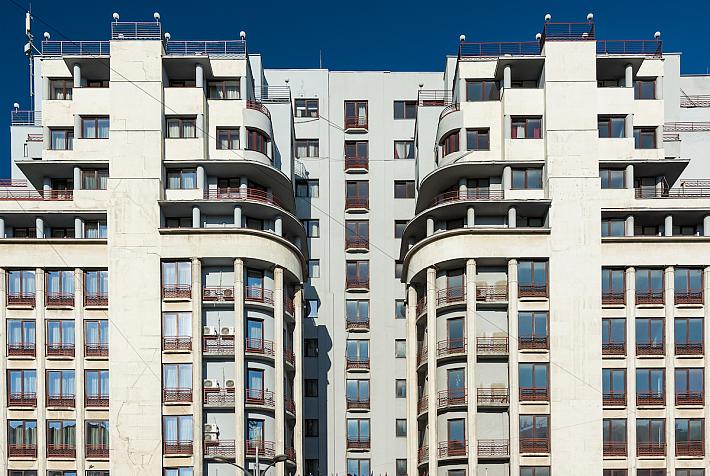
Julius Meinl Living announced the completion of the acquisition of the Ambassador hotel in downtown Bucharest, with an...
Discover Romania highlights
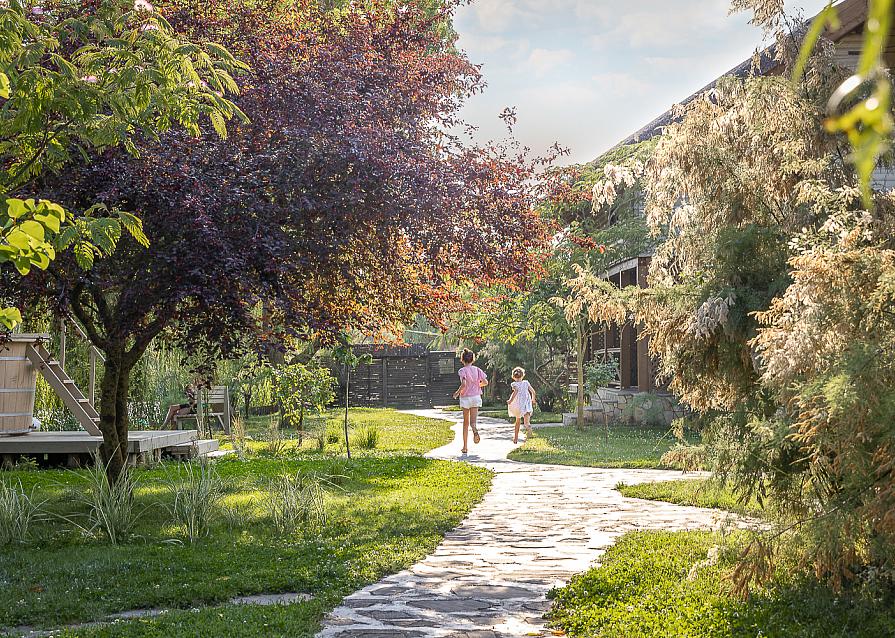
- Special Offers

Romania Entry Requirements
Trip planner.
- Entry Requirements
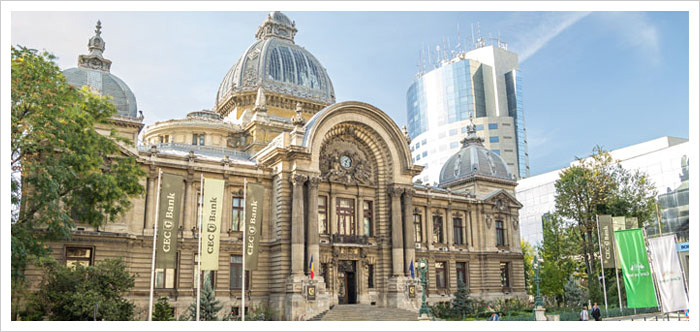
- Travel Documents / Entry Visa Documents for admission into Romania Romanian Entry Visa Schengen Visas
- Travel with Pets Pet Entry Requirements Pet transportation / Travel with pets in Romania trains, bus, subway.
Driving in Romania
Travel documents.
A valid passport is required for all overseas/ non-EU visitors. Your passport must be valid for the entire duration of your visit (it will not expire sooner than your intended date of departure). However, please check the expiration date on your passport carefully before traveling to Europe. Some airlines (i.e. Lufthansa) may refuse boarding at your point of origin or while transferring planes if your passport is not valid for at least three months beyond your intended date of departure; or your entry into the Schengen Area could be denied. For this reason, the U.S. Department of State – Bureau of Consular Affairs recommends that your passport has at least six months' validity remaining whenever you travel abroad.
For stays longer than 90 days visitors need to need to apply for a temporary residence permit (either before arriving into Romania or at least 30 days before the 90-day "no visa" stay expires). To apply for an extended stay visa please visit eVisa.MAE.ro Additional information are available from any Romanian Immigration Office
Citizens of the European Union countries can enter Romania with a valid passport or with their National Identity Card.
Depending on your citizenship, you may be required to show different documents at the port-of-entry.
American and Canadian citizens as well as citizens of Australia, New Zealand and most European countries do not need an entry visa to visit Romania, providing duration of stay is not more than 90 (ninety) days, accumulated during a single visit - or multiple visits - within a six-month period.
Citizens of certain countries and territories need a visa to visit Romania. To quickly check if you need a visa please visit www.E-Visa.MAE.ro (select the "Get Informed" tab (up left) and enter the following information: passport issuing country, type of passport, purpose of your visit to Romania). Entry requirements and visa information are also available at www.mae.ro .
Please send all inquiries regarding visa and entry requirements to the nearest Consulate of Romania . RomaniaTourism has no authority or expertise to answer questions regarding travel documents or visa.
» List of countries whose nationals, bearer of a regular passport, are exempt from the requirement of a Romanian visa.
» List of countries whose nationals, bearer of diplomatic, service, official passport and seamen's books, are exempt from the requirement of a Romanian visa.
» List of countries whose nationals, holders of regular passport, need a visa to enter Romania.
Schengen Visas validity in Romania
Romania partially joined Schengen area of free movement opening up travel by air and sea without border checks. Border checks will continue to apply for those travelling by land between either Bulgaria or Romania and other Schengen area countries. Effective April 1 2024, the Consulates of Romania issue standard short-term Schengen C visas, as per recent EU directives. Schengen Visa holders do not need to get a (special) Romanian visa to visit Romania as long as number of entries and/ or length of stay has not been not exhausted. More info concerning Romania visa requirements / Schengen visa. The Schengen visa zone includes 25 EU member countries along with four non-EU states: Iceland, Liechtenstein, Norway, and Switzerland.
No immunizations or unusual health precautions are necessary or required. Romania has no infectious risks and there are no poisonous insects. There is no malaria in Romania. During the summer months mosquitoes are present in the Danube Delta and some low-lying regions. For your comfort take some mosquito repellent with you, if visiting Romania during the warm season.
Tap water is safe to drink; if you prefer, bottled water is inexpensive and widely available. Romania is home to more that 1/3 of the natural mineral springs in Europe. Some Romanian bottled waters are rated the best in the world for purity and taste and are exported to many foreign countries.
Naturally, we hope that you will never need to use any medical facilities. However, Romanian doctors are known for their high standard of medical education. The embassy of your country, to Romania, can probably provide a list of preferred physicians or medical facilities.
Travel with Pets in Romania
Leisure travelers or soon-to-be expatriates (departing from non-EU countries) generally fall within the EU regulations for non-commercial pet travel to Europe. The following EU regulations apply only to dogs, cats or ferrets. Please contact your Embassy/ Consulate (or the embassy of destination country) to determine what (if any) protocol to follow for other types of pets.
Documents needed to take your pet into Romania include:
1. Proof of rabies vaccinations - Rabbies Certificate (Your veterinarian issued documentation that proves rabies vaccination and disproves the existence of rabies in your pet, specifying that this documentation is certified for your travel to the EU). Your pet may not travel to Europe until at least 21 days after the primary rabies vaccine.
2. Pet's Health Certificate The health certificate must prove that your pet has had all its shots and is healthy enough to travel. Although this certificate is technically valid for 4 months, it is recommended to be completed and endorsed by the USDA within 10 days of travel to avoid any customs issues upon arrival. The results of a serological test and the pet's vaccination details must be attached to the health certificate. Obtain this documentation within 10 days of travel. For travel to Europe, an additional single-sheet EU Vet Health Certificate form must be filled out and certified by your vet.
3. Microchip Implantation Record Microchips provide electronic identification on your pet. If your pet doesn't already have a microchip you can easily get one. All original documentation must travel with your pet. Translation of documents is not needed if they are in English, French or German.
More info concerning pet movement from non-EU countries Romania Pet Travel check list
Dogs: must be kept in leash and wear a muzzle. Small pets and birds: must be kept in a cage at all times. Some municipalities might have additional regulations regarding travel with pets in city buses or trams. A small number of cities in Romania do not allow pets on board of their public transportation fleet.
Dogs: must be kept in leash and wear a muzzle at all times. Small pets and birds: must be kept in a cage at all times.
Dogs are allowed in second-class cars only; they must stay on the floor, in leash, and wear a muzzle at all times. If a passenger is allergic to pet-hair or is not comfortable in the presence of a dog, the owner of the dog must find a seat / place in another car. Dog's health certificate must be available for inspection by the train conductor.
A ticket is required for all (larger) dogs that do not travel in a pet-cage hold in the lap of the owner. The cost of a train ticket for a dog is 50% of the price of a ticket for an adult traveler.
Dog breeds with aggressive tendencies/ history (Pittbull, Boerboer, Bandogge) are not allowed on trains.
Each bus company has its own rules regarding pet travel / transportation.
Each airline has its own rules regarding pet travel / transportation. An international pet passport is required for pets traveling to EU / Schengen countries. Although there are uniform regulation within the EU, some European countries have additional own regulations regarding pets.
Romanians love pets; please don't be surprised or offended if someone you don't know tries to pet your dog or cat without asking permission.
Each hotel or restaurant has its own pet policy.
In general pets are allowed in hotels and restaurants. Many hotels will charge extra the guests bringing their pets.
Romania Customs Regulations
Romanian Customs regulations are in line with those of most European countries. A traveler can enter and leave Romania with up to 10,000 Euros (or equivalent) in cash or traveler's checks. Amounts over 10,000 Euros have to be declared when entering the country.
Items that must be declared at customs also include: art objects, historic artifacts, weapons, ammunition, explosive materials, toxic and hazadous substances.
- Tobacco: 40 cigarettes or 50 cigars or 250 g (100 oz) tobacco. - Liquor: 4 litres of still wine and 16 litres of beer or 2 litres of alcoholic drinks less than 45 proof or one litre of liquor stonger than 45 proof. (one litre = 33.8 fl. oz). - A reasonable quantity of gifts with a total value of up to $450. - Goods and medical products/ medicines for personal use. Customs officers do not usually check the luggage of individual travelers or tour groups. However, you must know that, as in any other country, custom officers have the authority to check passports and to conduct enforcement examinations without a warrant, ranging from a single luggage examination to a personal search. More information on European customs regulations
U.S. / Canadian / Australian / New Zealand / European drivers' licenses are valid and can be used for driving in Romania, by visitors who are in the country temporarily (less than 90 days).
Driving is on the right side of the road.
Independent travelers entering Romania by car (own or rental) need to obtain a road toll sticker, called "RoVinieta". RoVigneta is available on-line at Roviniete , and E_Rovinieta , as well as at border-crossing points, postal offices and most gas stations. Cost of RoVinieta for passenger cars is the Romanian currency equivalent of $3.50 (7 days) or $8.00 (30 days).
Romania Rules of the Road are available at RomaniaTourism Practical Information section
General emergency phone # : 112
- Distinctive Accommodations
- Practical Information
- Transportation
- Itinerary Ideas
- Upcoming Tours
- Special Offers & Best Buys
- Travel Advisory

Ukraine-Russia war latest: Russia could be shifting battlefield focus
Russia's focus on the battlefield may be shifting to areas other than around Avdiivka, according to a thinktank. Meanwhile, fire has broken out at a Russian oil refinery after Ukrainian drone attacks. Listen to a Daily podcast on whether the UK should send troops to Ukraine as you scroll.
Wednesday 1 May 2024 12:02, UK
- Fire at oil depot after drone strikes
- Signs Russian battlefield focus could be shifting
- In pictures: Apocalyptic city where Ukrainian troops are desperate for ammunition
- Your questions answered: Will Ukraine launch another spring offensive?
- Listen to the Sky News Daily above and tap here to follow wherever you get your podcasts
- Live reporting by Lauren Russell
A senior Russian defence official has reportedly been questioned by the Federal Security Service after the detention of one of his colleagues on bribery charges.
Ruslan Tsalikov is the "number three" in Moscow's defence ministry after Sergei Shoigu, the minister, and chief of the general staff Valery Gerasimov, the UK defence ministry says in its intelligence update today.
He was reportedly pulled in for questioning after the arrest of deputy defence minister Timur Ivanov, his close ally, on 21 April.
As first deputy defence minister, Mr Tsalikov ranks above Ivanov.
Ivanov is accused of accepting large bribes and will be kept in custody until 23 June after appearing at a Moscow district court last week.
He was in charge of property management, housing, construction and mortgages at the ministry - whose spending has spiralled since the Ukraine war began.
A number of defence ministers have already been questioned or detained after Ivanov's arrest.
The Russian military claims it has attacked the headquarters of the Ukrainian army's southern grouping.
The attack was carried out using Russian air force missiles and artillery, Moscow's defence ministry said.
It gave no further details about the attack but said that Russian forces were improving their positions along the entire frontline.
Ukrainian forces defending Chasiv Yar have said they are desperately waiting for more ammunition to arrive from the US.
Oleh Shyriaiev, commander of Ukraine's 225th Separate Assault Battalion, which is fighting in the eastern city, called specifically for long-range weapons.
He said they would "cut [Russian forces] off from logistics and supplies".
Commander Shyriaiev also called for cluster munitions, which are banned by a number of countries over the danger they pose to civilians.
Earlier, we reported that Russian troops appear to be concentrating advances in the direction of Chasiv Yar - which is 80km north of Avdiivka.
If captured, the city would give the Russians a better opportunity to target towns and cities further to the west.
The images below show the apocalyptic scenes in Chasiv Yar after bombardment by the Russians.
At least two people have been killed after Russian guided bombs struck the northeast Ukrainian region of Kharkiv.
A man and a woman were killed in their car as they travelled in the village of Zolochiv, Oleh Syniehubov, the regional governor, said.
A man, 77, and a woman, 74, were injured after three fires broke out after the strike.
Ten homes were also damaged.
The region of Kharkiv has been under intense fire by Russian forces targetting energy infrastructure.
Volodymyr Zelenskyy said yesterday that his country needed a "significant acceleration" in the delivery of weapons to enable its troops to push back advancing Russian troops in several parts of the frontline.
The Ukrainian security service (SBU) is today conducting counterintelligence measures in a Kyiv district.
Officials will inspect some buildings and premises searching for unspecified prohibited items, the SBU said.
The district of Shevchenkiv, including the Sofiyska and Mykhailivska squares in the old part of the city, is the main focus of the operation.
Checks will also be carried out on citizens, some of who may be asked to show identification documents and observe curfew.
The SBU said the national police force and the military law and order service will be involved.
An American man has admitted plotting to smuggle sensitive drone technology worth more than $250,000 (£200,000) into Russia.
Nikolay Grigorev, 36, pleaded guilty yesterday after more than 11,500 electronic components were stopped from going to Russia.
He faces up to five years in prison.
Lisa Monaco, deputy attorney general in New York, said: "The justice department will continue to hold accountable those who defy our sanctions and export controls to support Russia's unprovoked and unjustified aggression in Ukraine - whether they're based in New York City or overseas."
The justice department said it is still searching for two other people connected to the case.
These images show devastation in Kharkiv after Russian strikes yesterday.
One person died in the attack, which appeared to target the northeastern region's railway infrastructure.
Two districts of the city were hit and at least nine people were injured.
As we told you earlier, Sergei Shoigu, the Russian defence minister, has ordered new weapons for Moscow (see 6.56am post).
But what about weapons for Kyiv?
After a massive US military aid package was passed last week, deliveries to Ukraine have started.
The White House confirmed that on Monday.
"The aid into Ukraine is ongoing. They have been receiving that security assistance," White House press secretary Karine Jean-Pierre said.
"I want to be very careful, because there is operational security," she added, "but we hope that the aid will get to the frontlines soon so that Ukraine can continue to defend itself."
The bill, under which Ukraine will receive more than $60bn in support, was finally signed into law on 24 April after months of debate in the Republican-controlled House of Representatives.
Russia's focus on the battlefield may be shifting north of Avdiivka, according to a leading thinktank.
Moscow's forces have seen their considerable progress slow to the west of the city, with troops appearing to be concentrated in the direction of Chasiv Yar, the US-based Institute for the Study of War said.
Chasiv Yar is around 80km north of Avdiivka.
"The Ukrainian General Staff's morning and evening reports yesterday stated that Ukrainian forces repelled a total of 47 Russian attacks in the Avdiivka direction and 57 Russian attacks in the Bakhmut direction throughout the day, notably a much higher number of attacks in the Chasiv Yar direction than Ukrainian sources have recently reported out on," the ISW said.
"One day's worth of reporting is not sufficient to establish a pattern," it said, "but it may suggest that Russian forces are somewhat slowing down the rate of attacks around Avdiivka while re-committing to offensive pushes around Chasiv Yar."
Russia has reportedly set its sights on the strategic town of Chasiv Yar, which, if captured, would make it easier for Moscow to advance further in the east.
The ISW also highlighted recent Russian successes near Avdiivka, notably at Ocheretyne, northwest of Avdiivka, and Novokalynove, north of Avdiivka, but said "the rate of confirmed advances appears to have slowed".
Here's what the battlefield situation looks like, according to the ISW...
Russia's defence minister has ordered bigger and speedier weapon deliveries for its troops in Ukraine, the Russian defence ministry has said.
In a statement, the Kremlin's defence minister Sergei Shoigu said: "To maintain the required pace of the offensive it is necessary to increase the volume and quality of weapons and military equipment supplied to the troops, primarily weapons."
The comments were made days after Ukraine's troops were compelled to make a tactical retreat from three villages in the eastern region, where the Kremlin's forces have been making incremental gains.
Ukraine and its Western partners are in a race against the clock to deploy critical new military aid that can help check the recent steady Russian advance across eastern areas, as well as thwart drone and missile attacks.
Be the first to get Breaking News
Install the Sky News app for free


IMAGES
VIDEO
COMMENTS
Romania - Travel and Tourism information. Authentic, Natural and Cultural are the words that best capture the essence of Romania, a dynamic country rich in history, arts and scenic beauty.. Romania offers countless unique travel experiences that are waiting to be discovered. A journey of three to four hours, by car or train, can take you
For more information visit Travel Carpathia This article was amended on 24 October 2023. The area FCC would like to see protected as a national park is 200,000 hectares, not 100,000 as previously ...
OK, "Little Vienna" might be a stretch, but the Romanian city is a genuine, livable and multicultural place that offers just enough for visitors to fill two or three days.
The Making of a 'European Yellowstone'. A major conservation effort is underway in Romania. The goal is a new national park that will rival its American counterparts. The Southern Carpathian ...
Overall Romania Travel Guide. Get ready to embark on an adventure that goes beyond the ordinary, as we delve into the heart of Romania's charm and uncover the secrets that will make your visit an authentic and enriching experience. In this travel guide, I'll take you beyond the typical tourist spots, offering you a firsthand perspective and ...
Romania. Europe. Rugged stone churches and dazzling monasteries dot a pristine landscape of rocky mountains and rolling hills. Transylvanian towns have stepped out of time, while vibrant Bucharest is all energy. 01 / Attractions.
Situated in the southeastern corner of Europe, on the shores of the Black Sea, Romania has so far largely missed out on the global tourism boom. Tenuous associations with Bram Stoker's fictional Dracula have long lured travellers to Transylvania, but much of the rest of the country, with its beautiful mountains and river valleys, rustic villages, and vibrant cities, has only recently begun ...
These are the three villages from Romania that participated in the 2022 UNWTO Best Tourism Villages contest. Another must-do for 2023 is full immersion in the natural landscapes of the Carpathian Mountains, attractive for both summer and winter activities. The ski season on slopes between 600-1,800 meters lasts from December until March, and ...
The price start from €850 and it includes an expert guide, meals, transport, hotels and entrance fees to the attractions. Best of Romania and the Danube Delta Tour - On this 12 days tour you'll see some of the most amazing sites in Romania like the famous Bran Castle, the Rodna Mountains, and the breathtaking Danube Delta!
Best time to visit Romania. Best things to do in Romania. Find Dracula. Discover the carved face of Decabalus. Visit the wooden churches of Maramures. Take a steam train through a mountain pass. Discover the oldest history of Romania. Travel to the moon-like mud volcanoes. Visit the Fairy Tale Town of Sighisoara.
Tourism in Romania. Romania 's tourism sector had a direct contribution of EUR 5.21 billion to the Gross Domestic Product (GDP) in 2018, slightly higher than in 2017, placing Romania on the 32nd place in the world, ahead of Slovakia and Bulgaria, but behind Greece and the Czech Republic. The total tourism sector's total contribution to Romania ...
A reasonable budget per day if you're planning to travel to Romania is between 30-60 Euro for accommodation, meals and small expenses. In restaurants a main course is around 25-50 Lei (5-10 Euro), soups around 10-20 Lei (2-4 Euro), soft drinks start from 1,5 Euro while alcohol from 2 Euro. Entrance fees to tourist attractions range between 4-15 ...
The number of foreign tourists in Romania will increase by 70% to 4.6 million by 2035, according to the draft Tourism Sector Strategy 2023-2035 inked and launched for public debate by the Romanian ...
Tourism is an important sector of the economy of Romania. In 2019, tourism directly contributed RON 31.6 billion to Romania's economy, equating to 3.0% of total GDP. The sector directly supported 412 649 jobs, representing 6.3 % of total employment in Romania. The impacts of the COVID-19 pandemic saw tourism employment fall to 393 427 jobs in ...
Experience the Future of Tourism at the Romanian Tourism Fair, February 15-18, 2024 We are thrilled to welcome you to the Romanian Tourism Fair's spring. ... This fair is the perfect setting for forging new relationships, enhancing customer engagement, and discussing future trends with peers. It's an extraordinary platform for direct ...
In 2023, Romania's tourism sector accounted for 4.19 percent of the country's GDP. There are various relief features, such as the Carpathian Mountains, the Black Sea, the Danube Delta, and ...
Uncover Romania is a travel website about authentic Romania. We cover its must-see attractions and must-try experiences, famous or more local. You'll find everything you need to know for planning a vacation. It's also a great resource if you're curious to find out more about one of the most beautiful countries in Europe.
The perfect trip for those that are looking for sun, sea and sand while also getting to know the culture and history of both Bulgaria and Romania. Start and end in Bucharest and discover Constanta, Sunny Beach, Nessebar, Burgas and Madara Rider. view trip ⤍. 8 days / from1926 USD. The legend of Dracula.
Costs. Cheaper than much of Europe, Romania has nevertheless graduated from the dirt-cheap-trip category in recent years, with basic, modern hotel rooms edging into the €40-per-night level, and a sit-down meal with a beer, some meat and soup costing between €7 and €10 (and higher in Bucharest ). Car-hire rates tend to be high too - up ...
Call us in Washington, D.C. at 1-888-407-4747 (toll-free in the United States and Canada) or 1-202-501-4444 (from all other countries) from 8:00 a.m. to 8:00 p.m., Eastern Standard Time, Monday through Friday (except U.S. federal holidays). See the State Department's travel website for the Worldwide Caution and Travel Advisories.
It took 20,000 workers, working around the clock, 13 years to build it. It is an architectural wonder involving 700 architects and design specialists. The palace is a popular tourist attraction with foreigners, but not so much with the locals since it was built by Romania's hated leader, Nicolae Ceaușescu. 2. Sighisoara Historic Center
Discover Romania highlights. The most reliable media source for articles in English dedicated to Romania: latest news in business, politics and society, feature stories on business & life, with a ...
Documents needed to take your pet into Romania include: 1. Proof of rabies vaccinations - Rabbies Certificate. (Your veterinarian issued documentation that proves rabies vaccination and disproves the existence of rabies in your pet, specifying that this documentation is certified for your travel to the EU).
A 36-year-old US citizen has pleaded guilty to conspiring to smuggle over $250,000 (£200,000) worth of sensitive drone technology to Russia, the US Department of Justice has said.